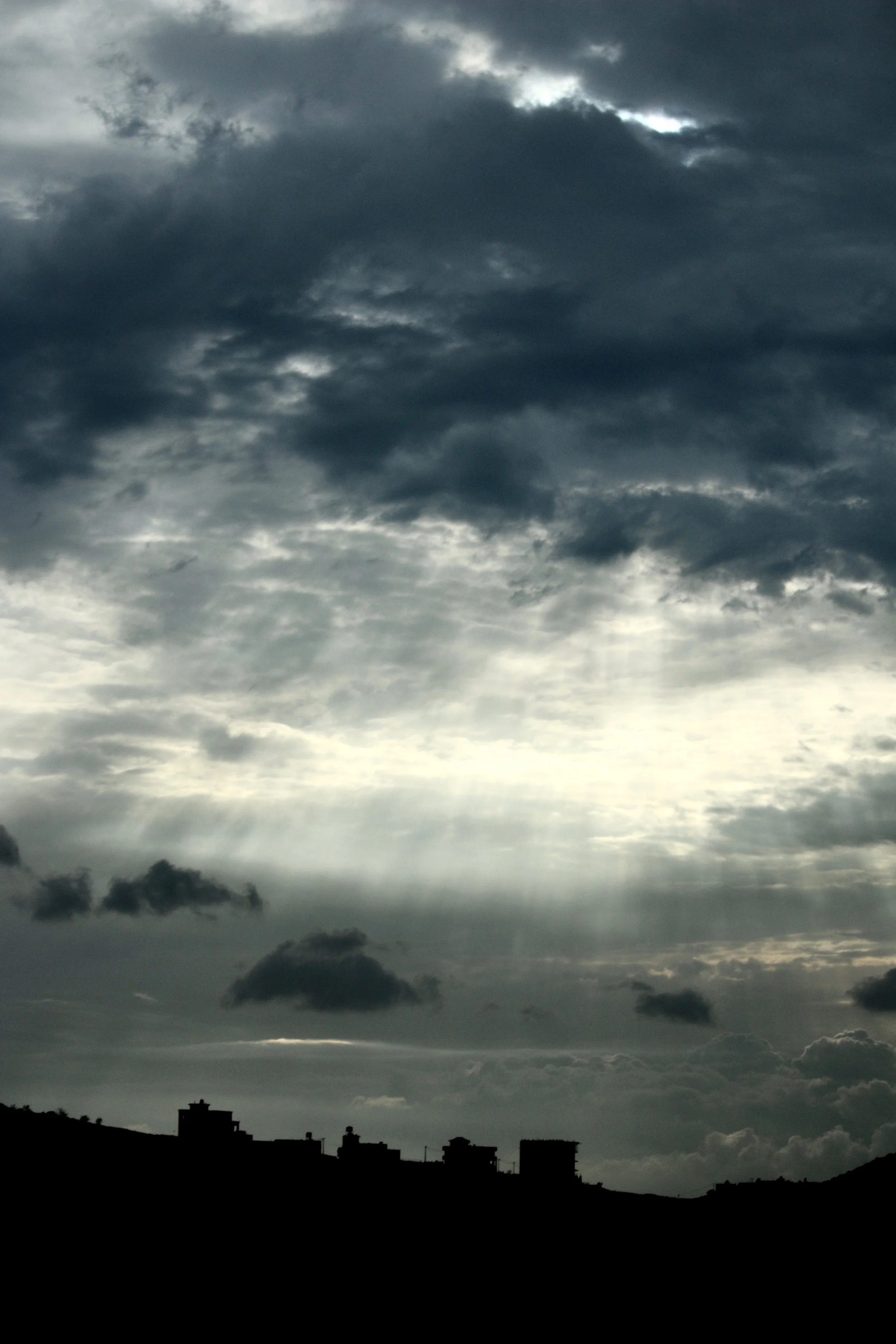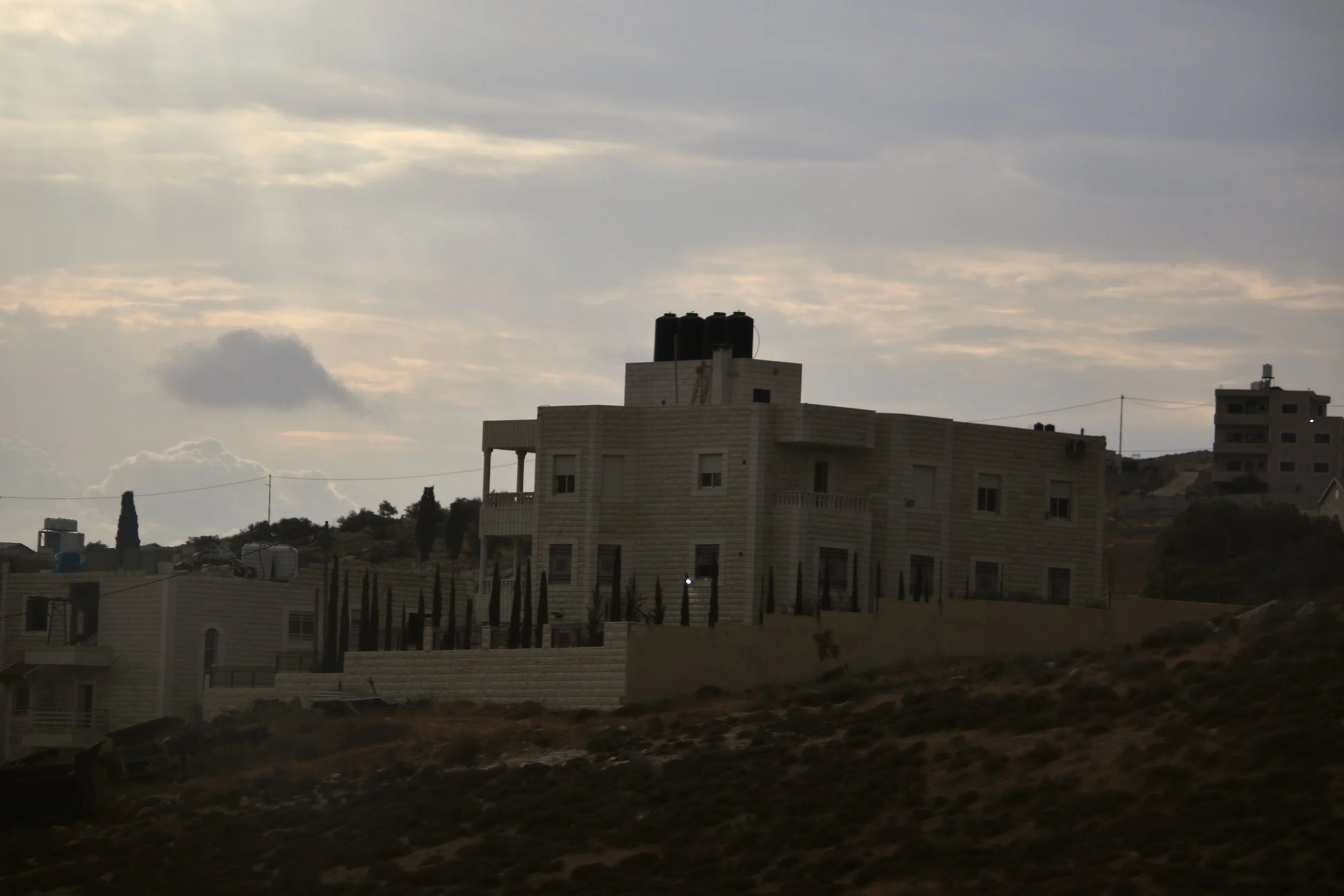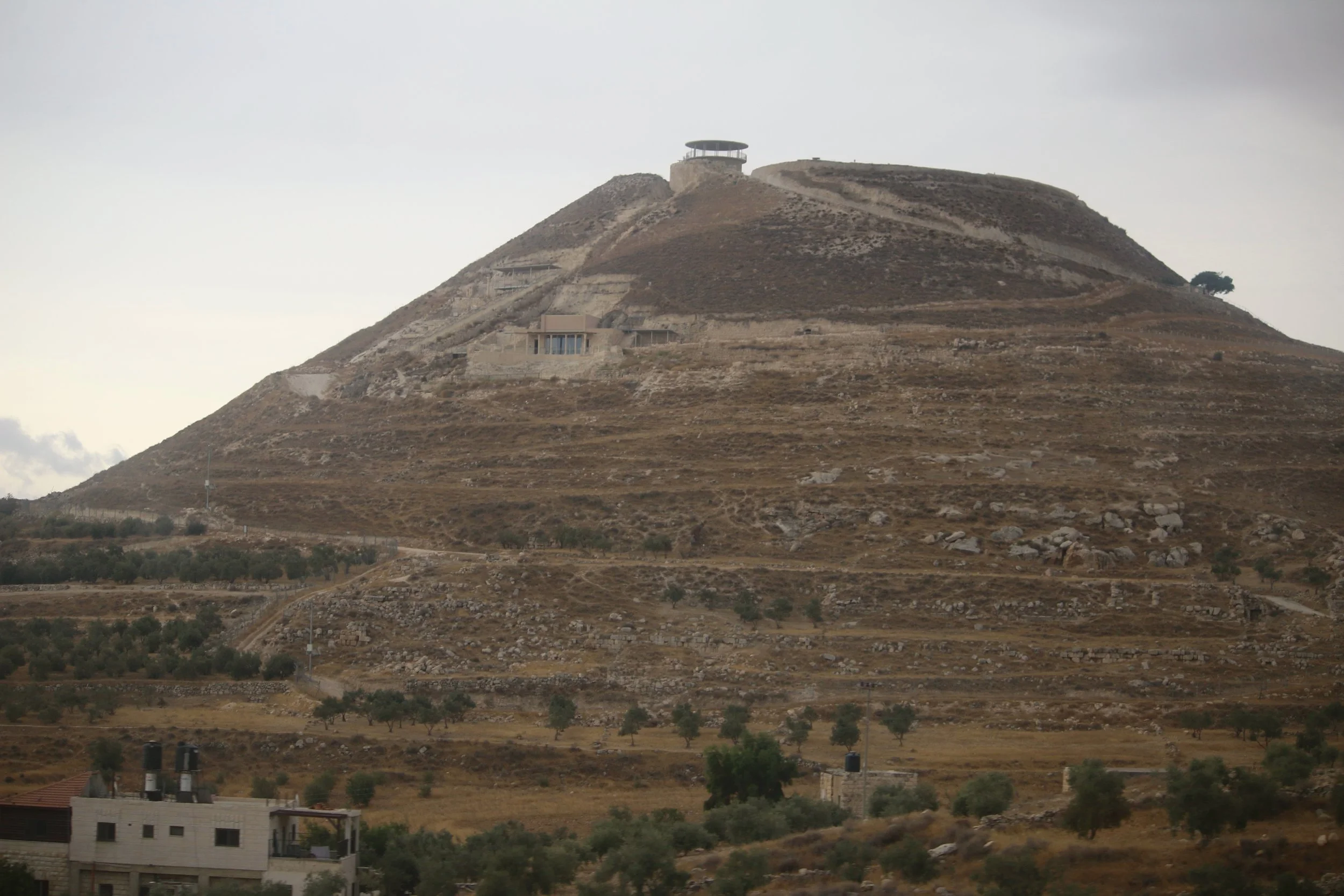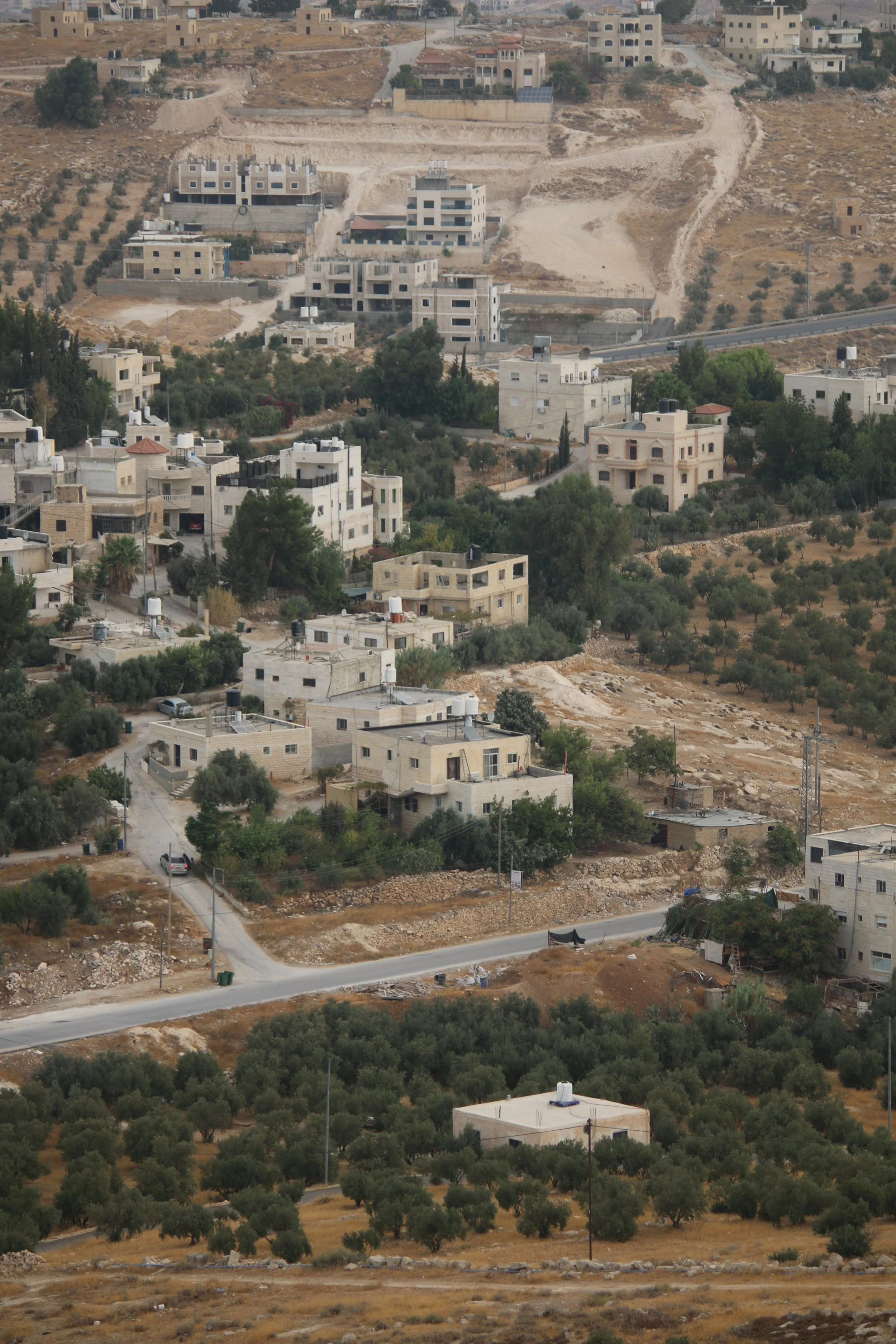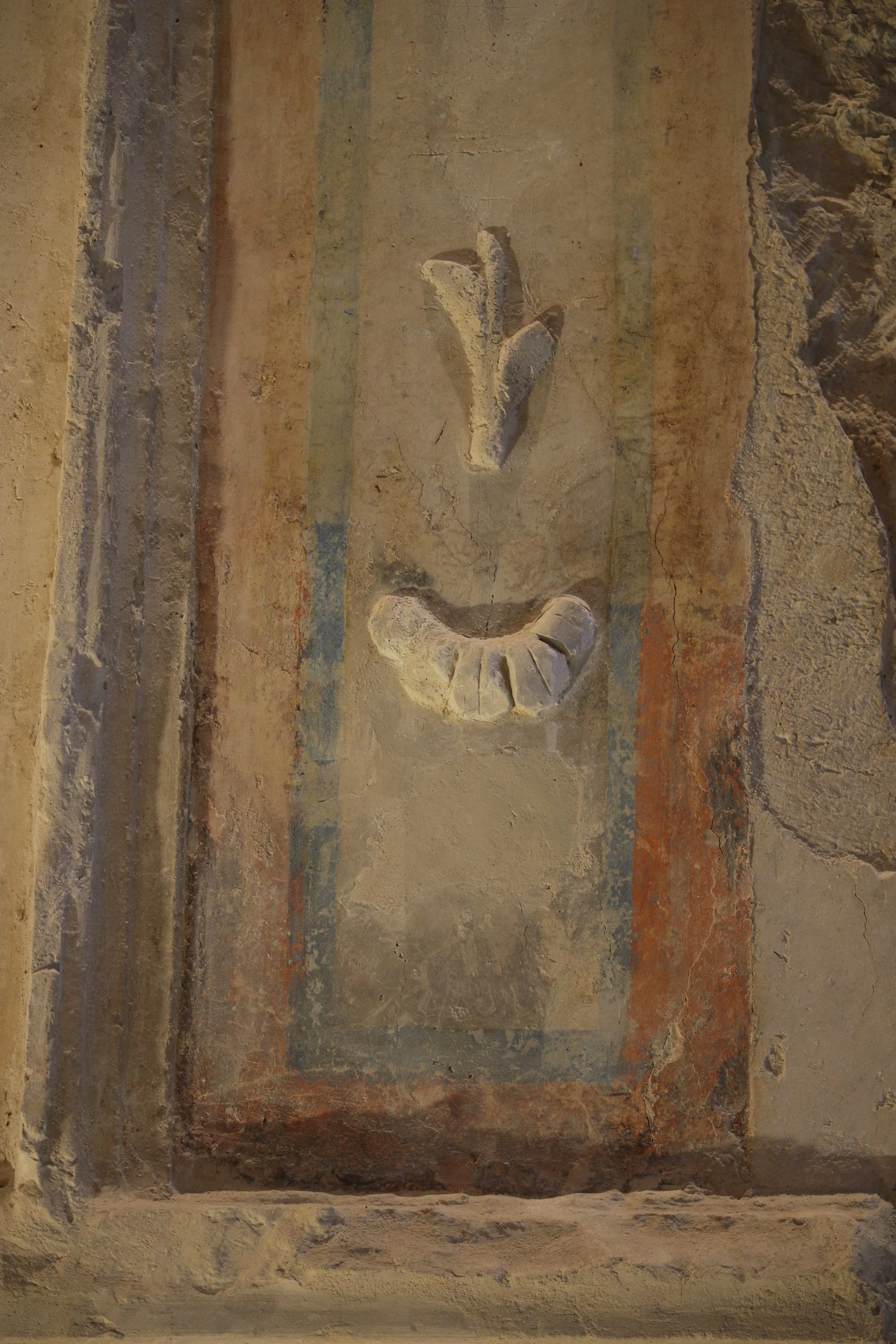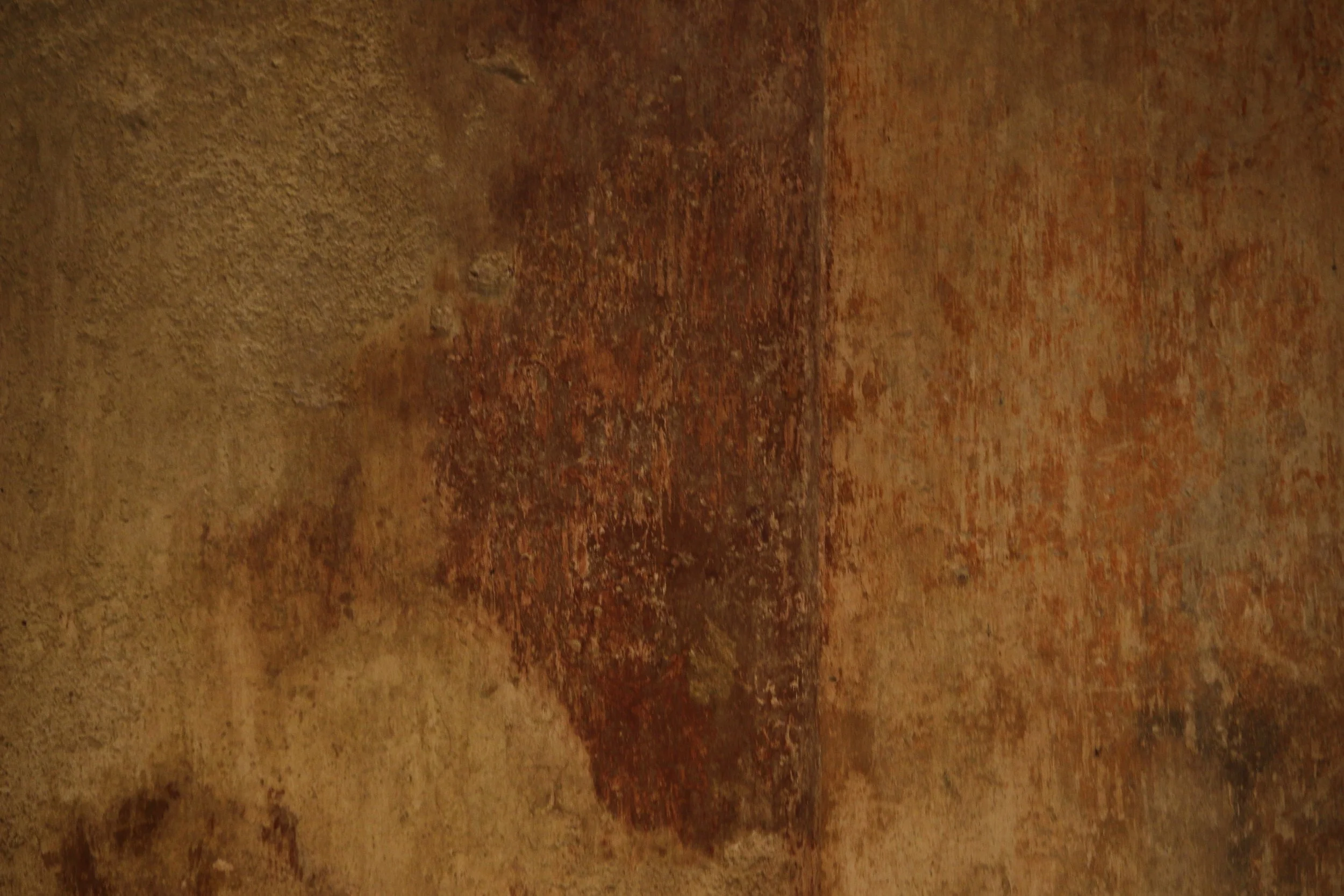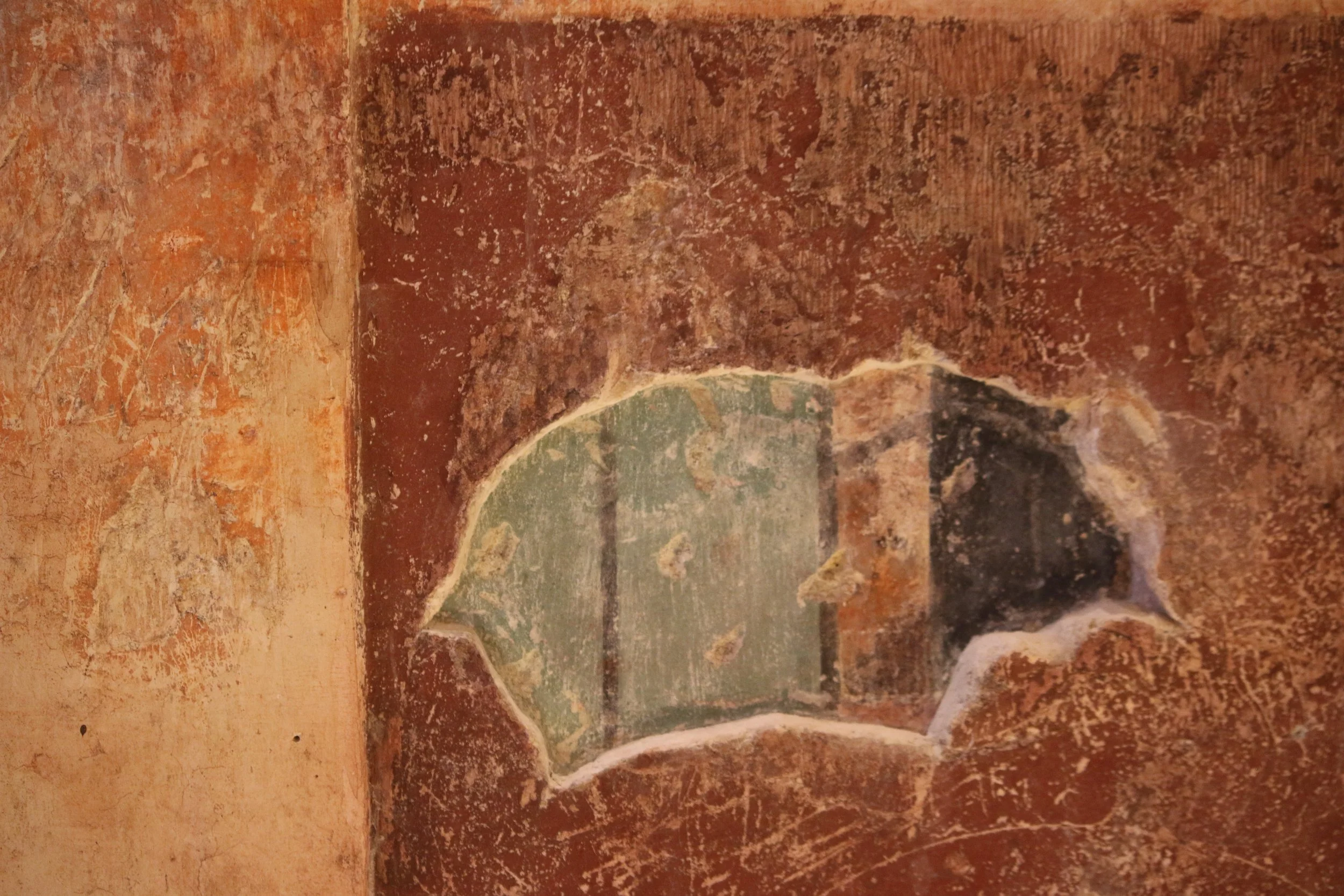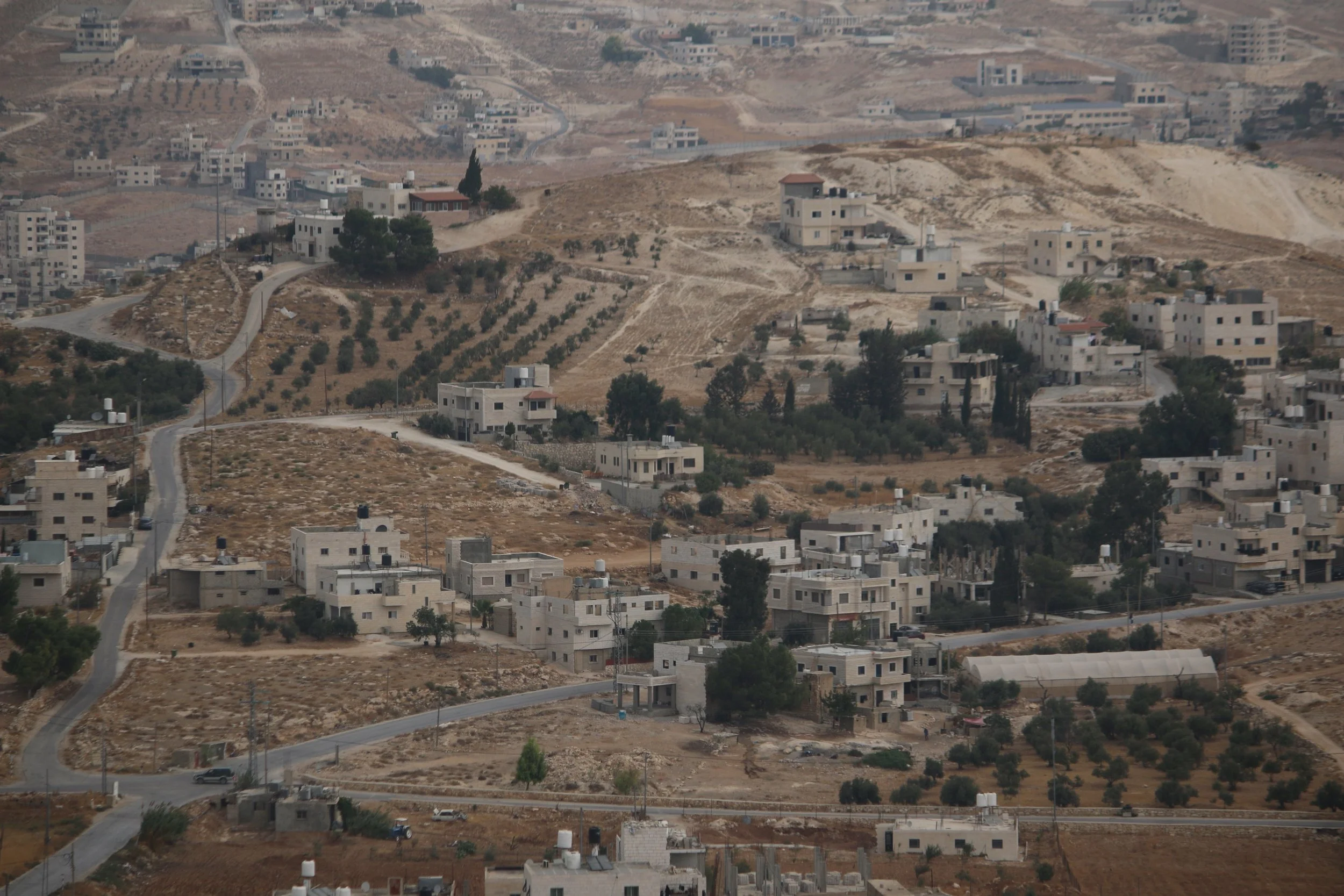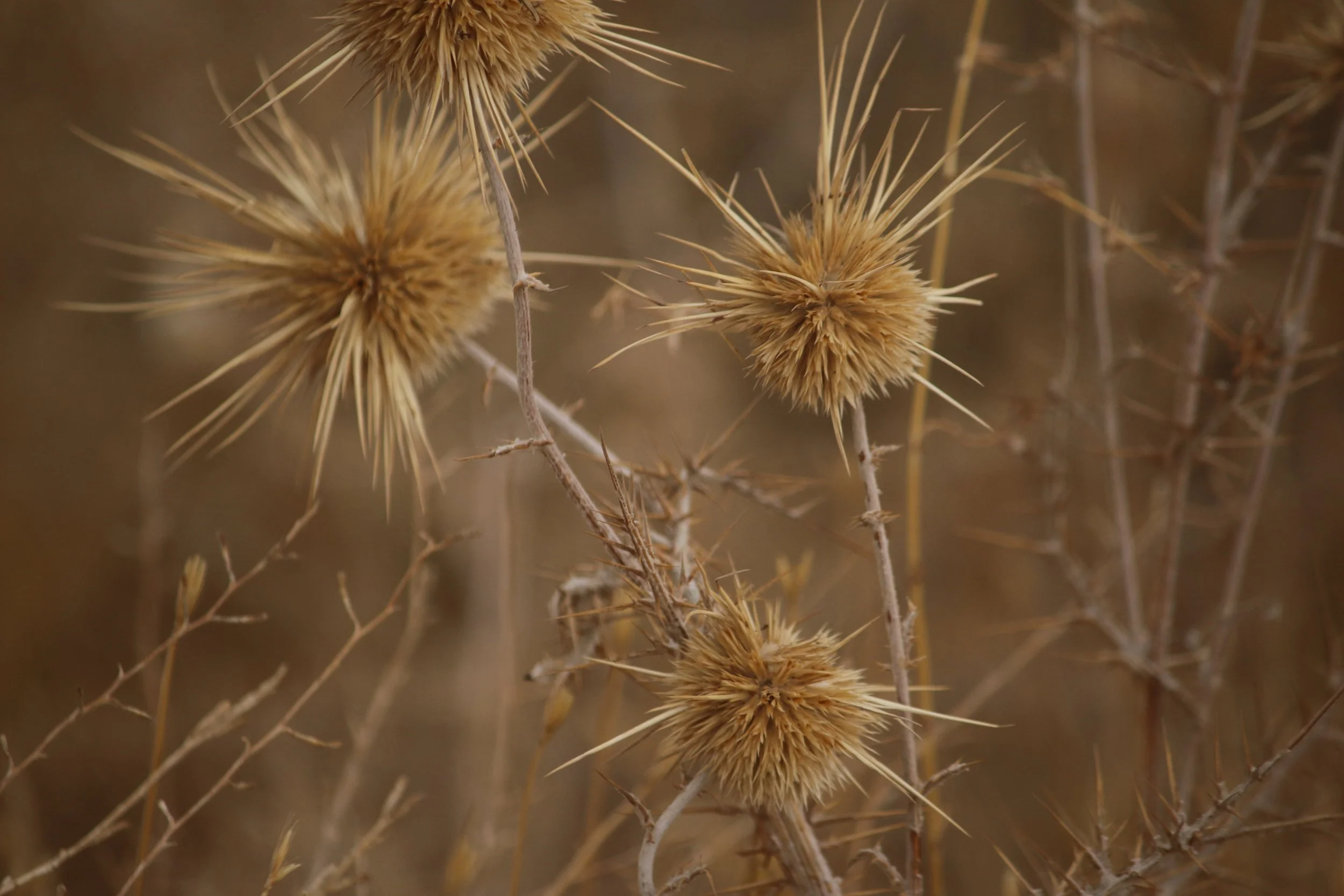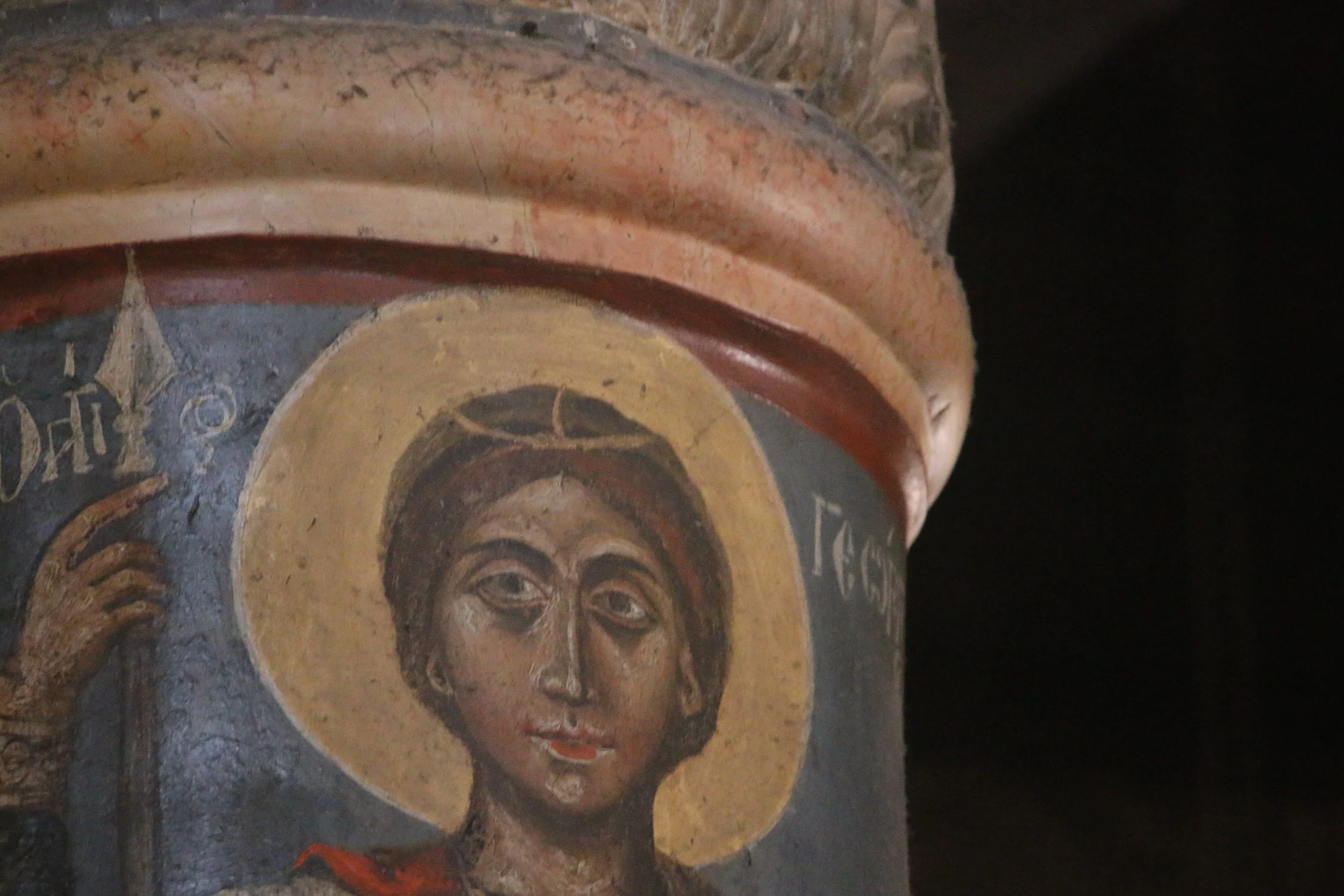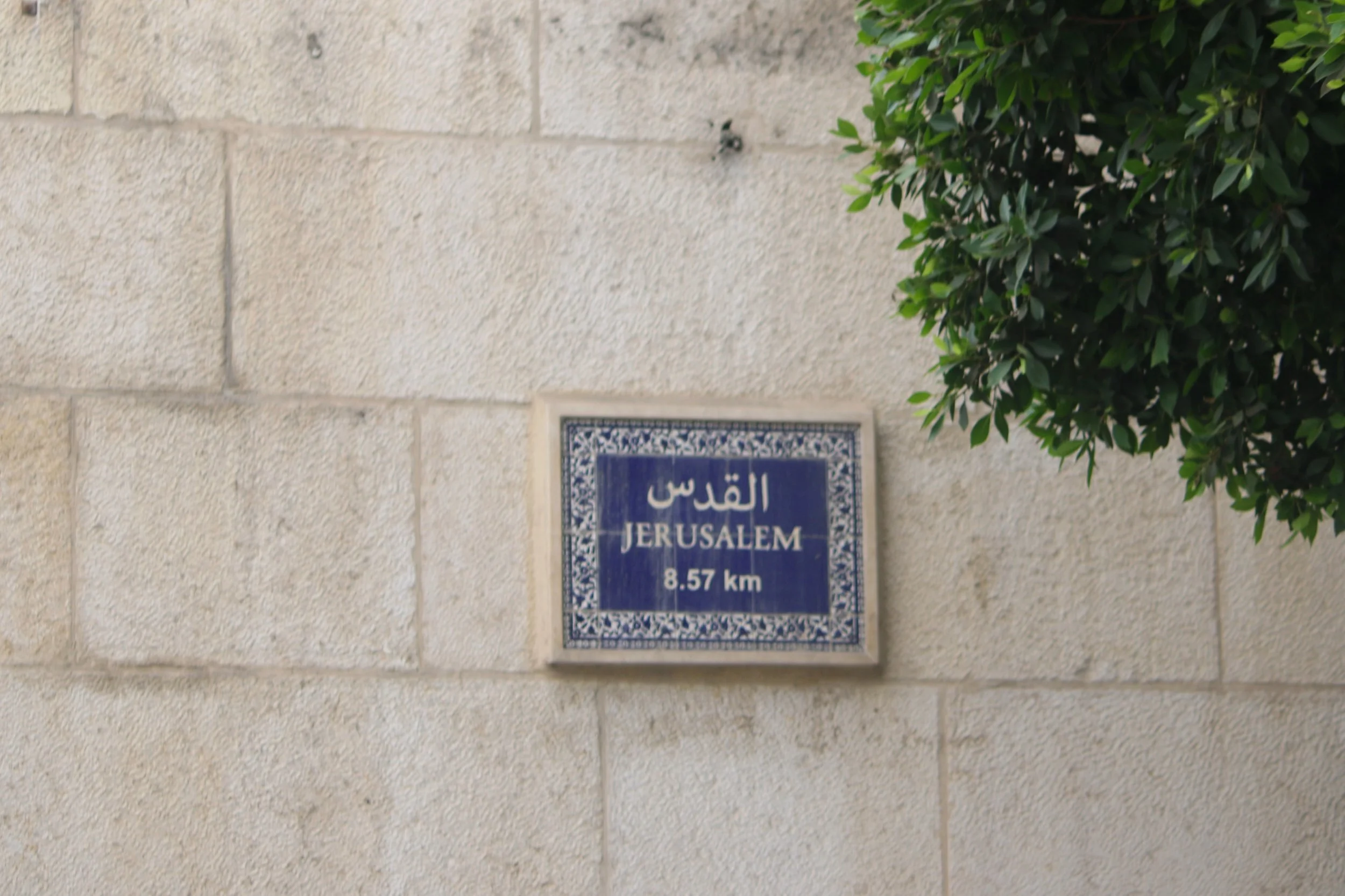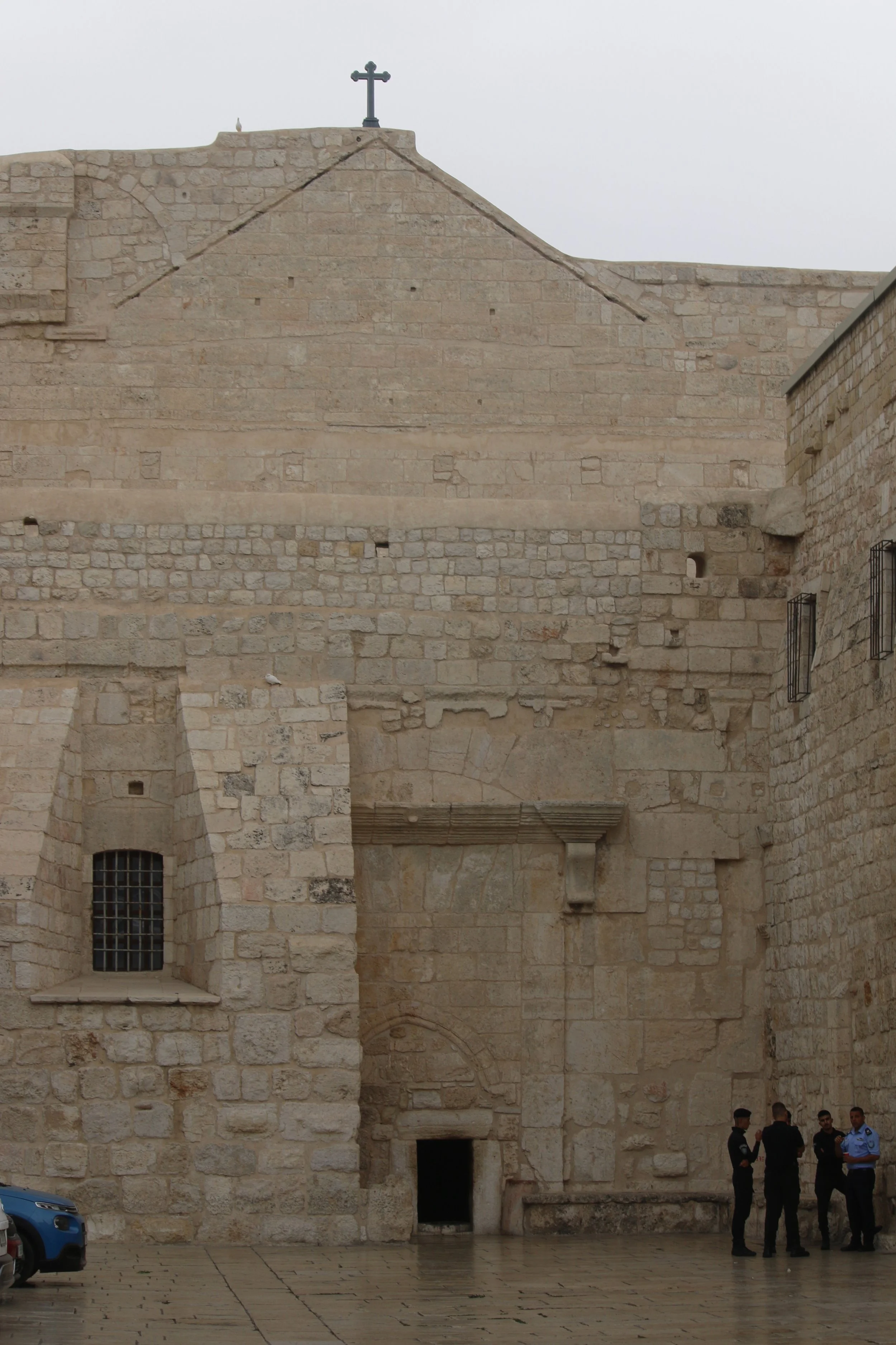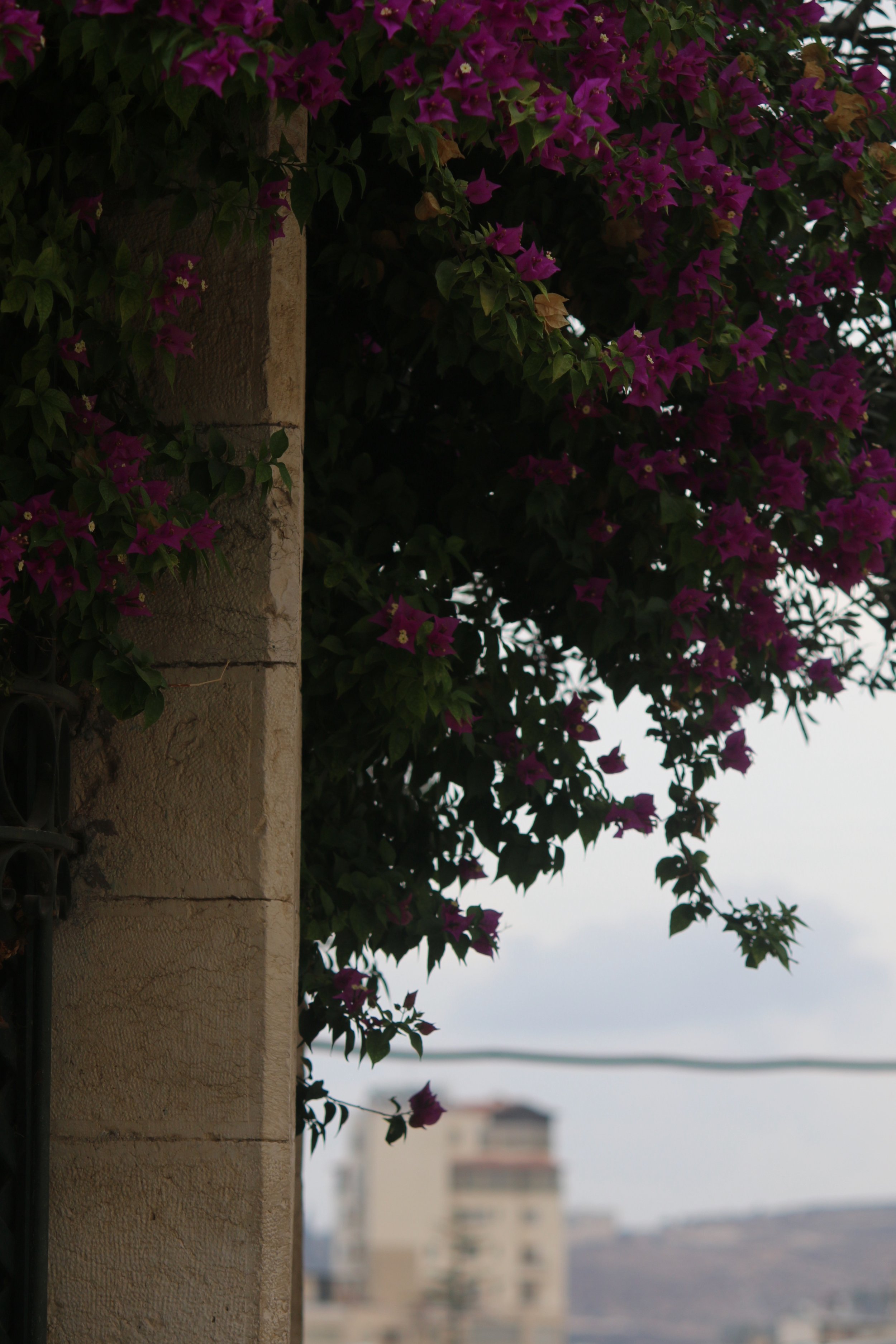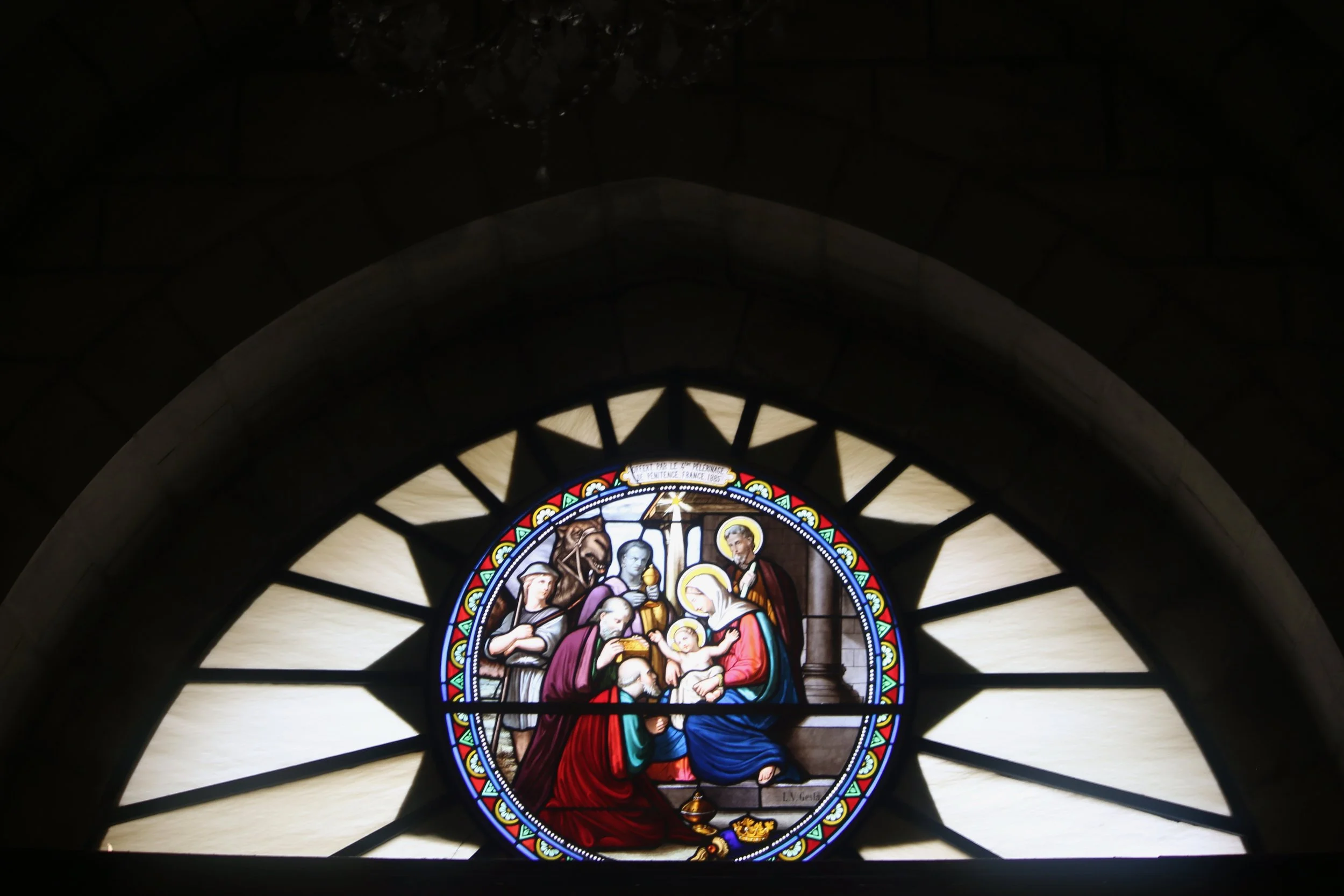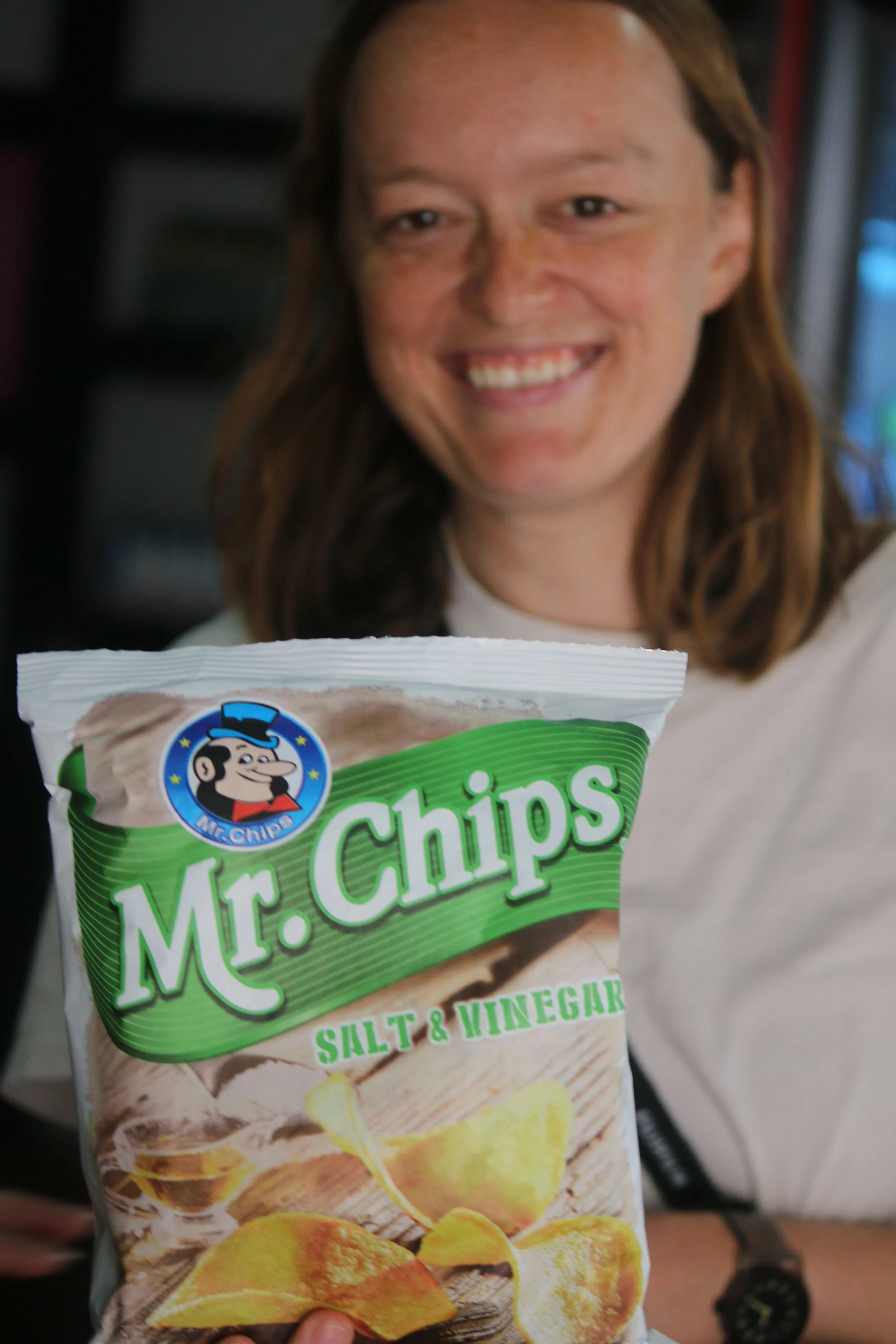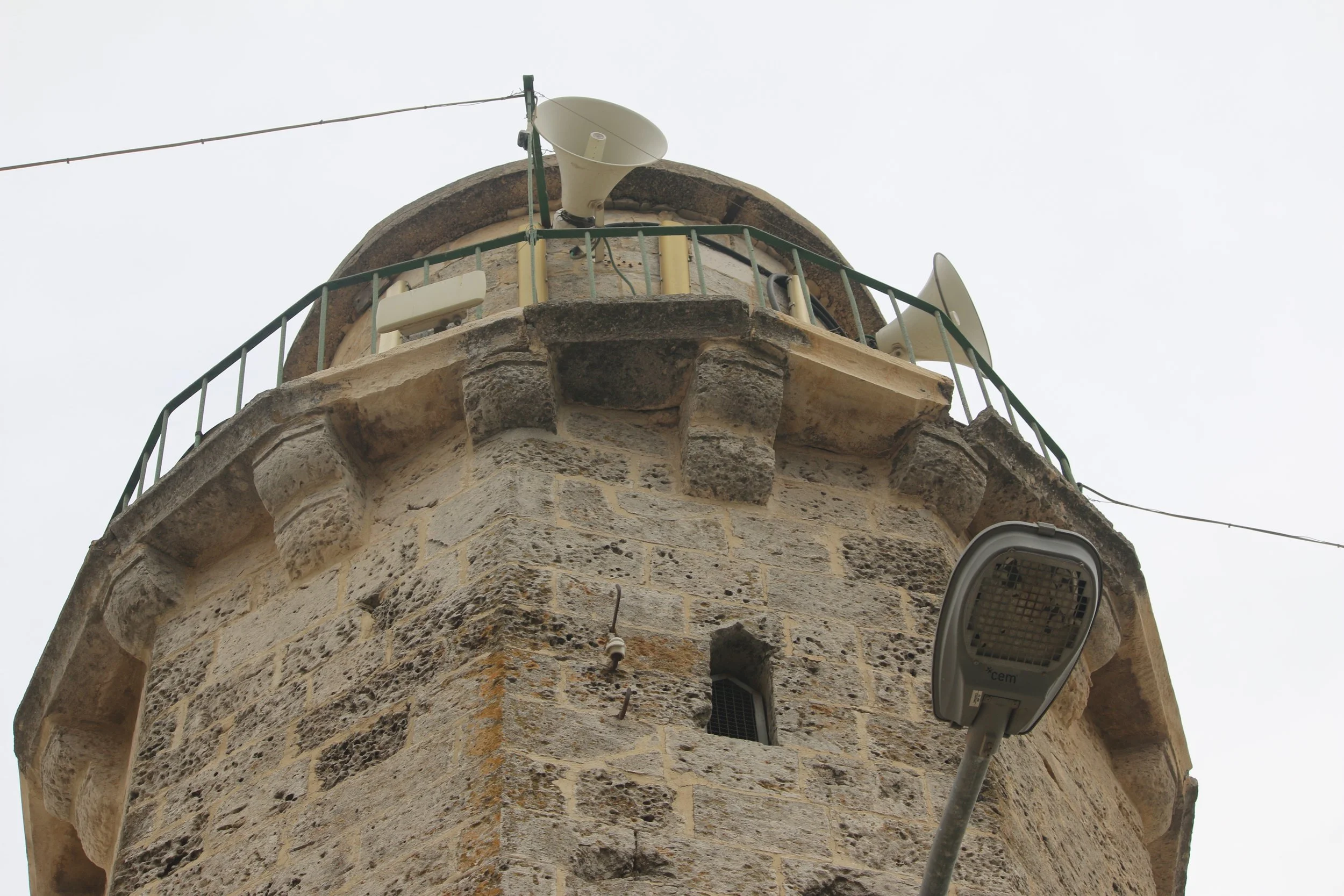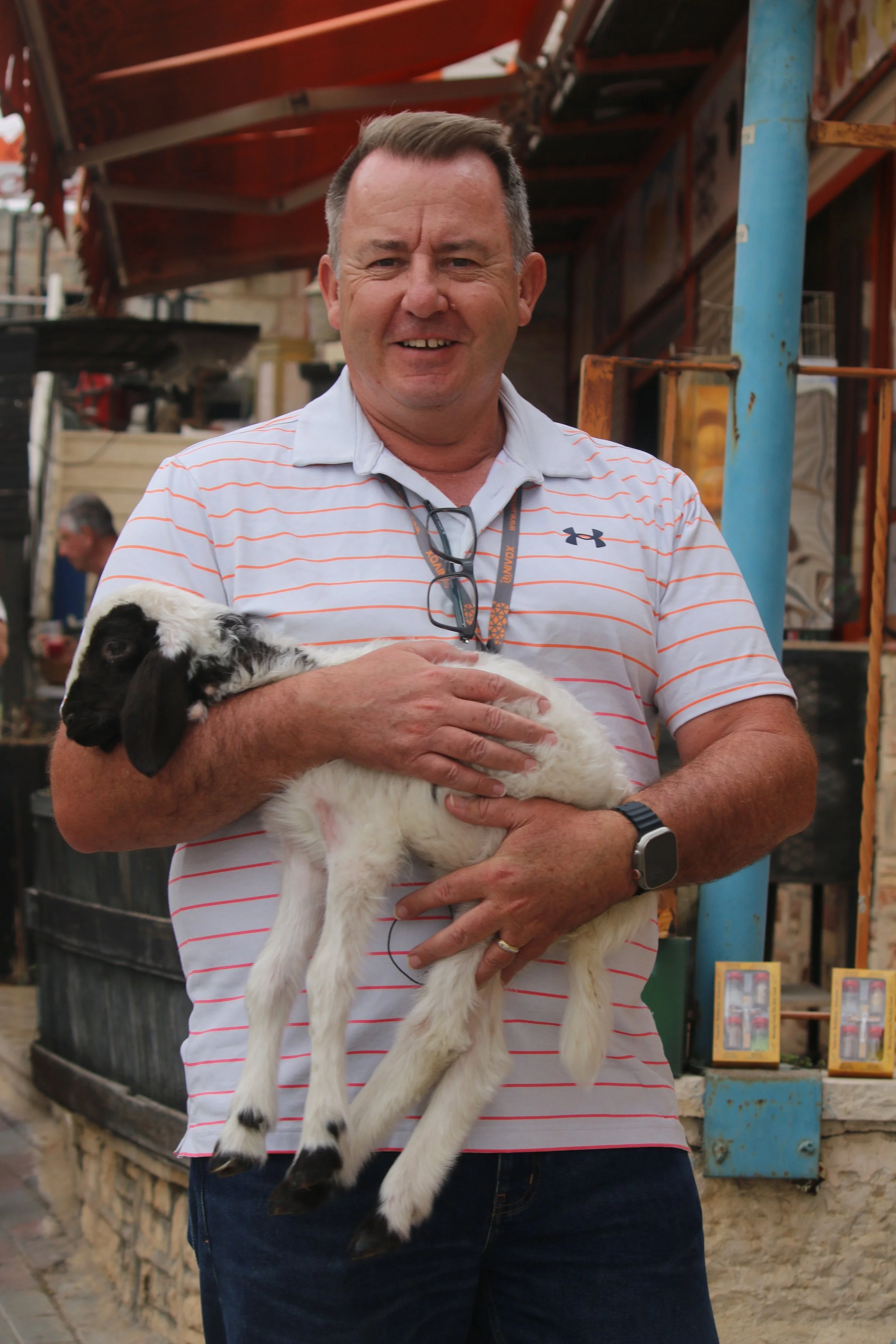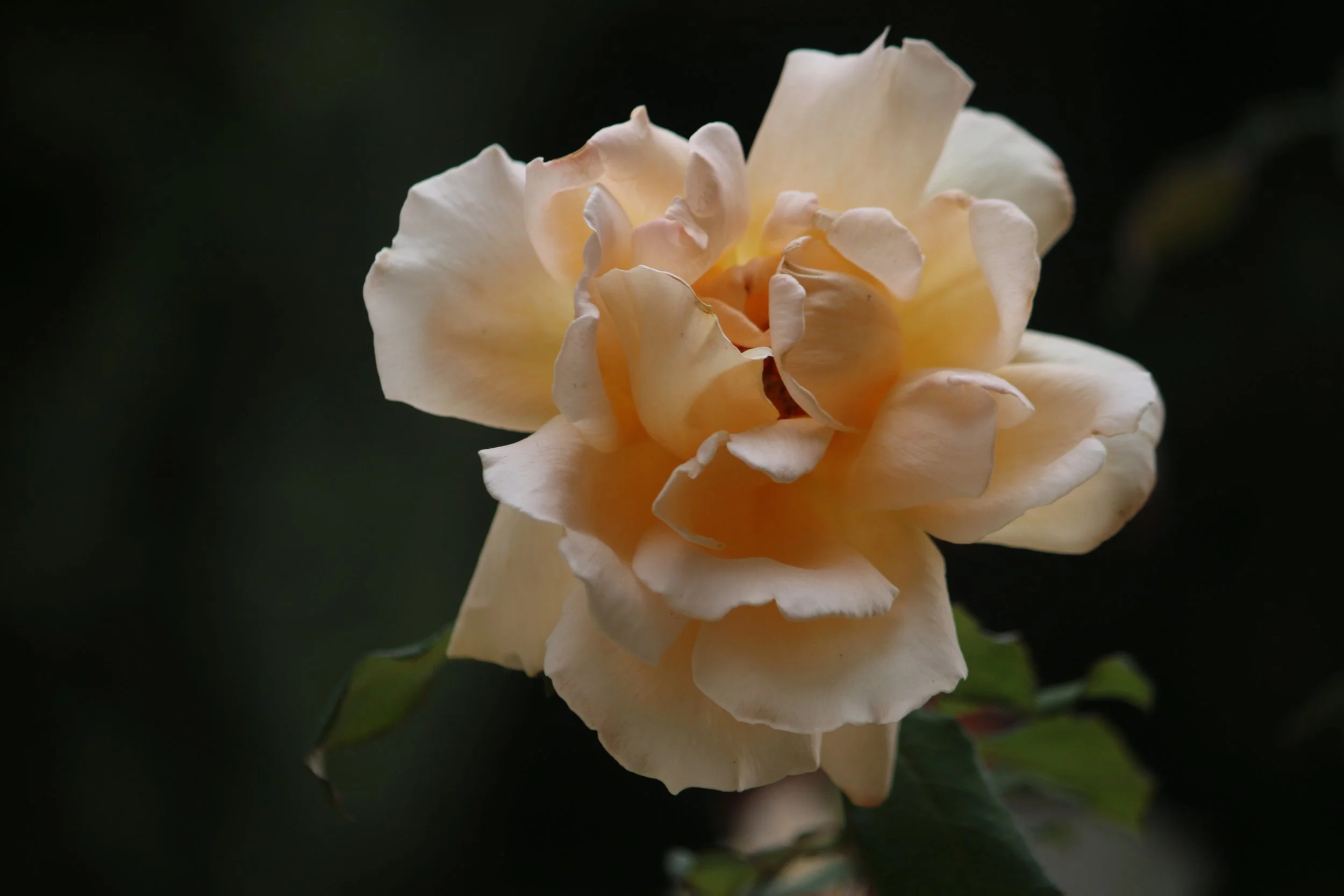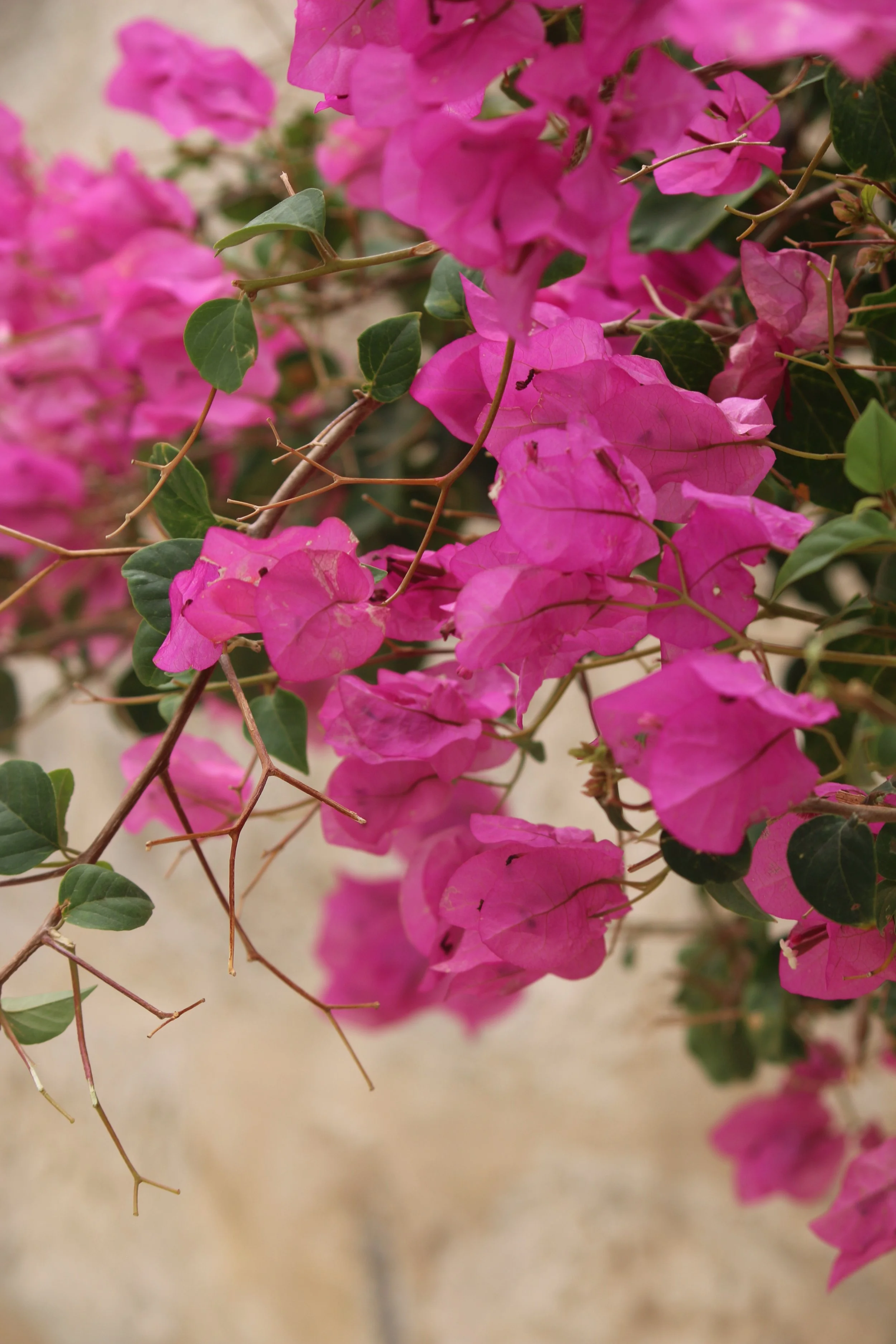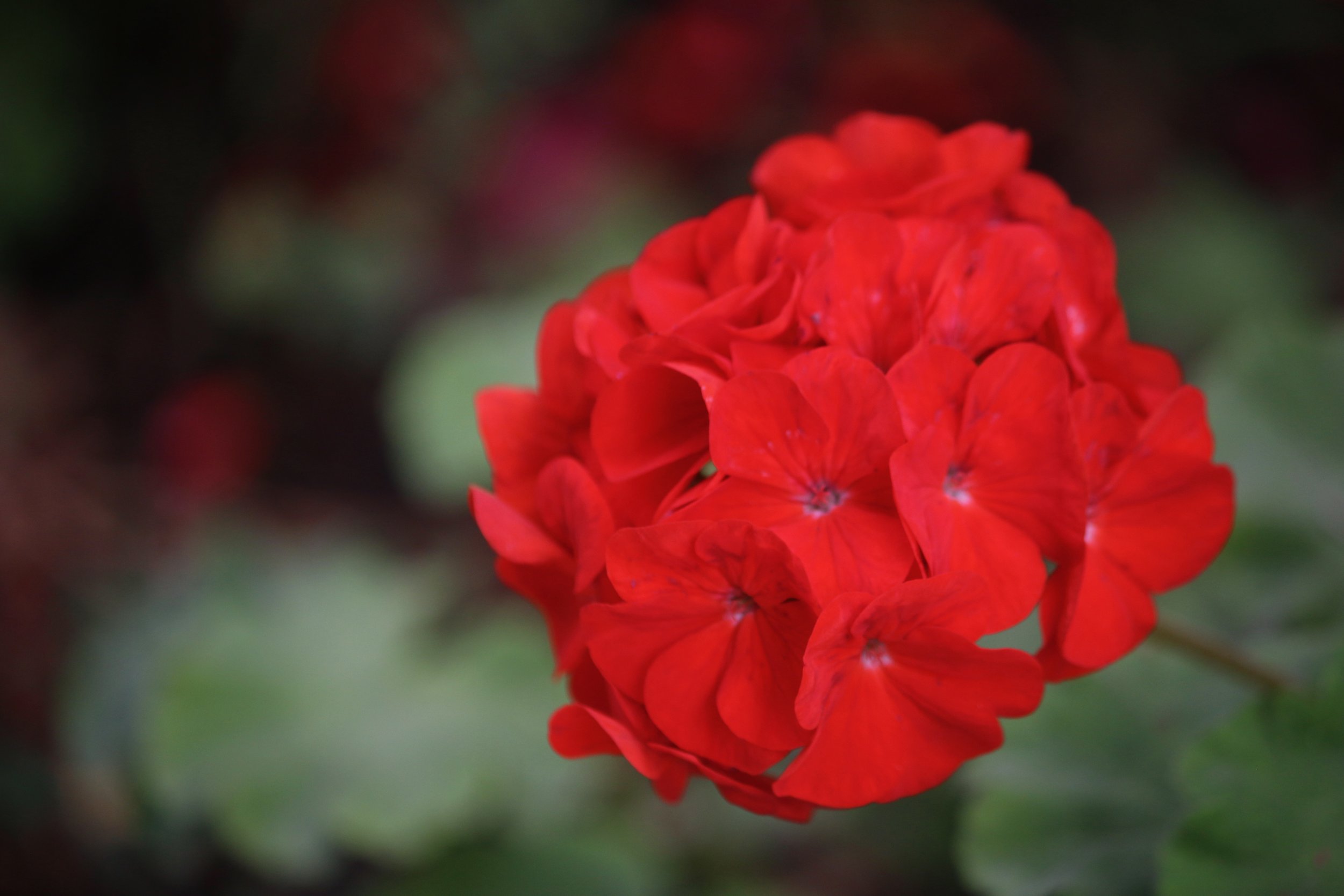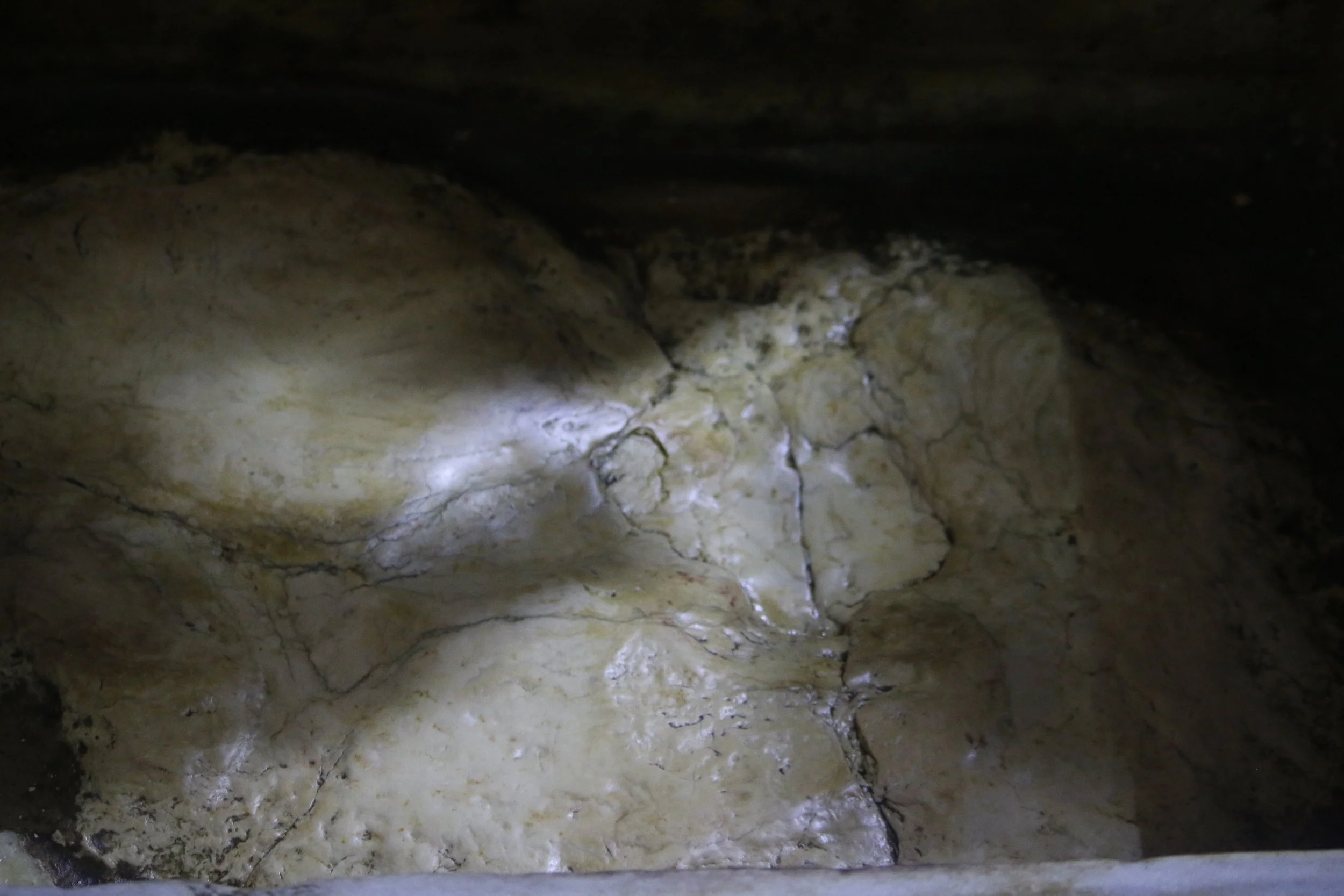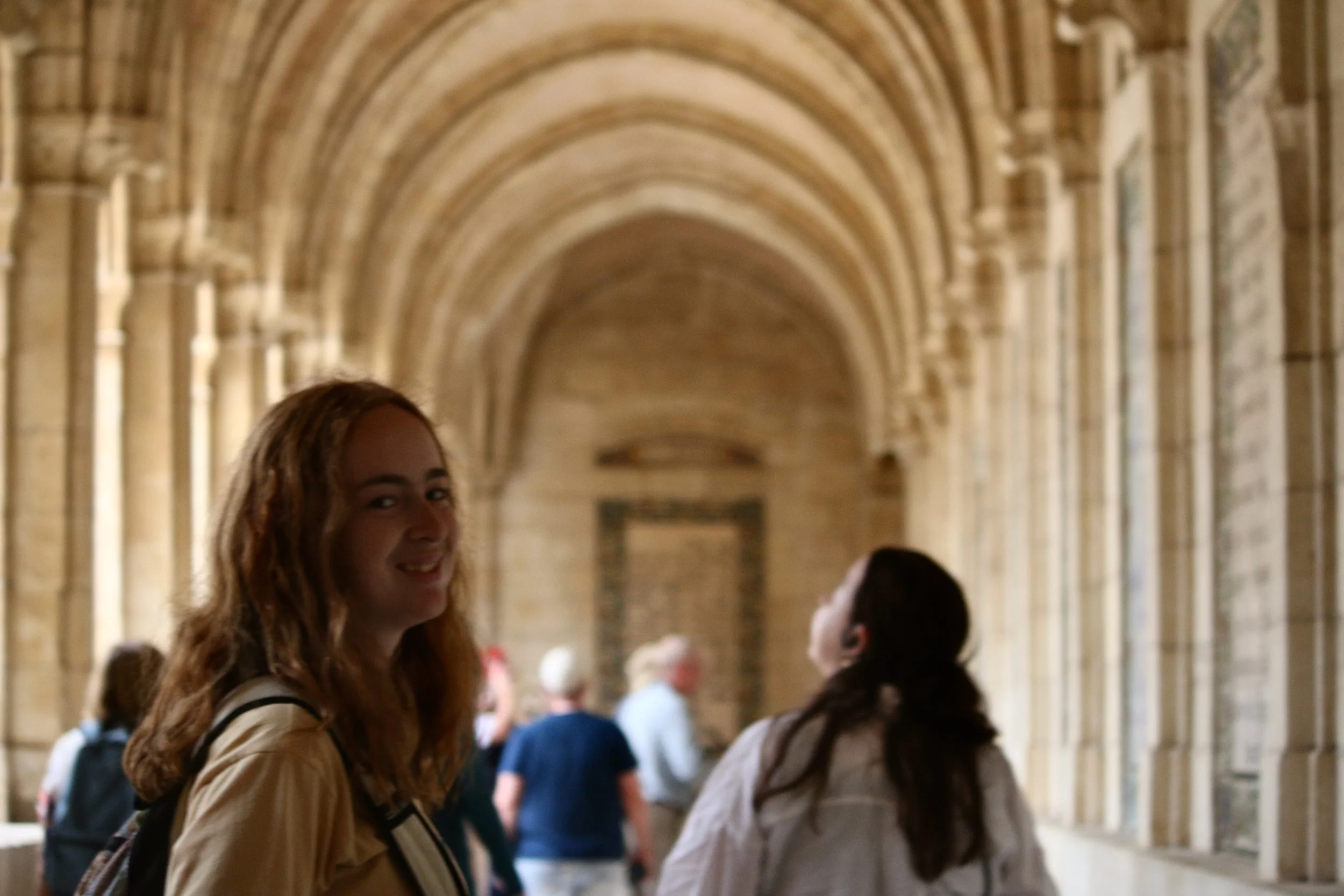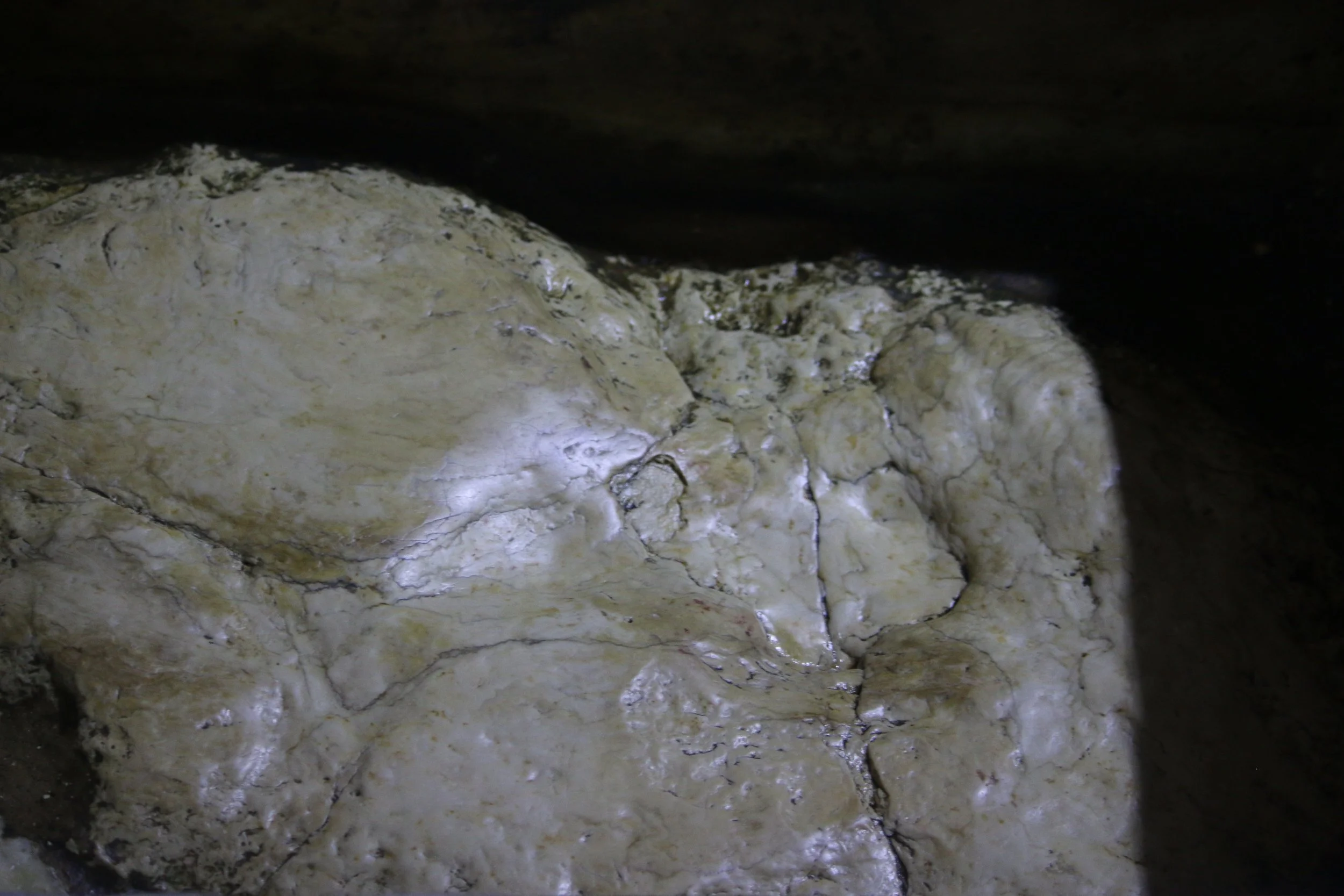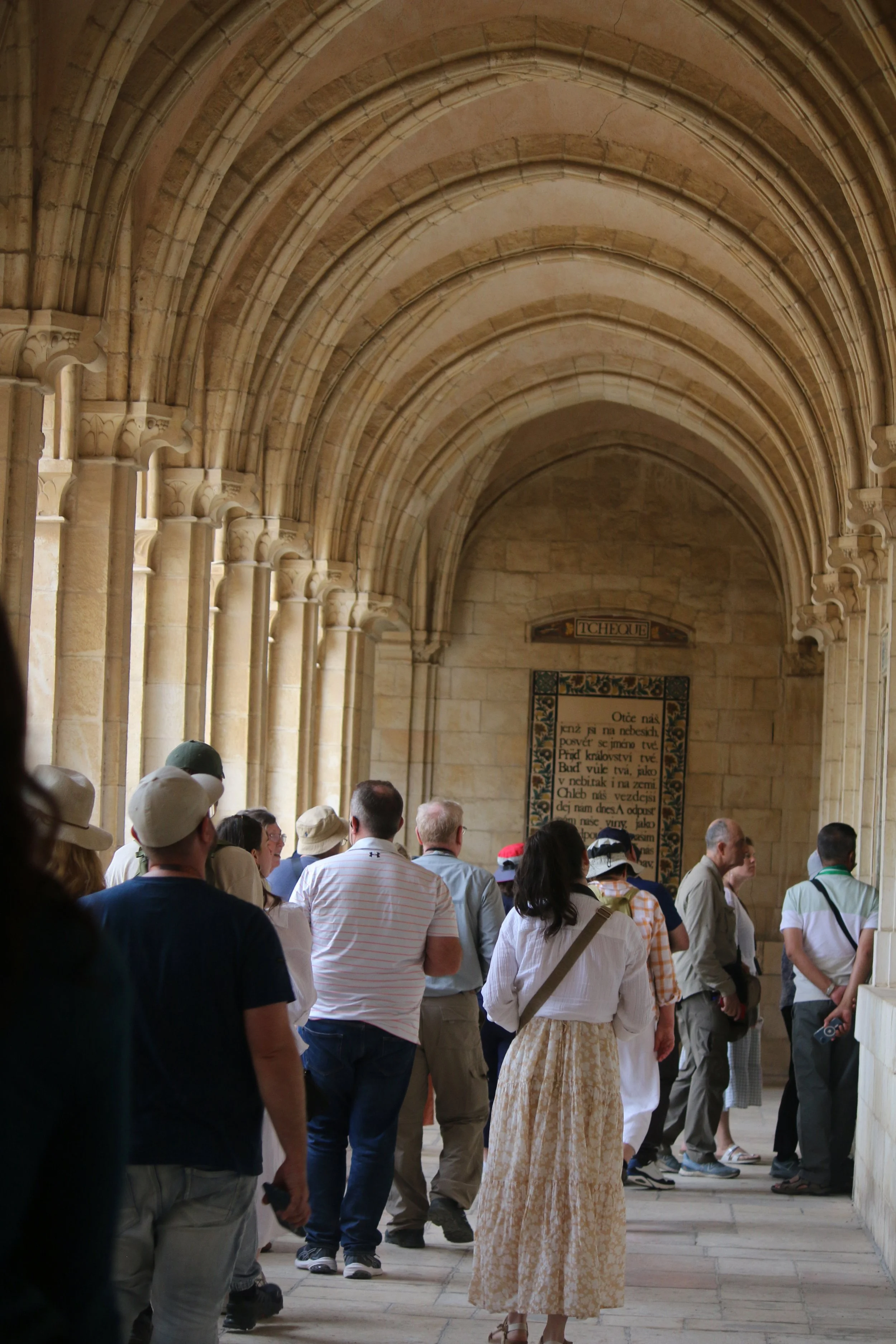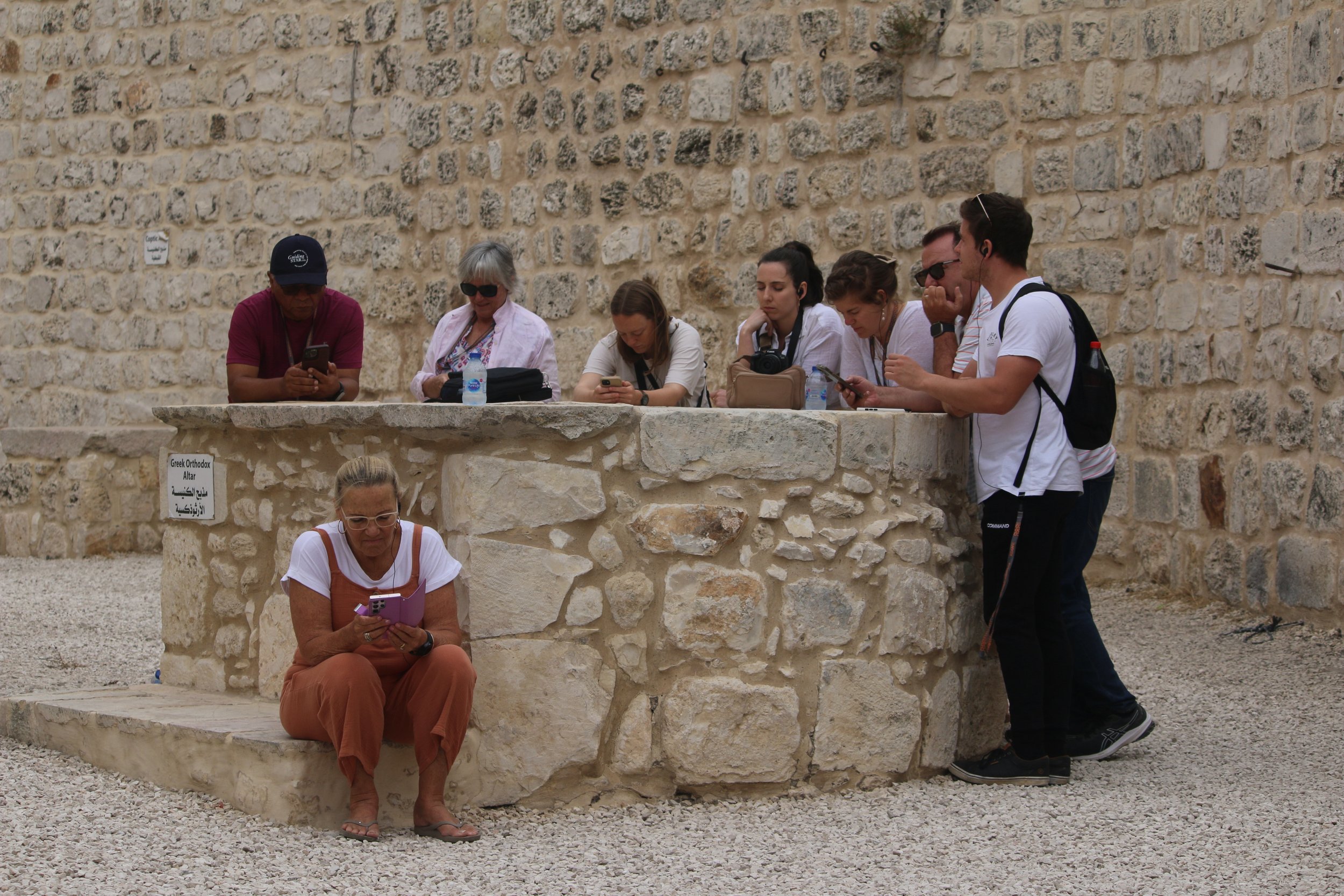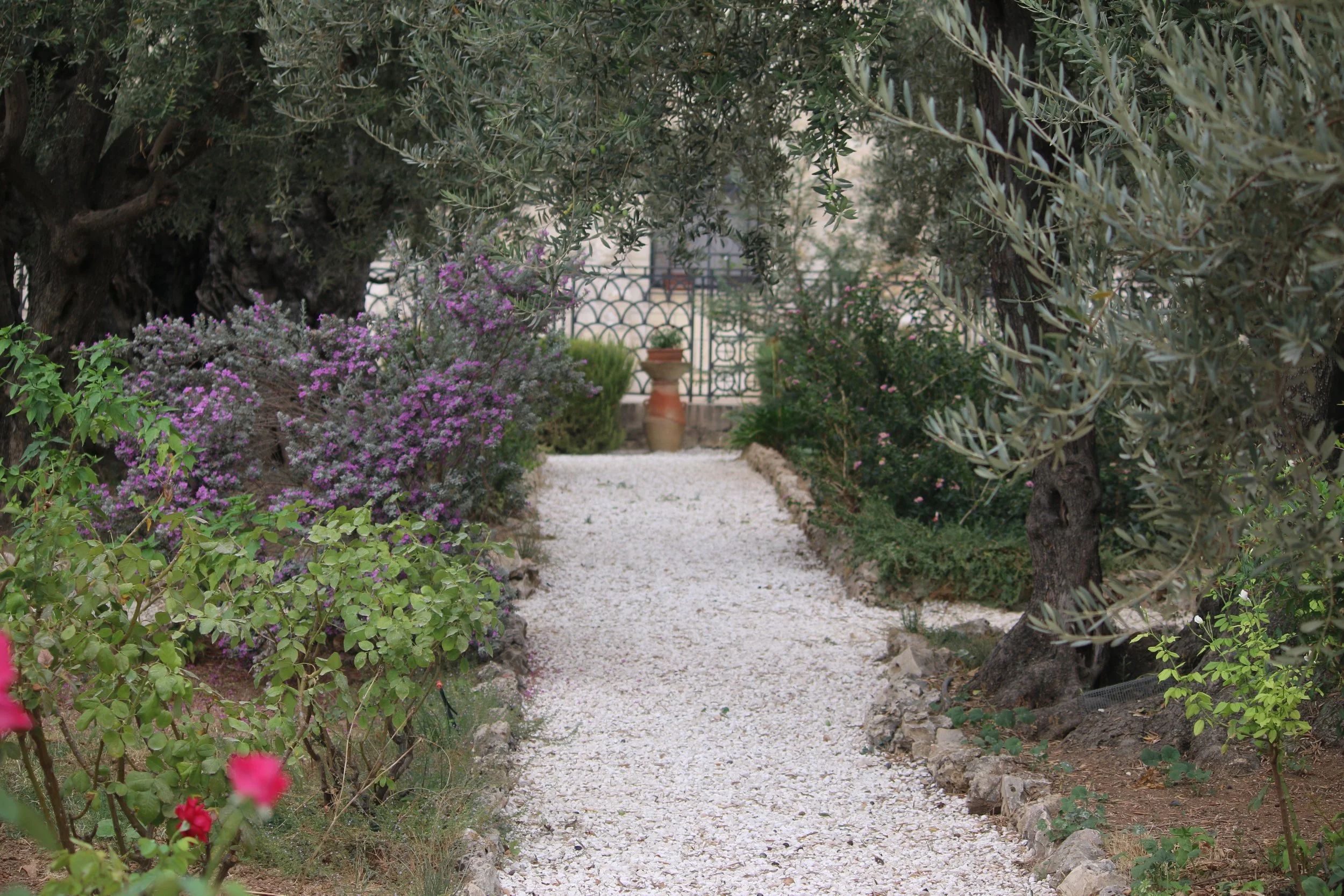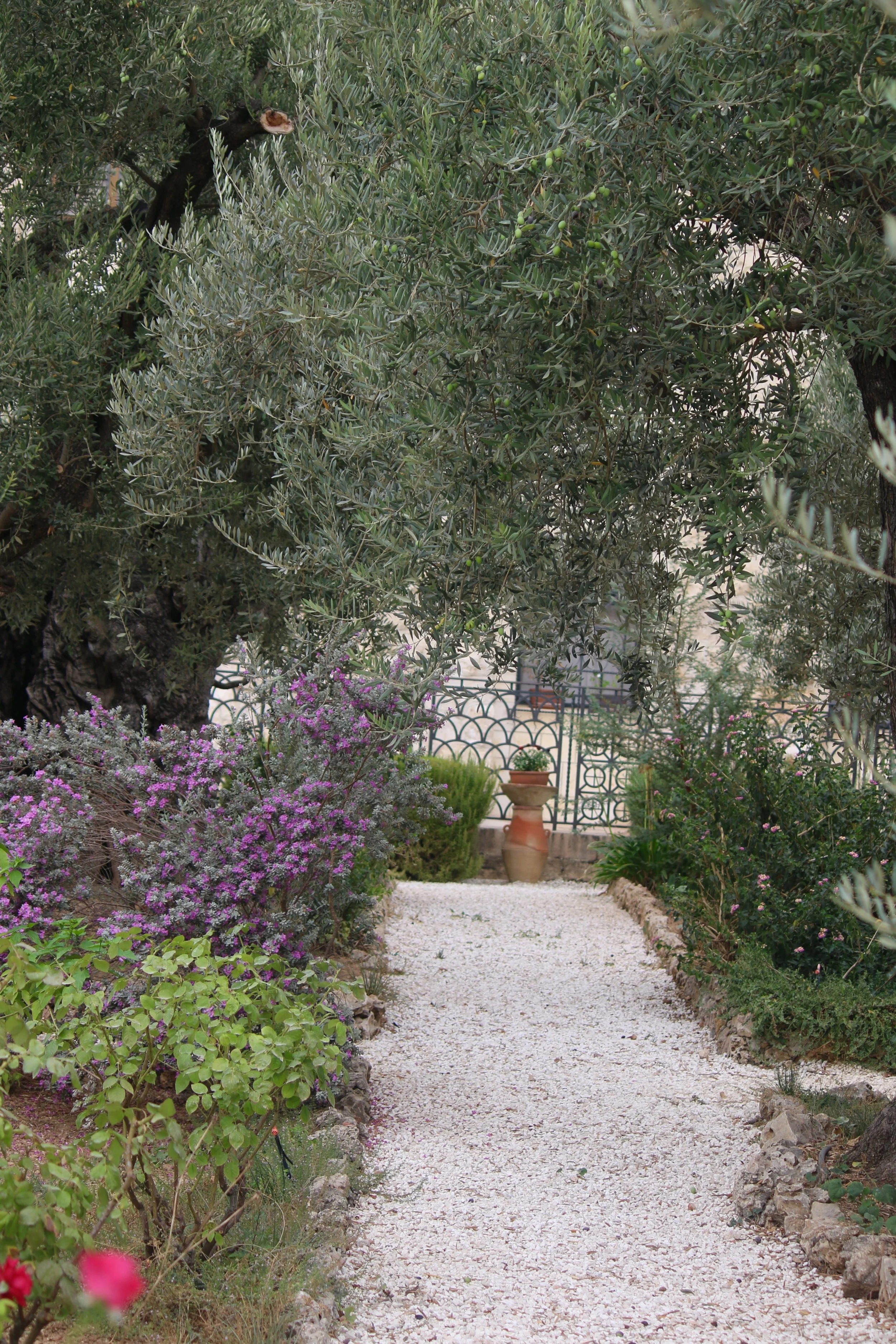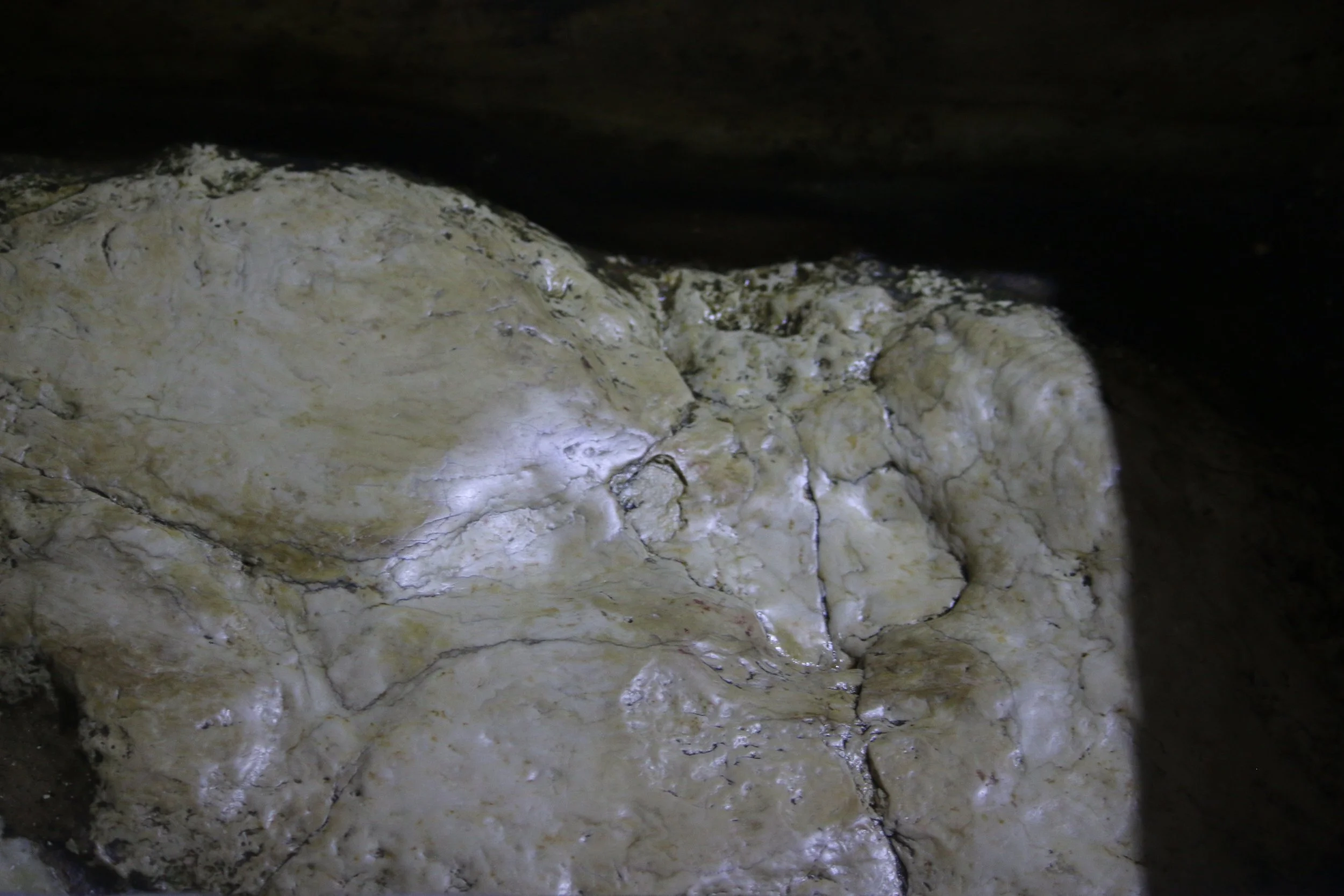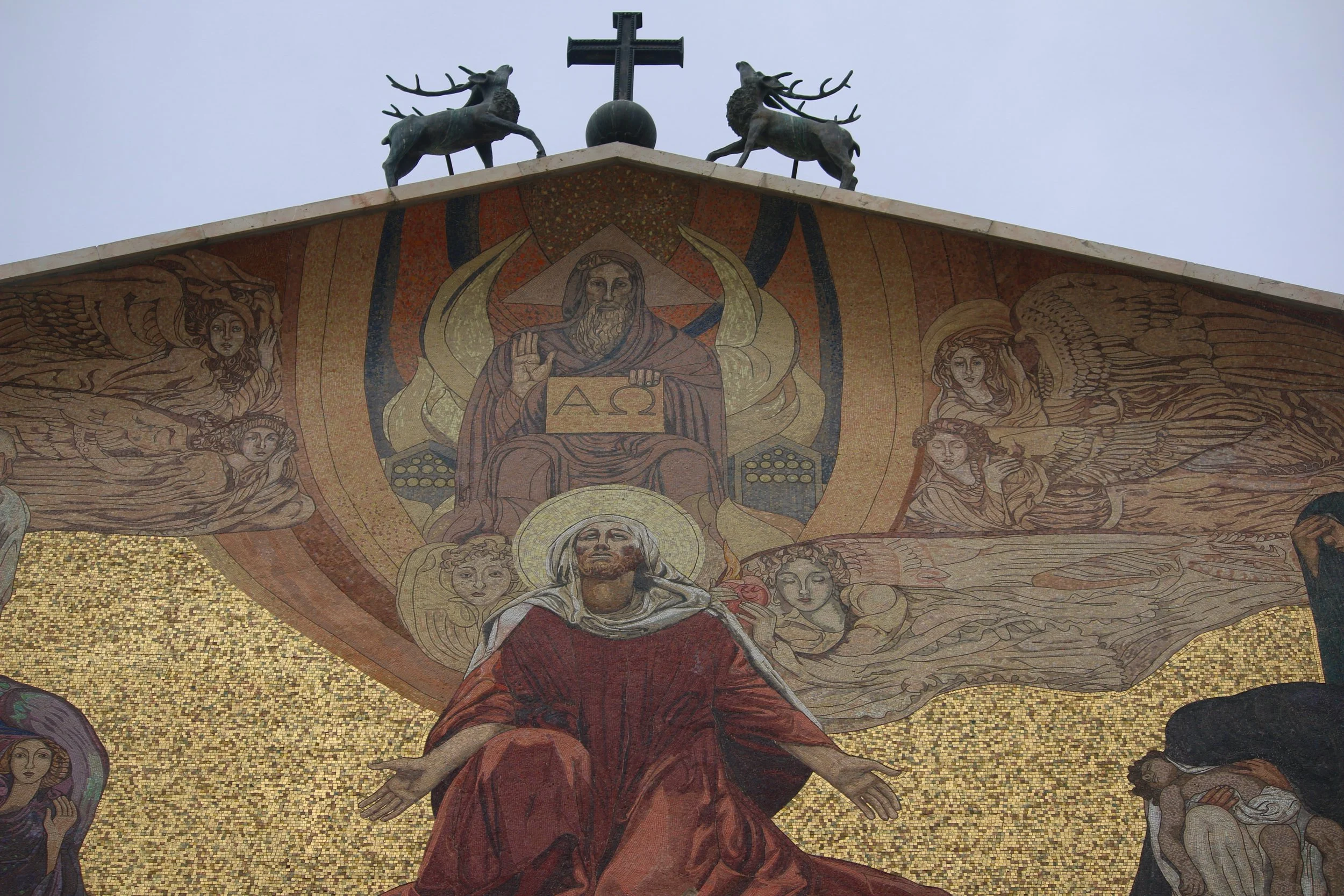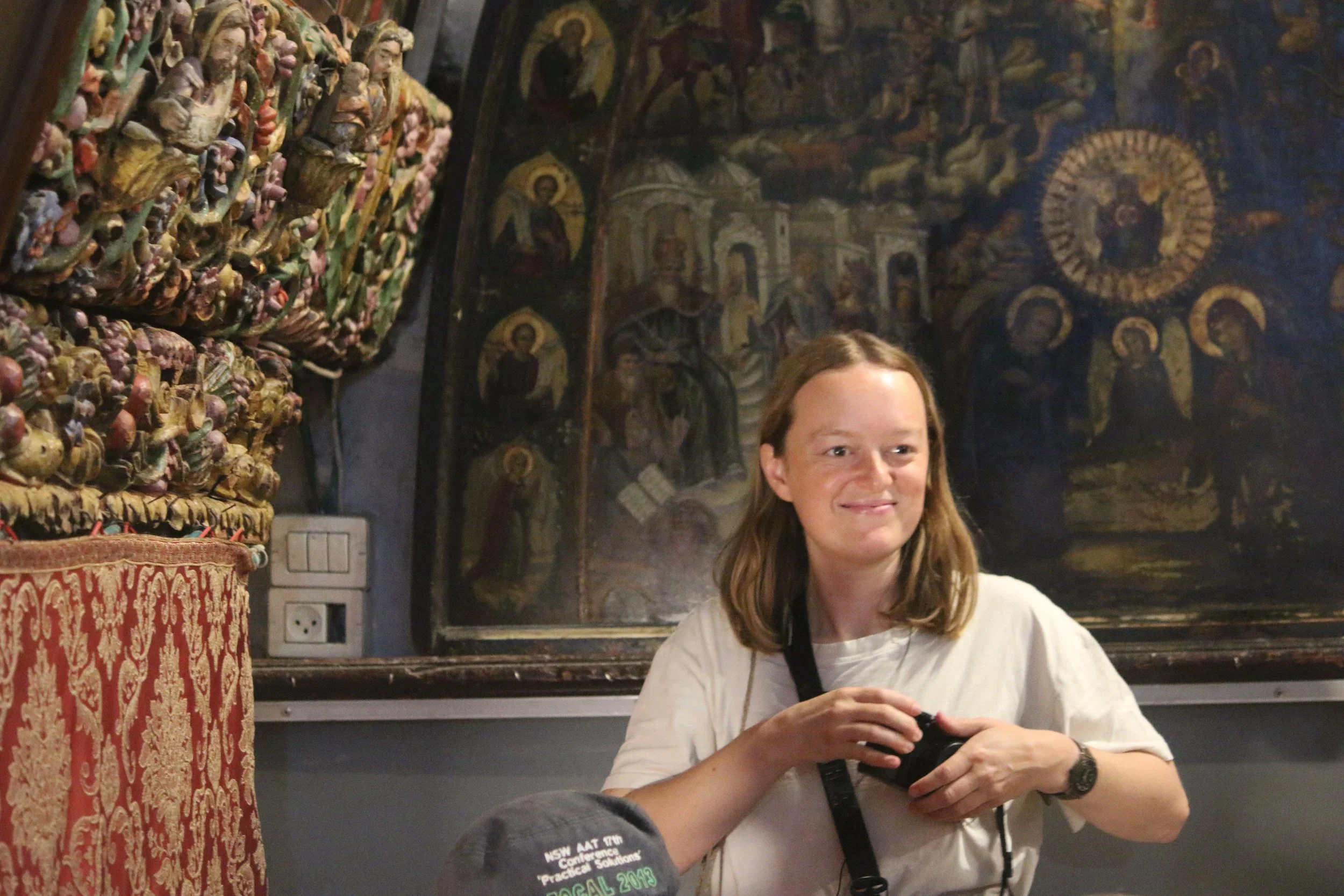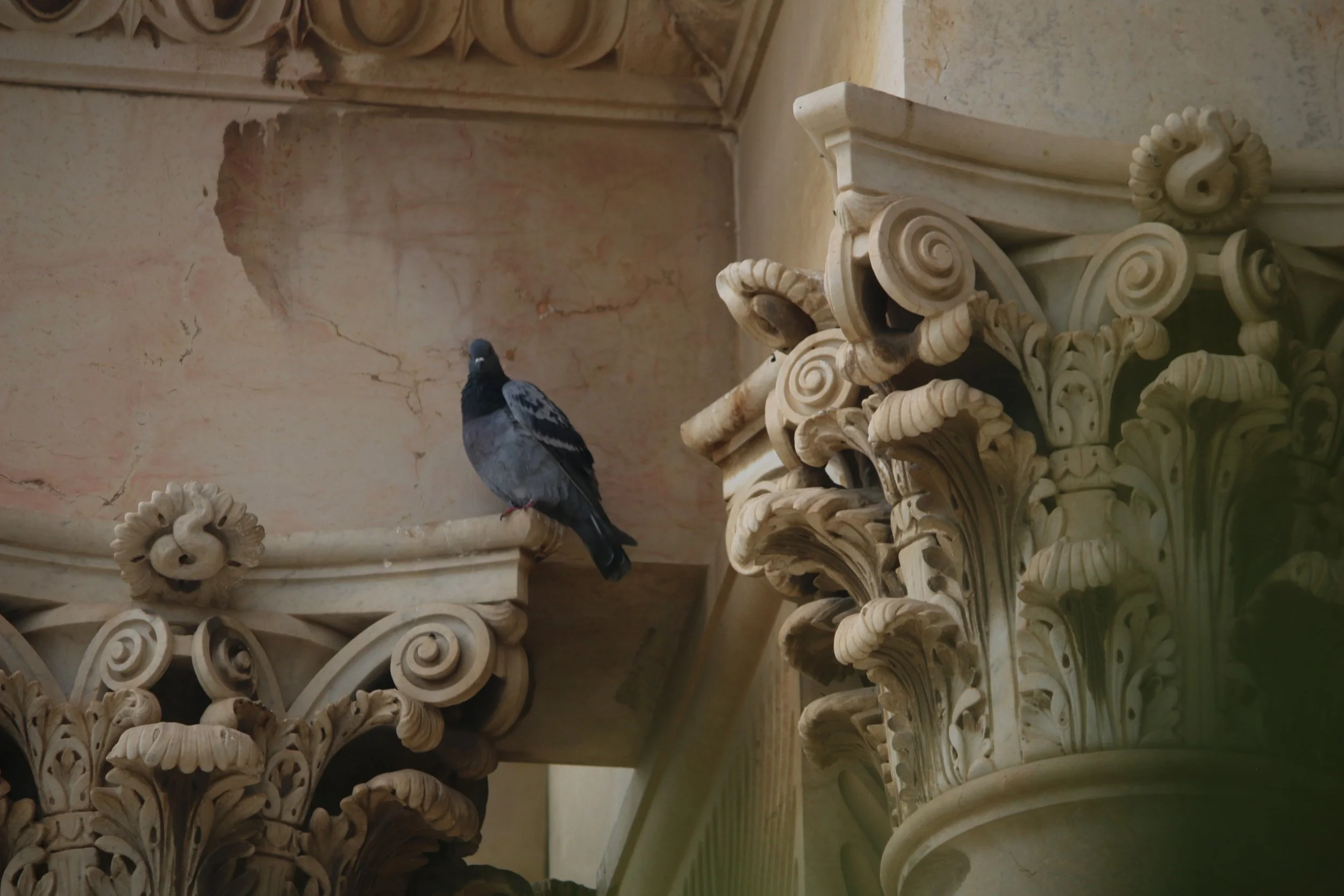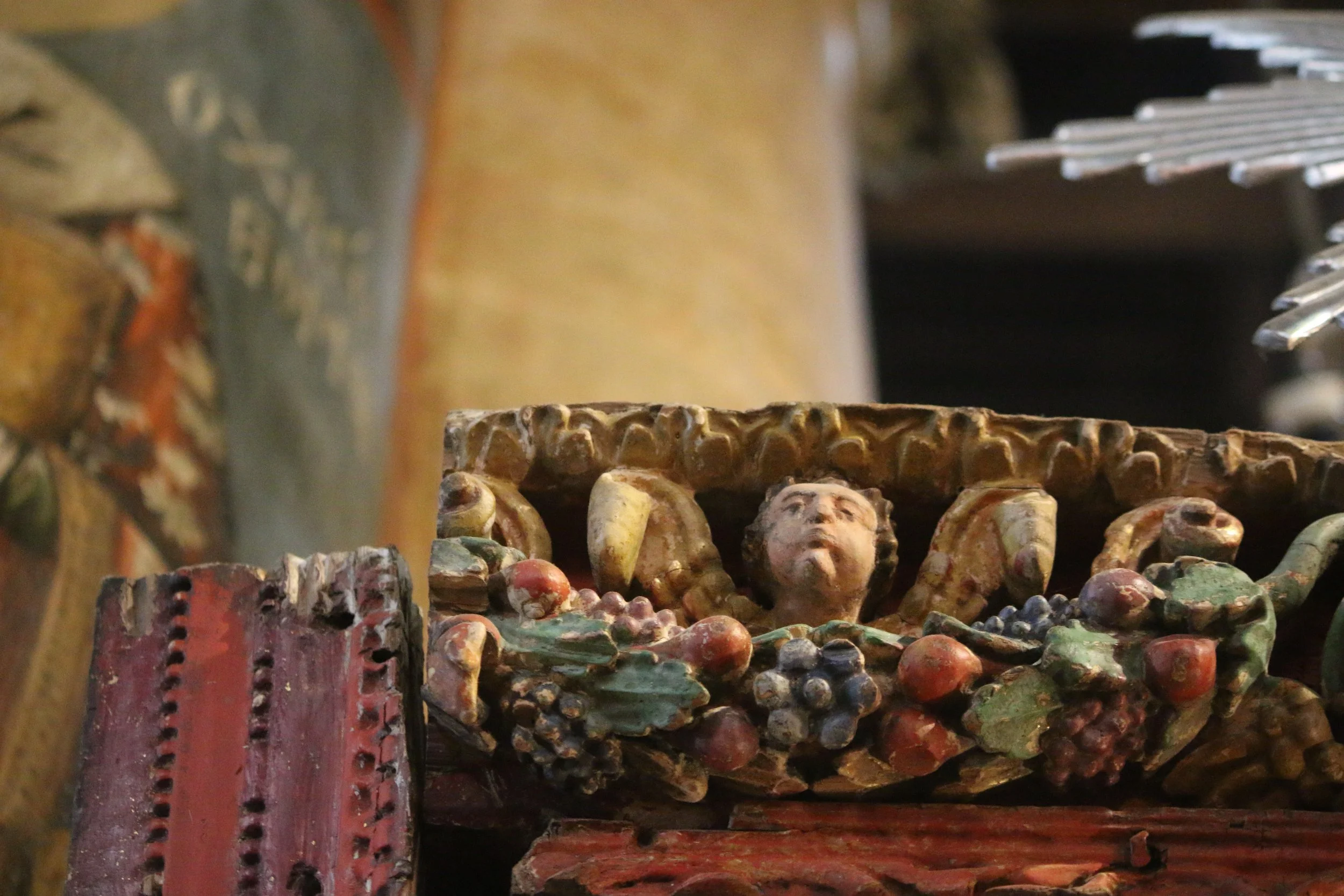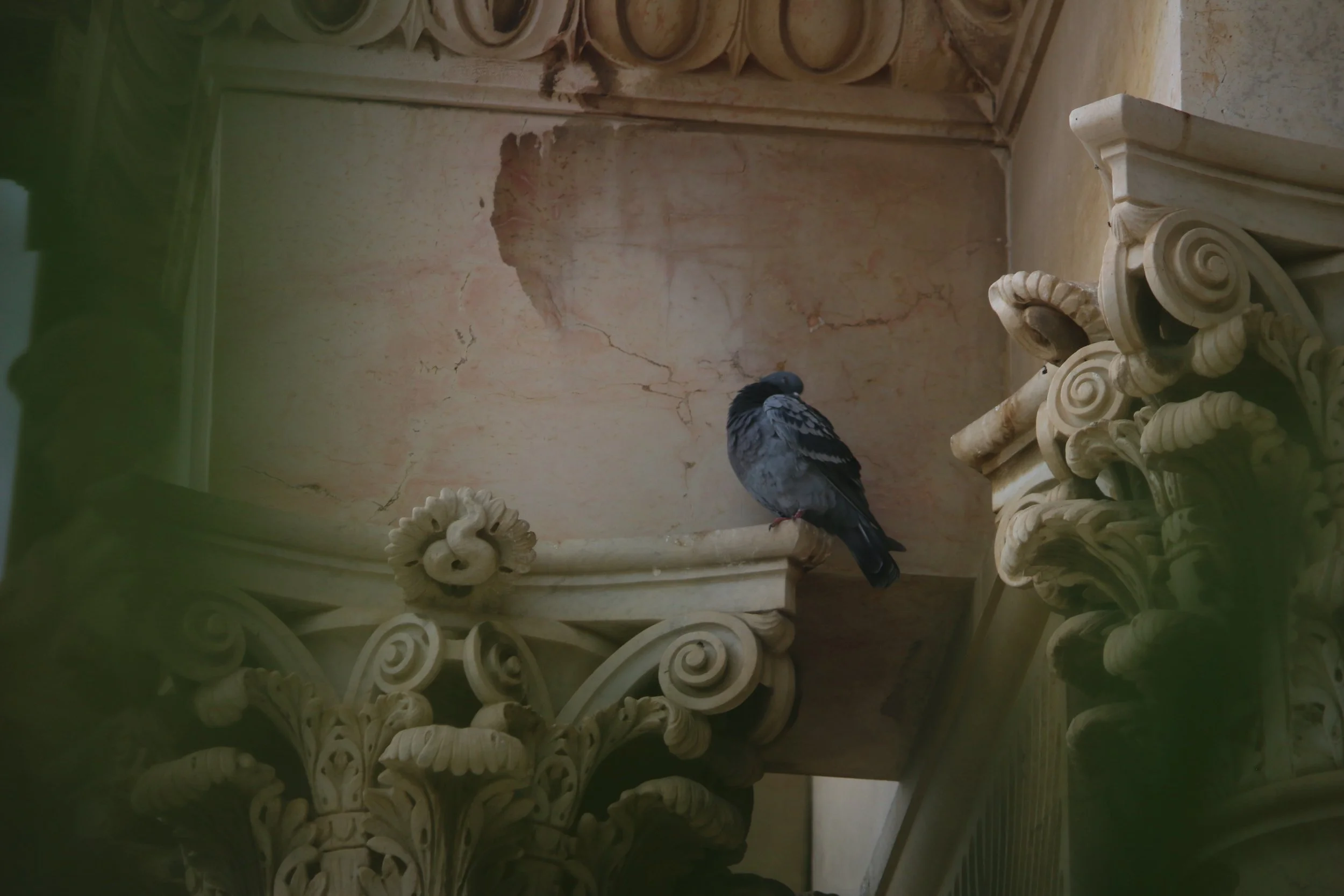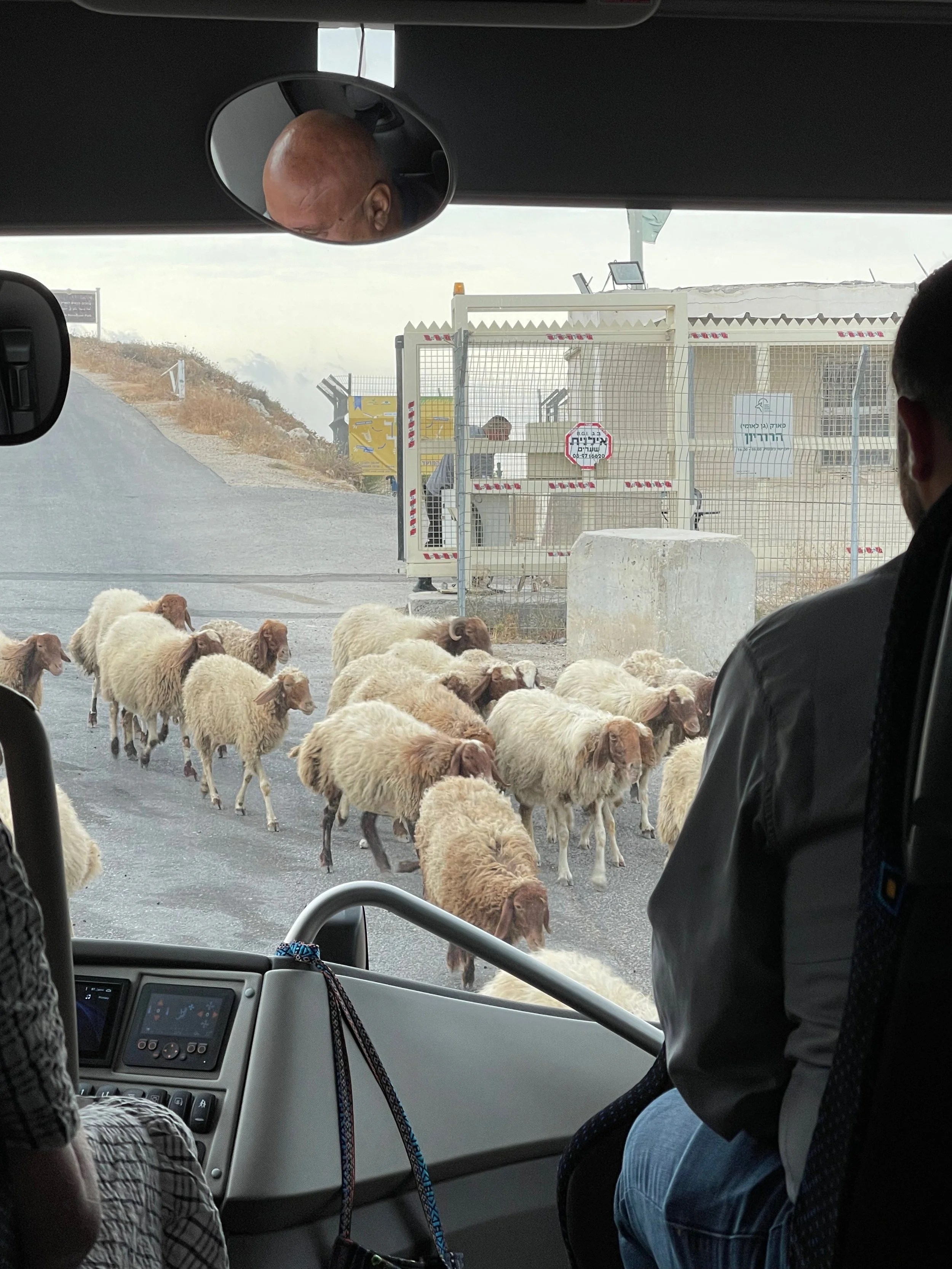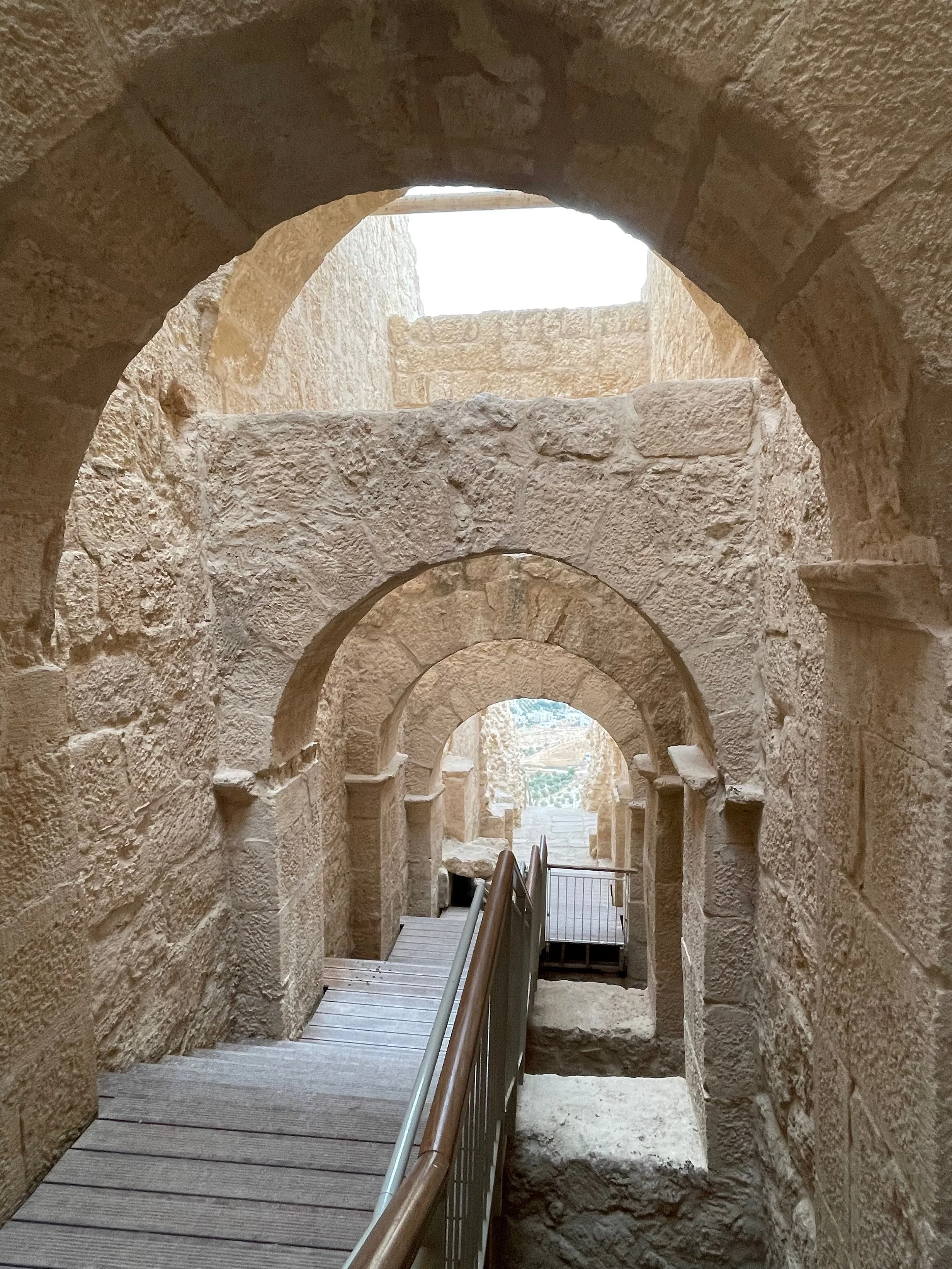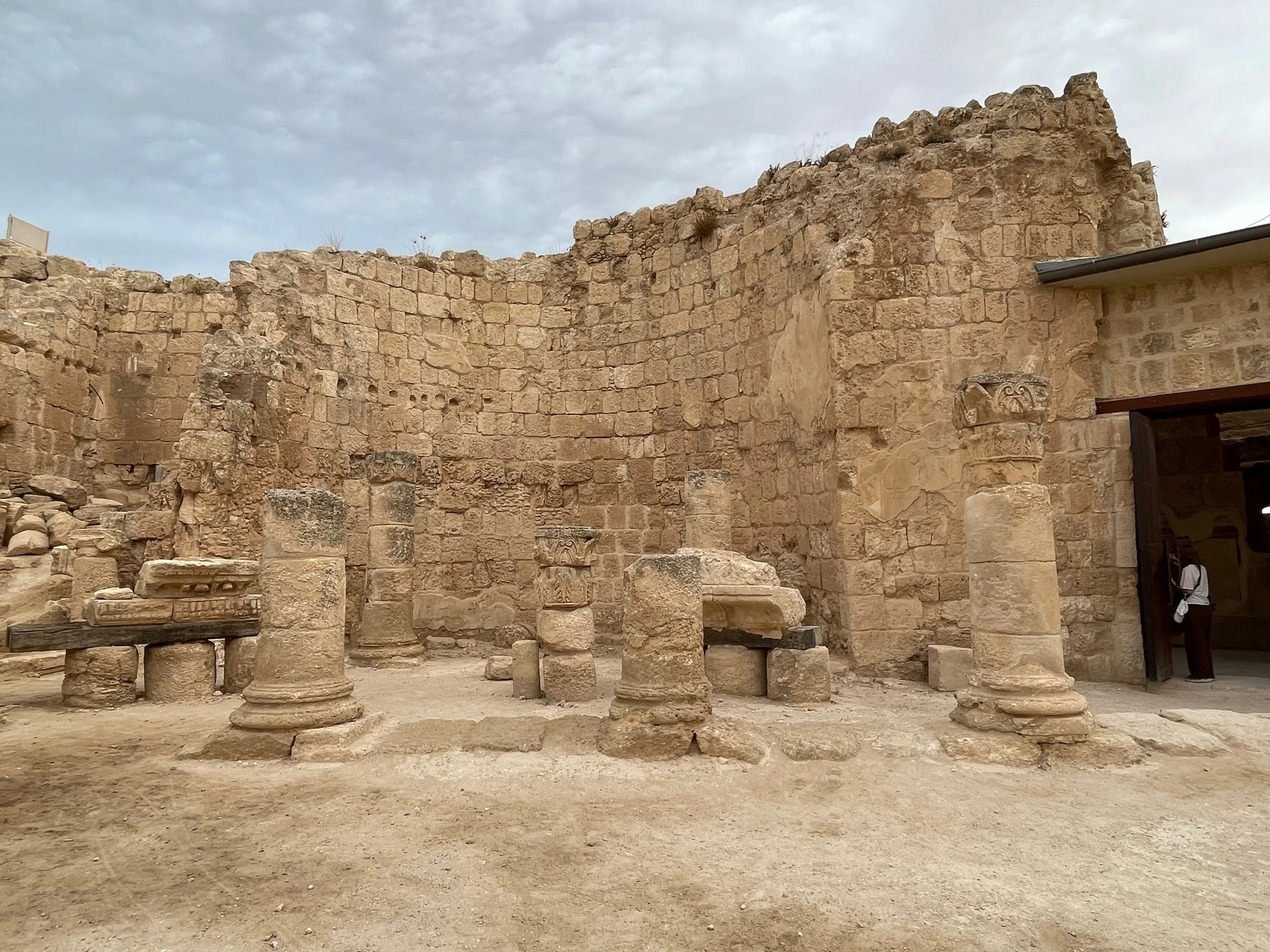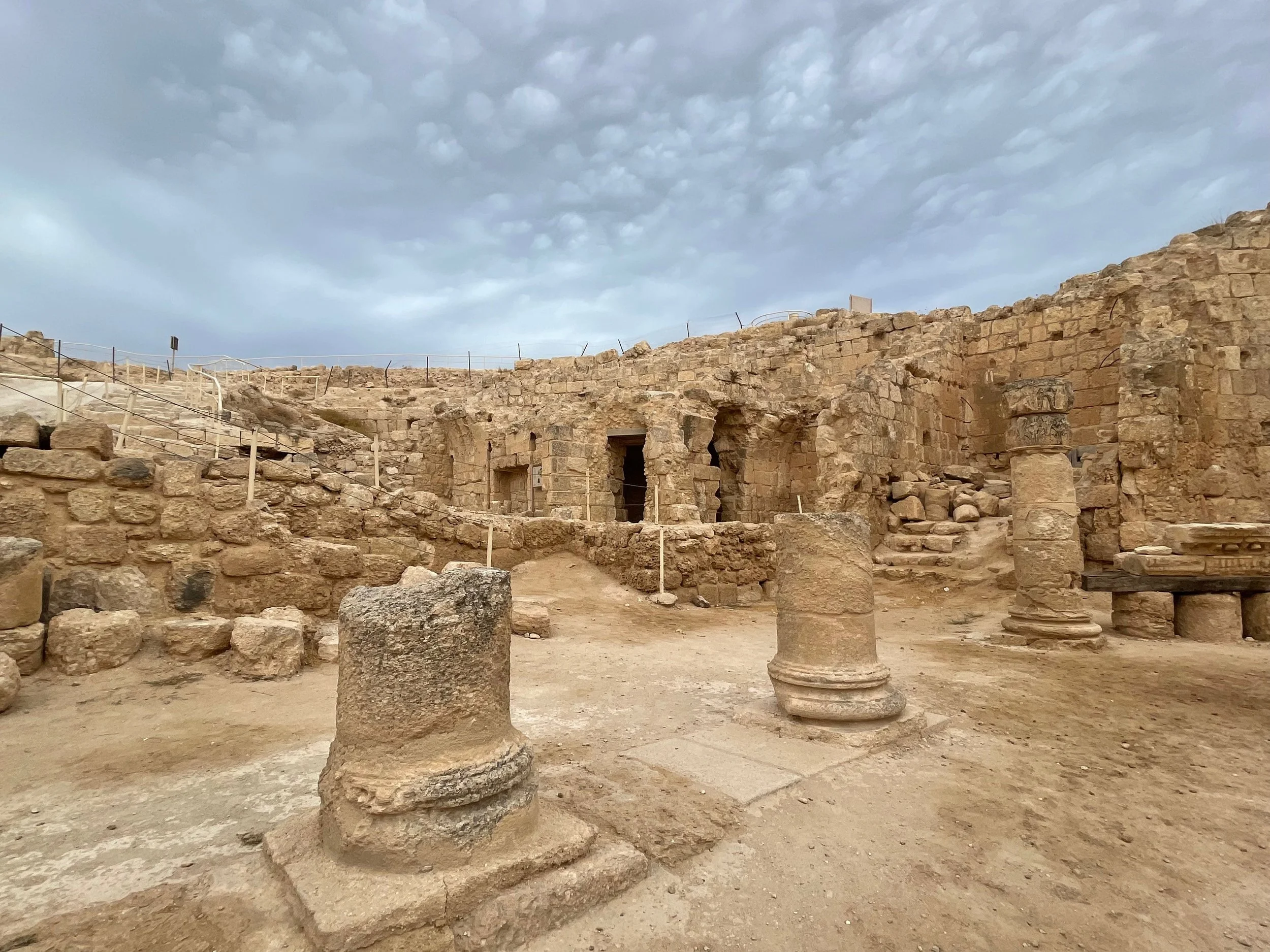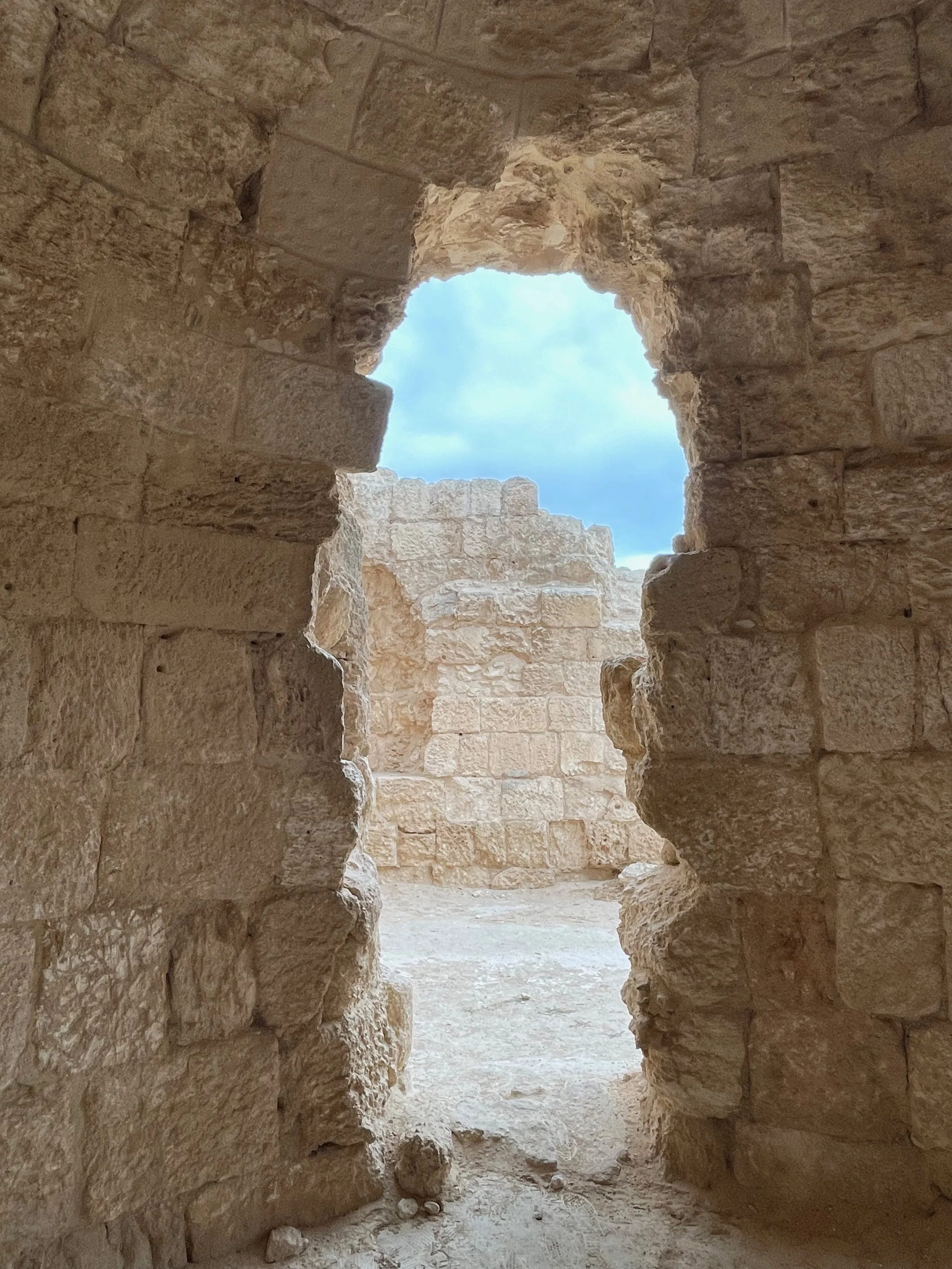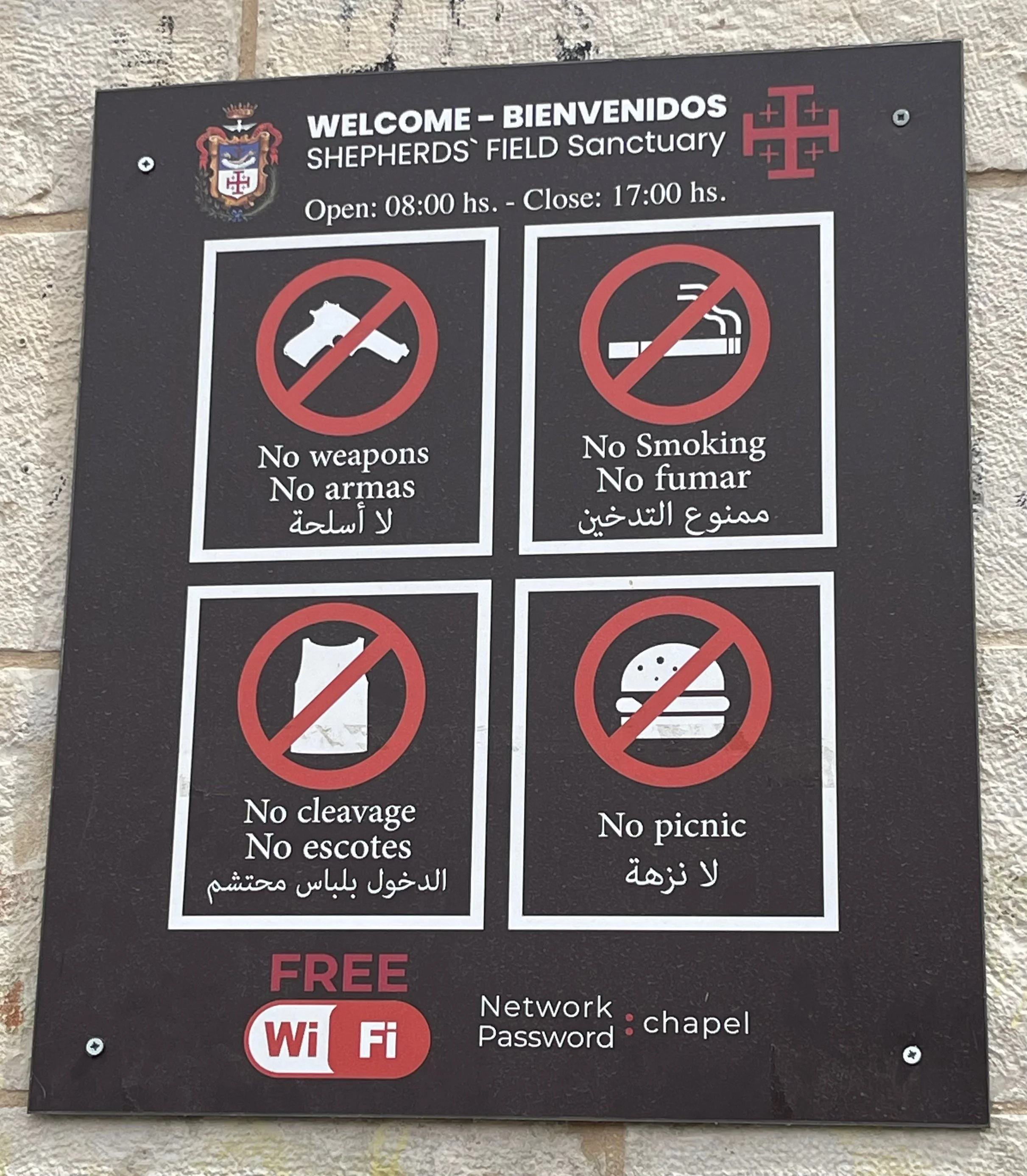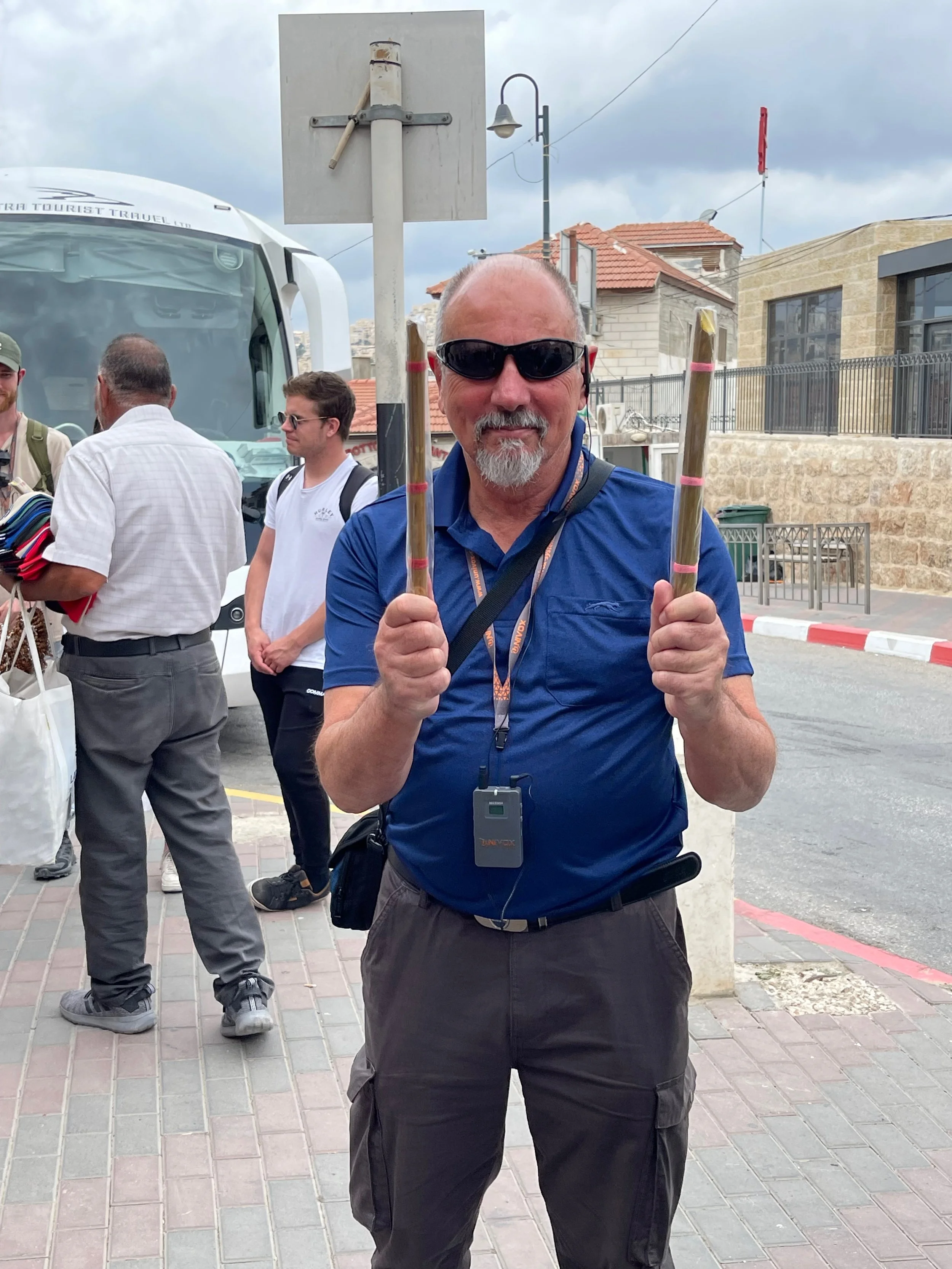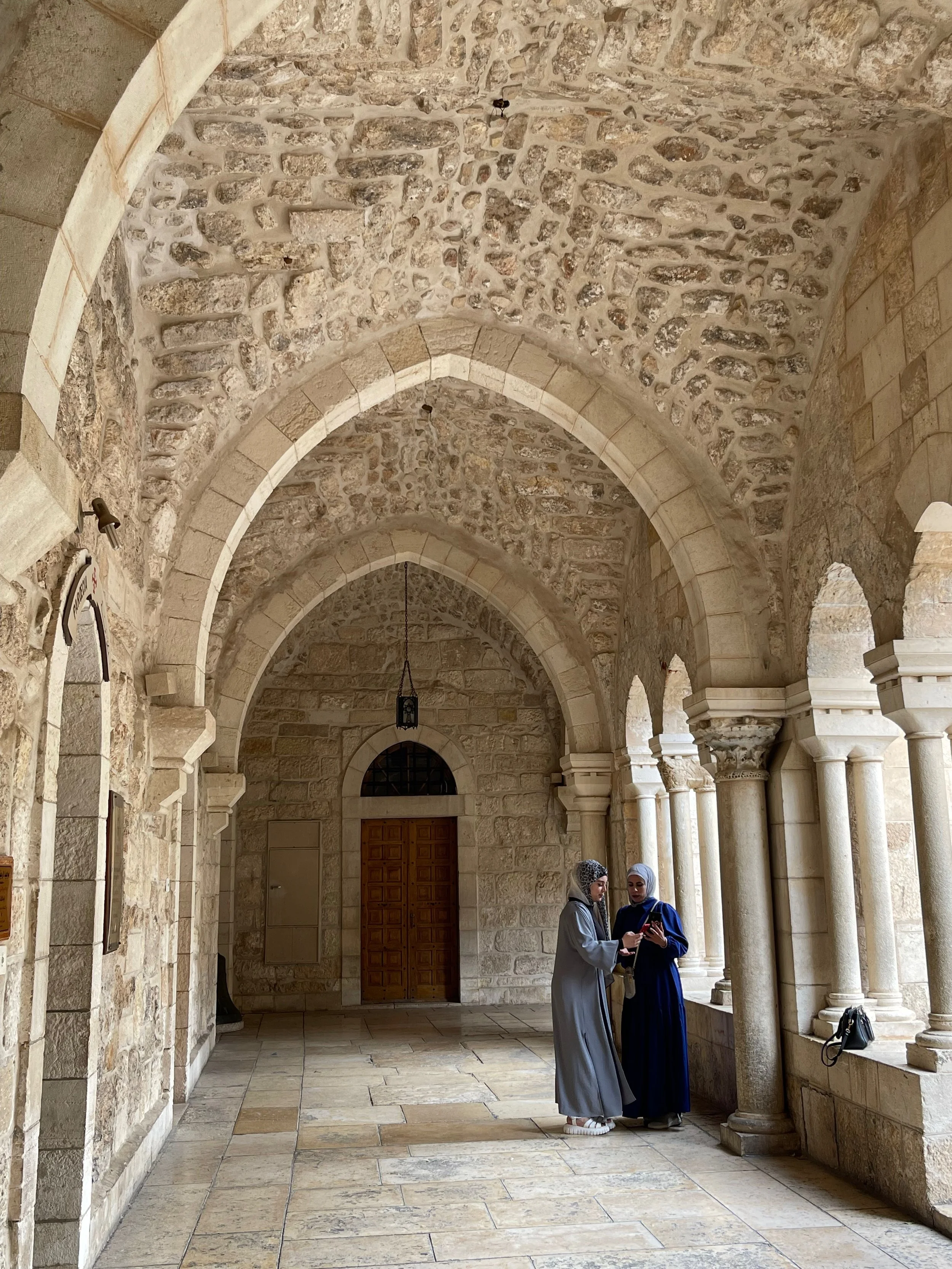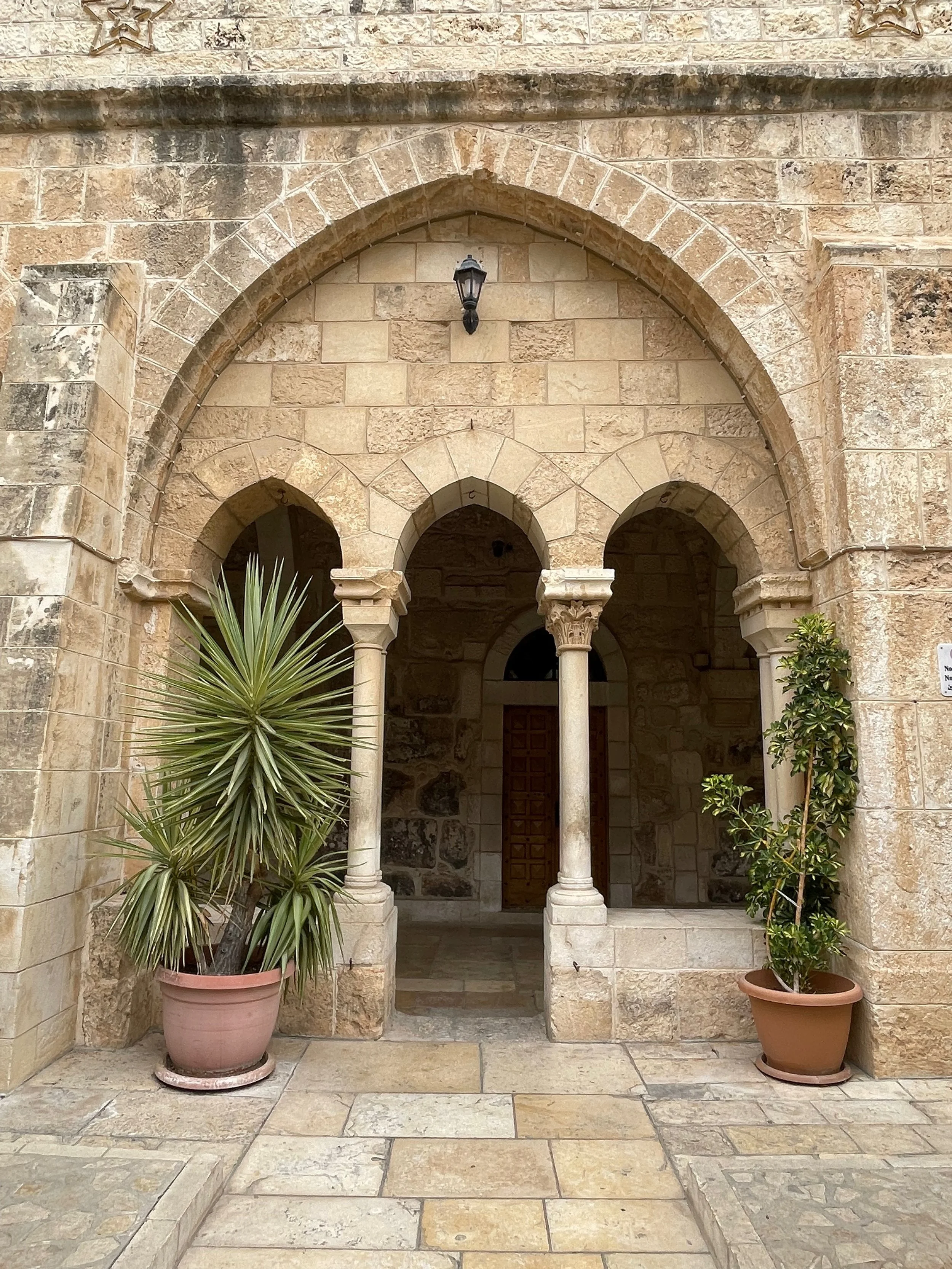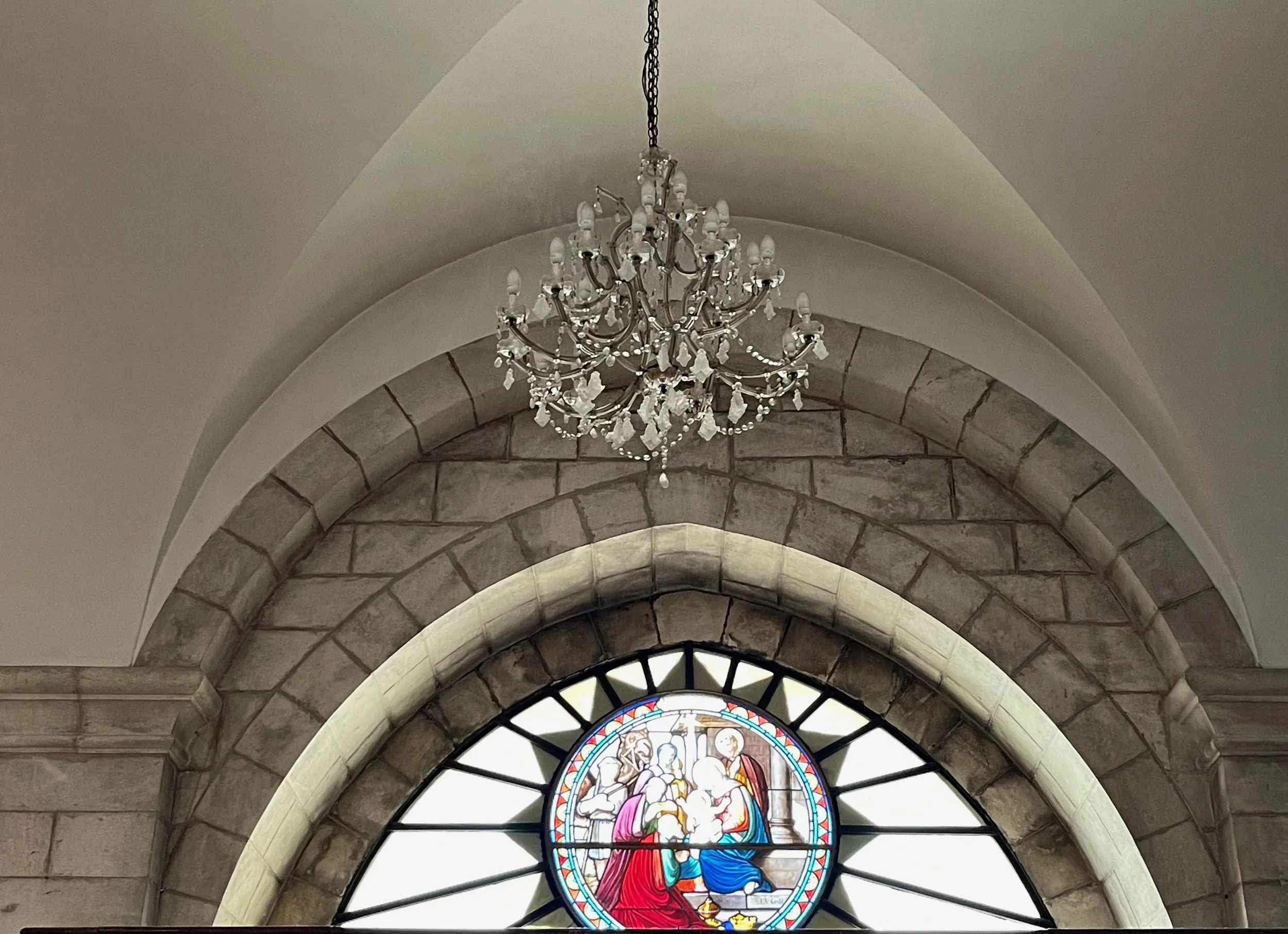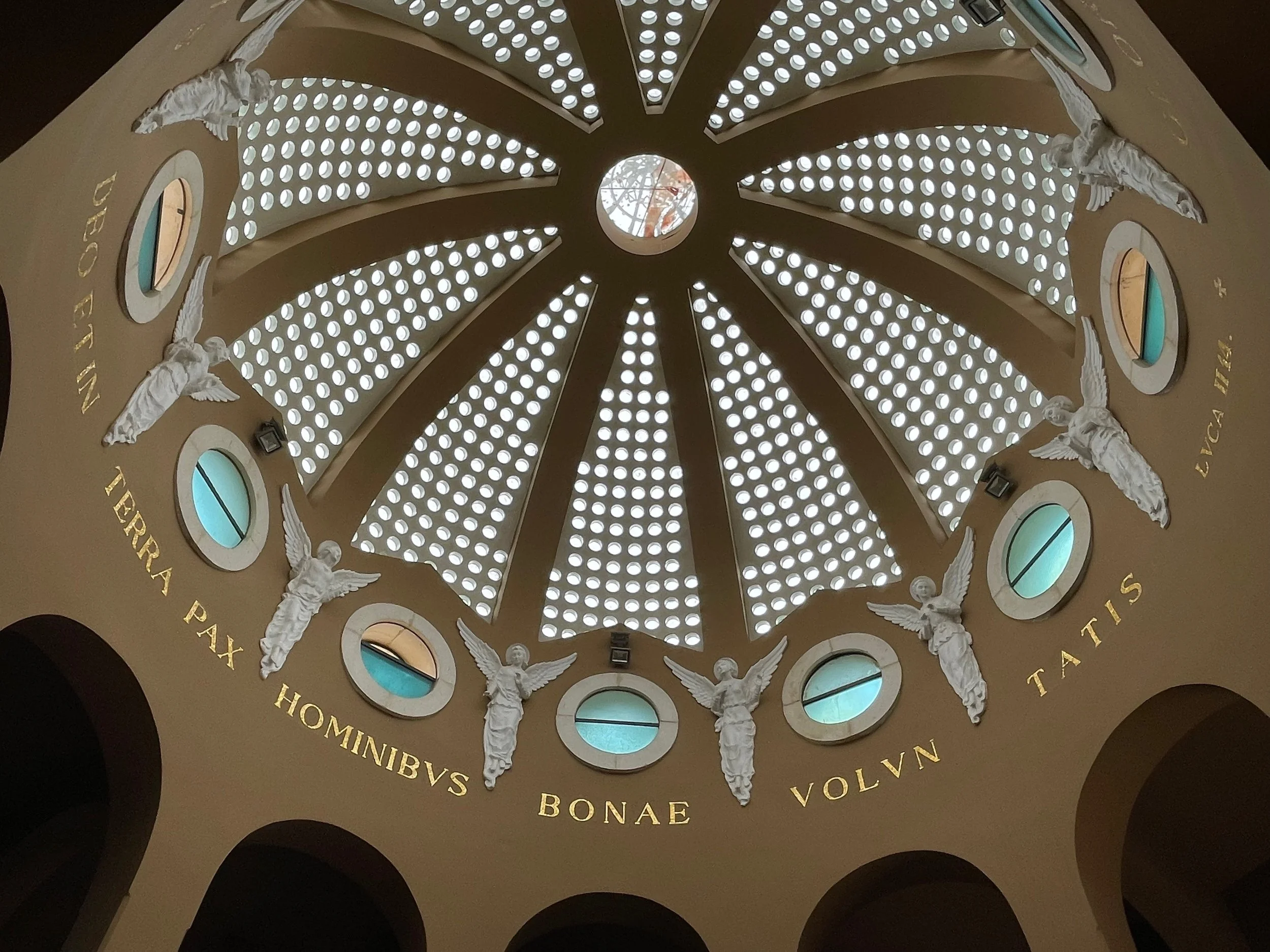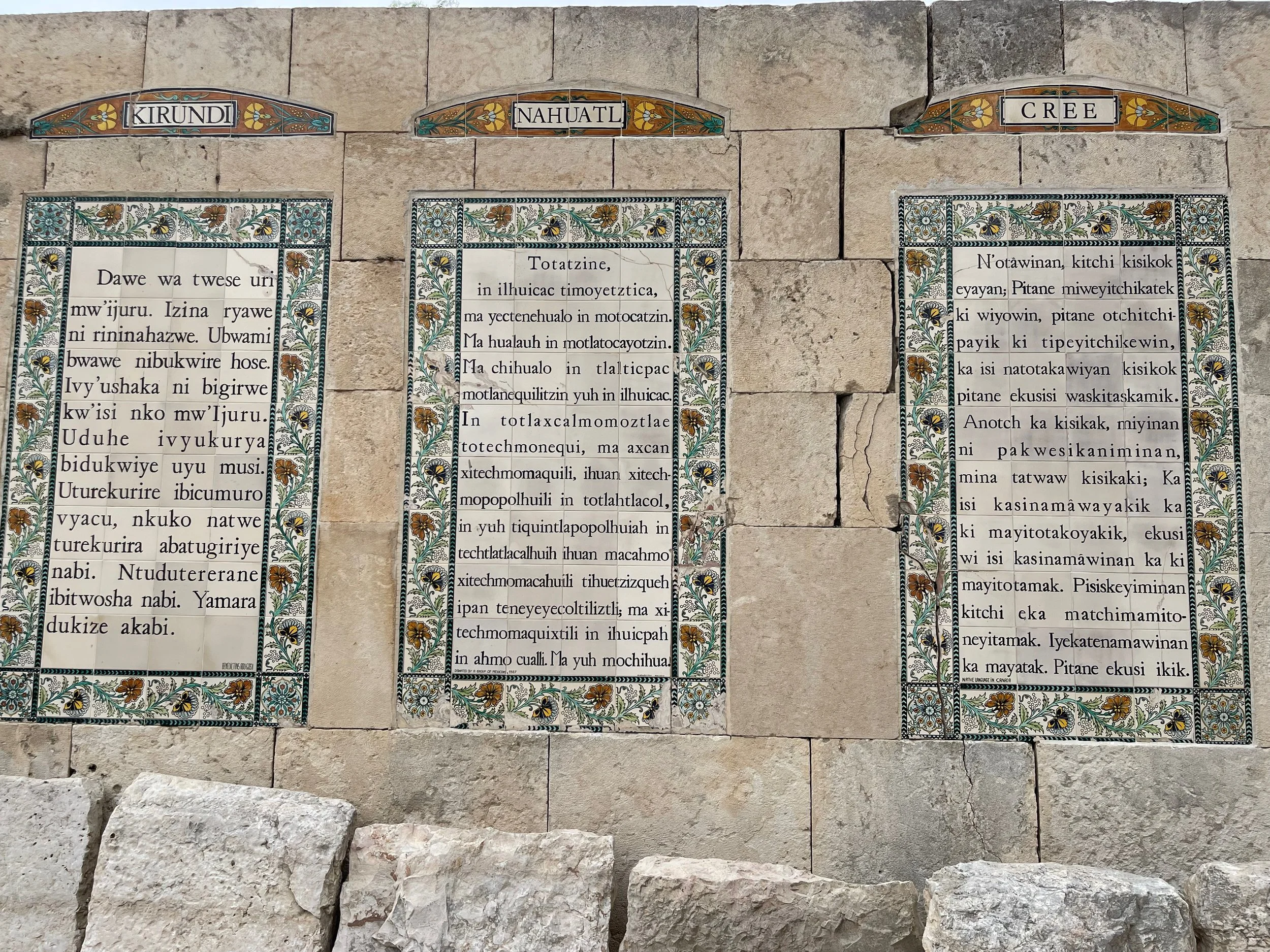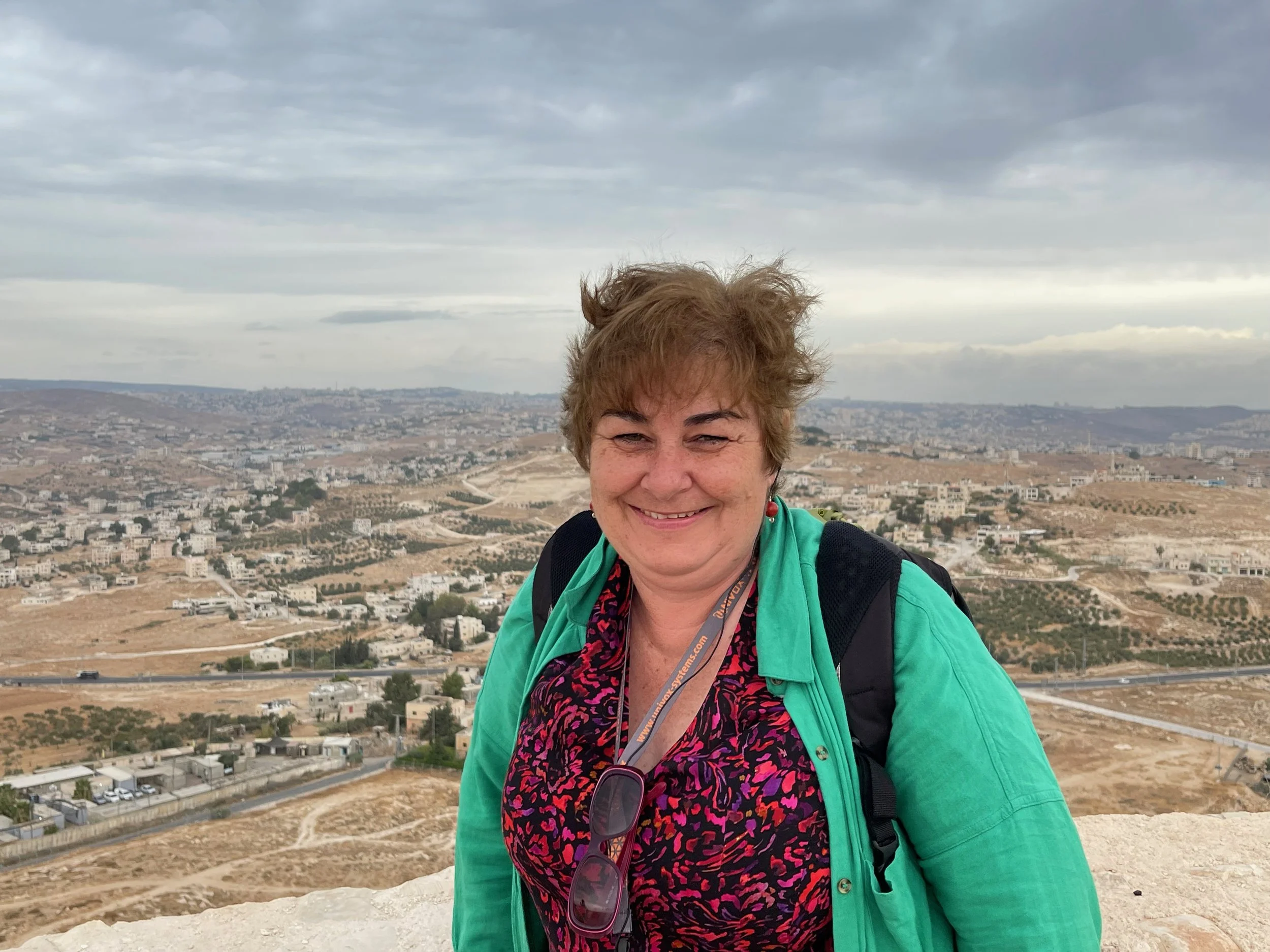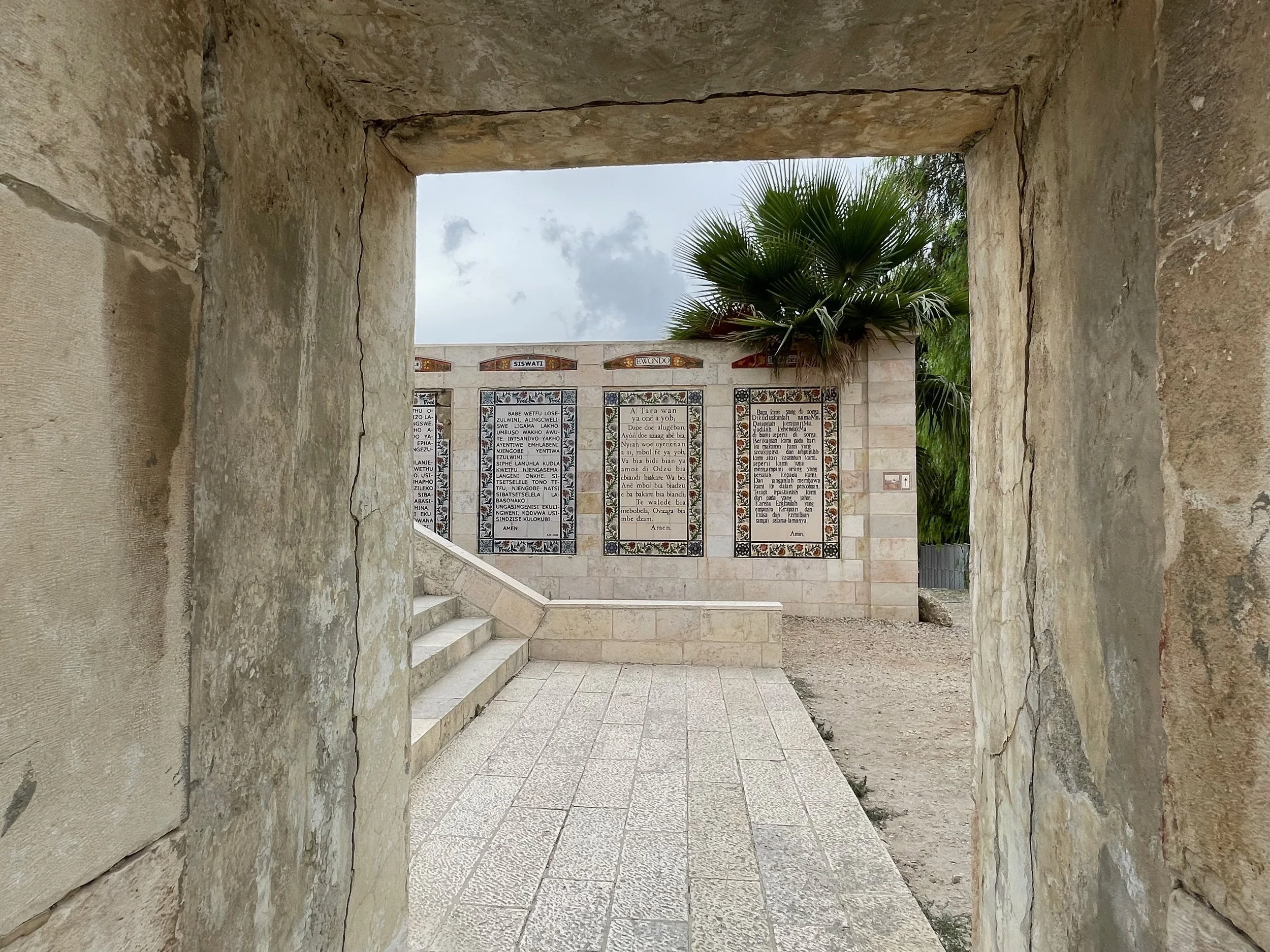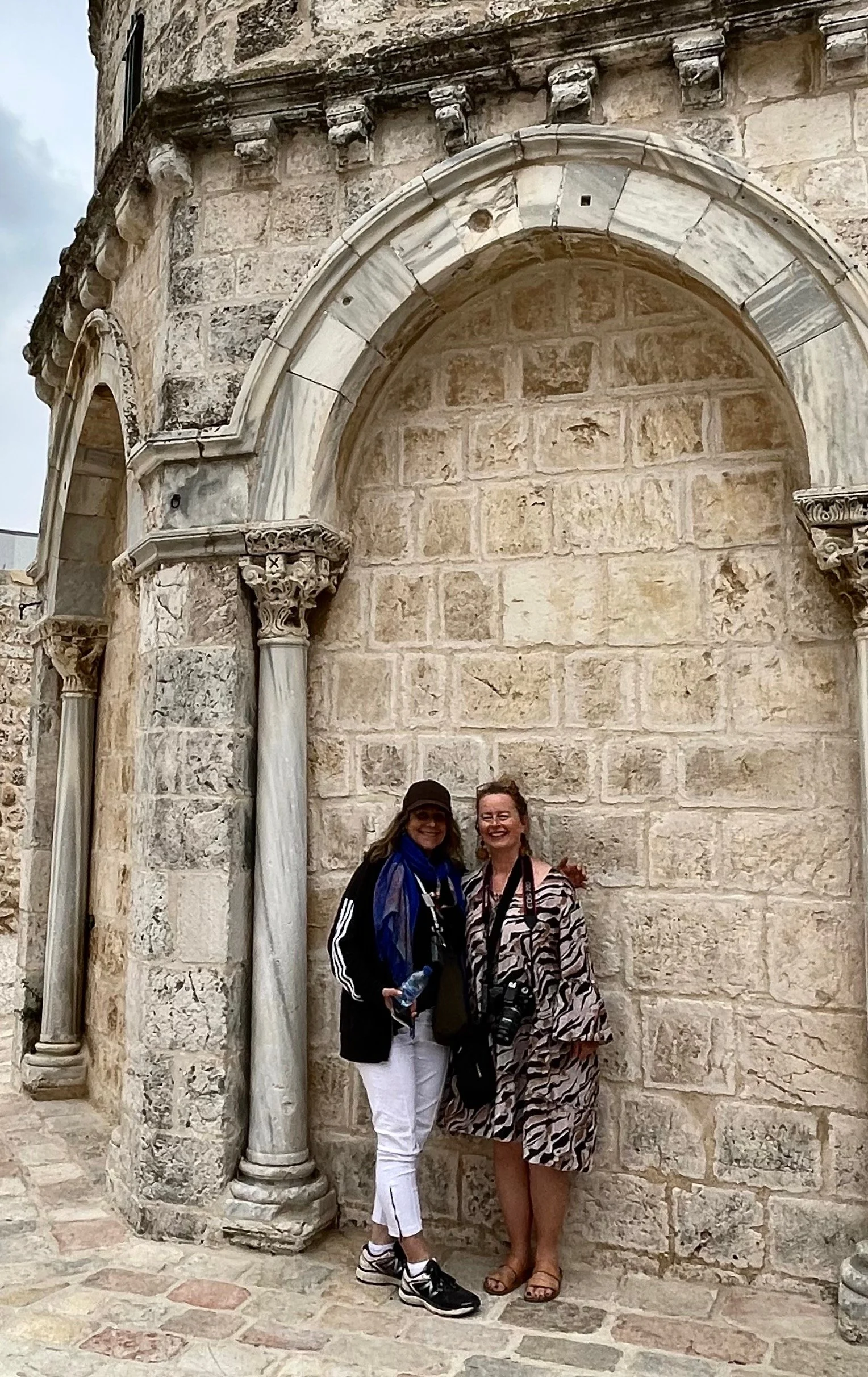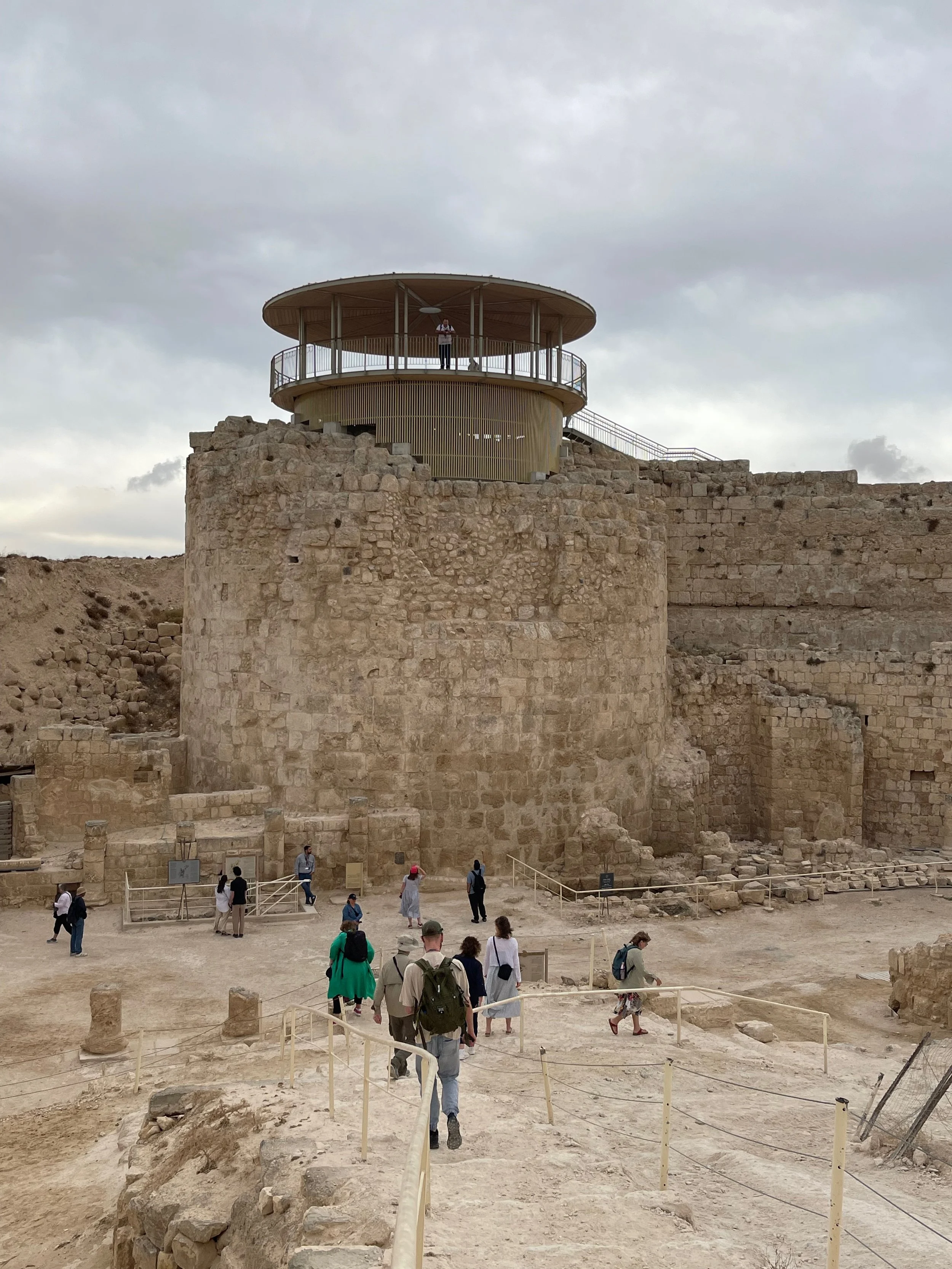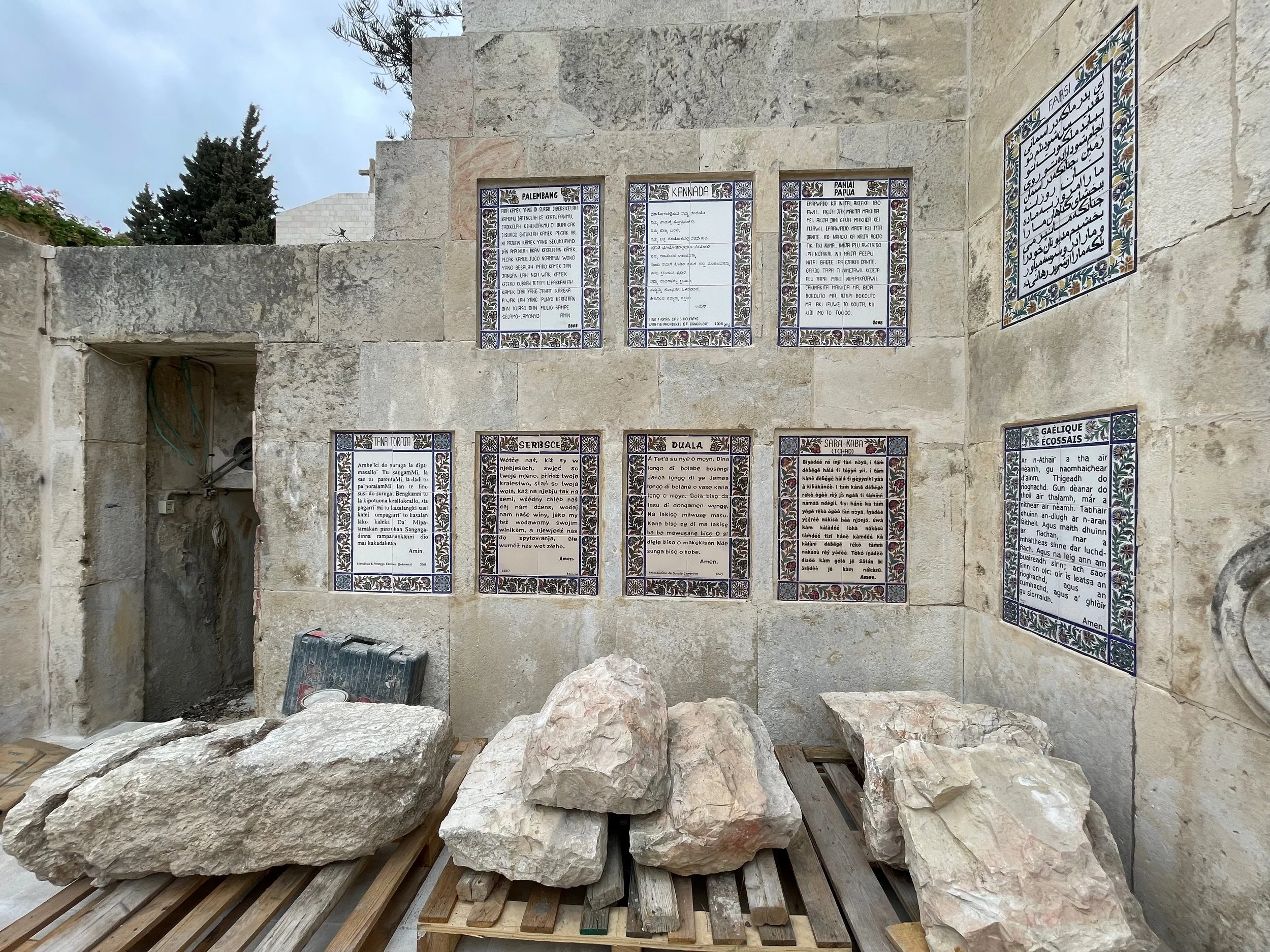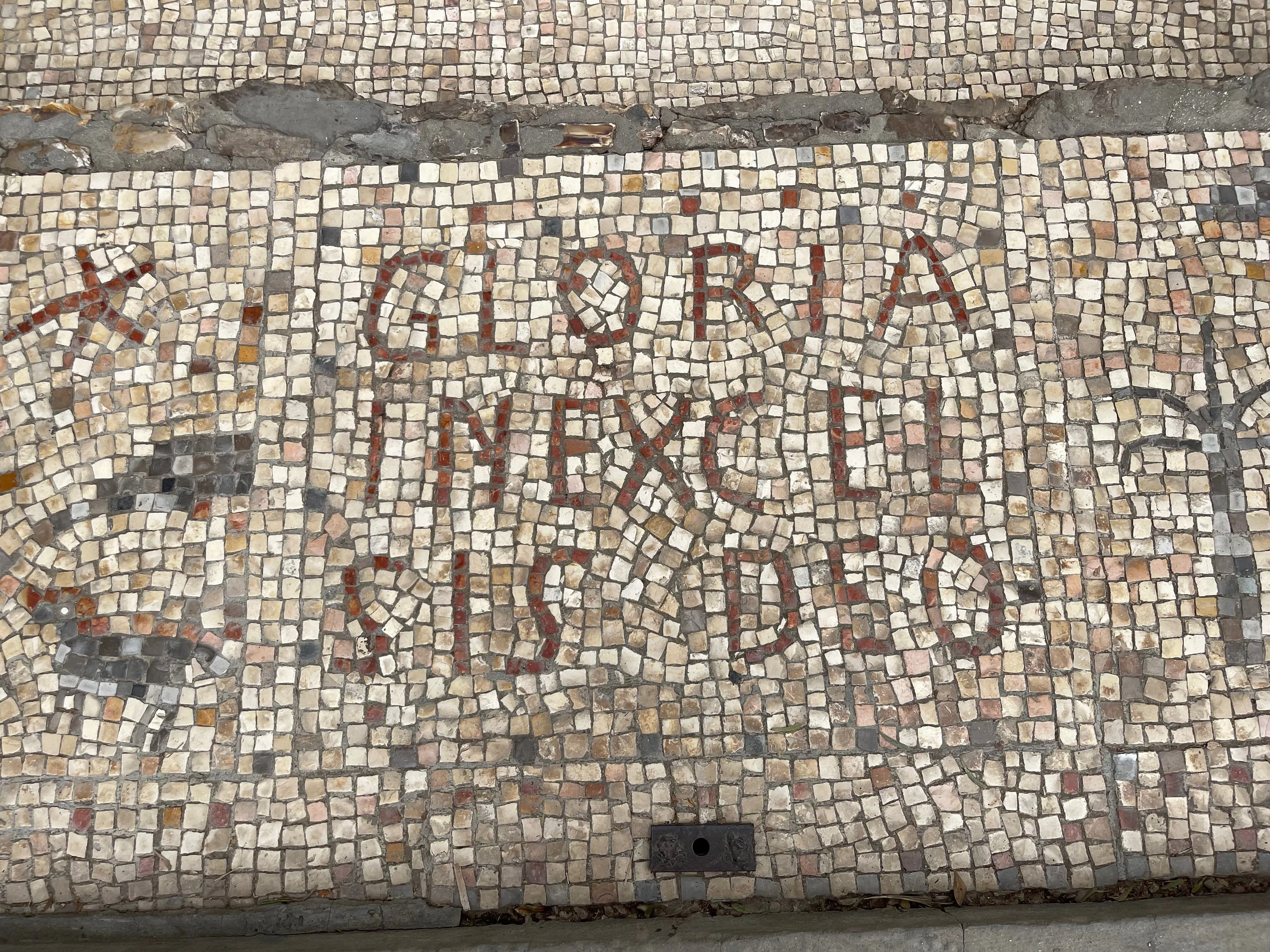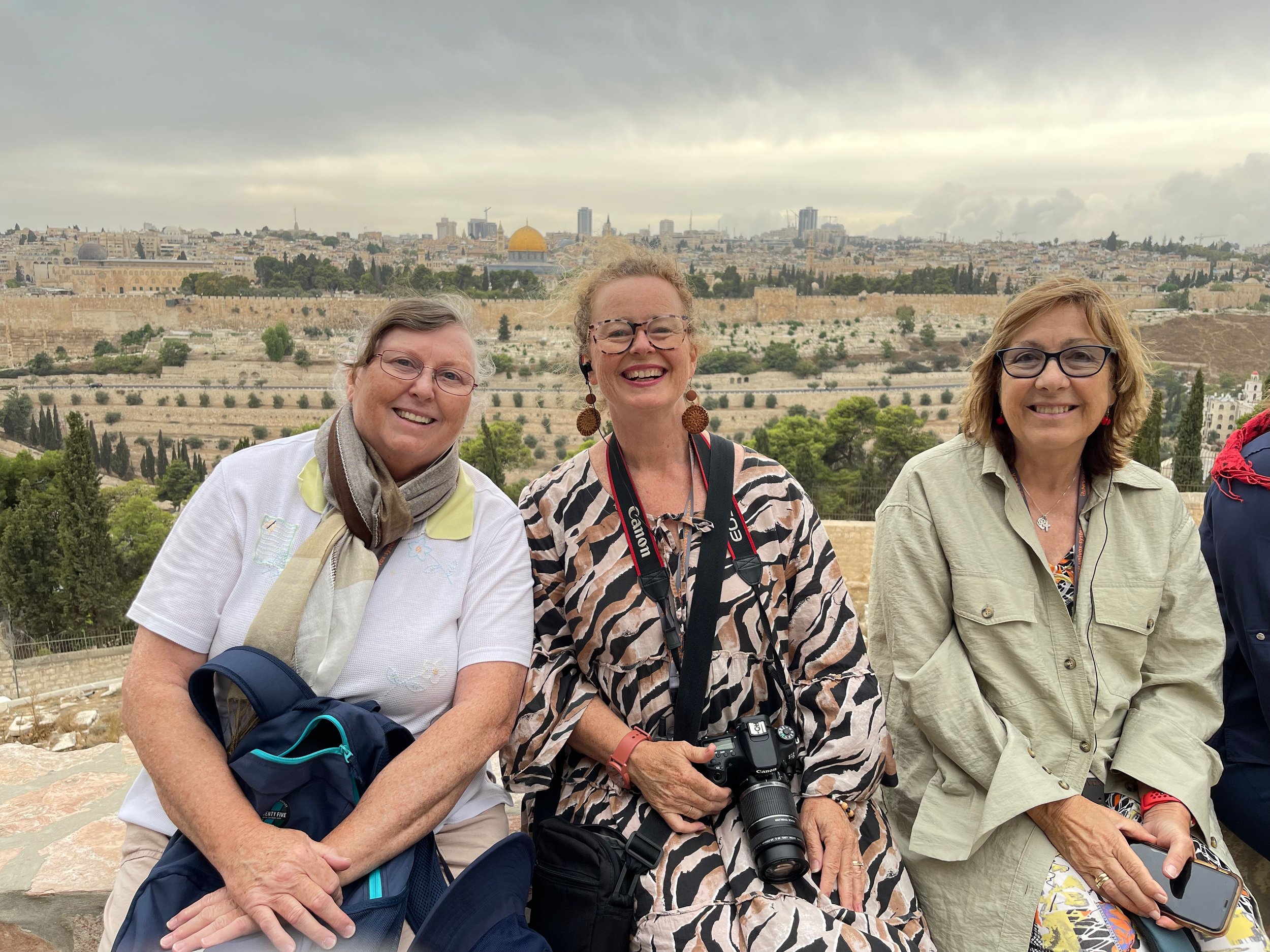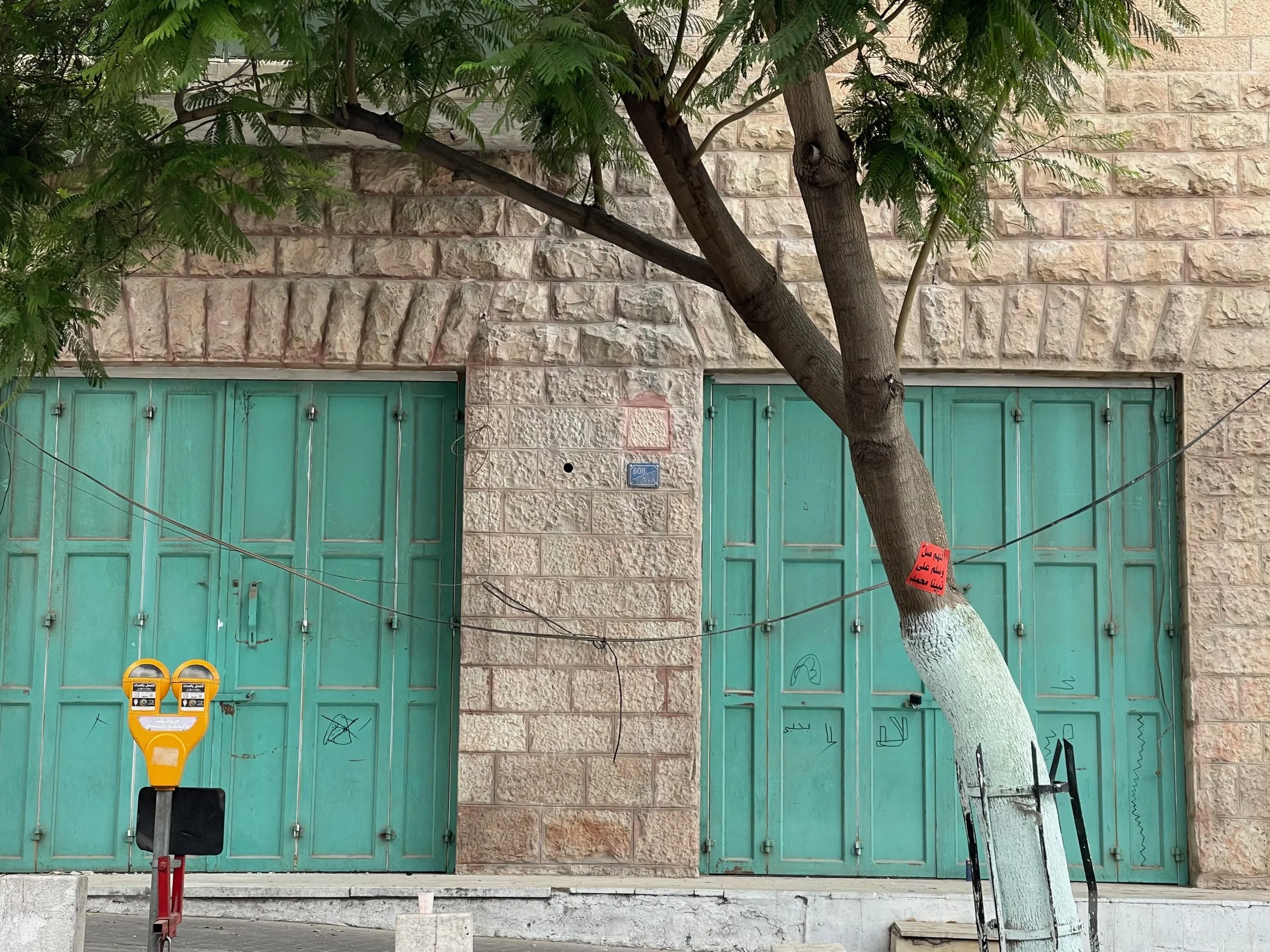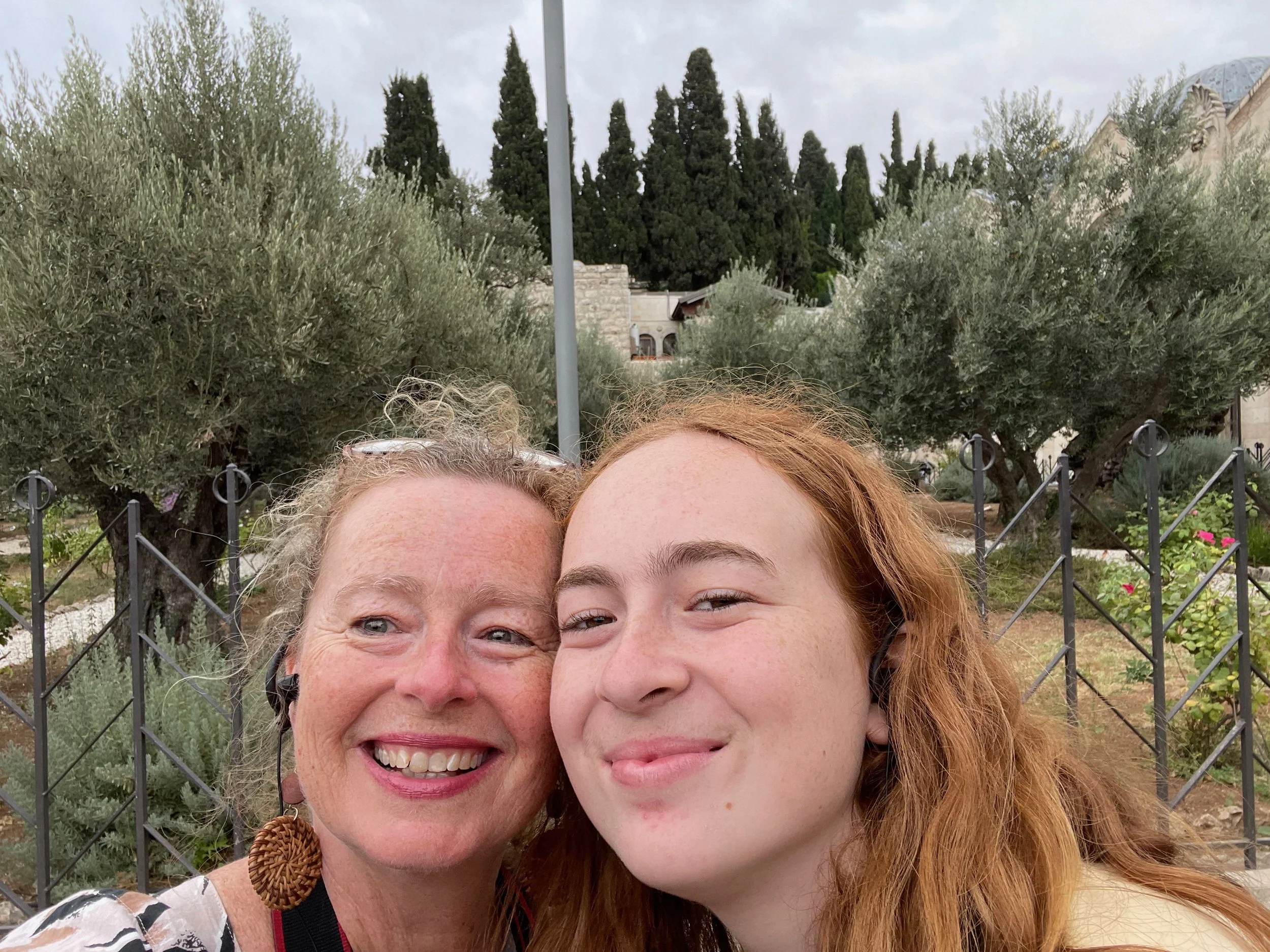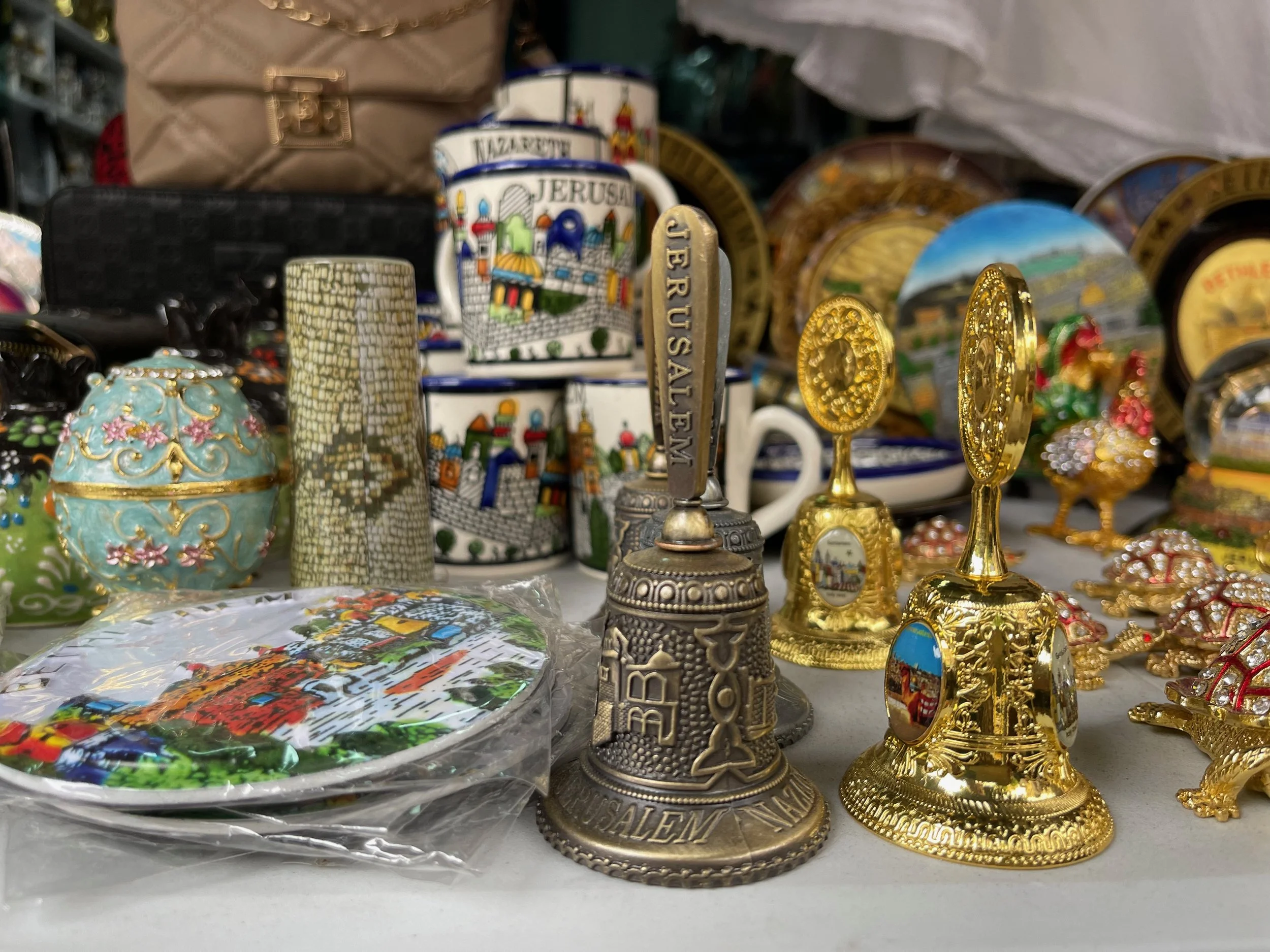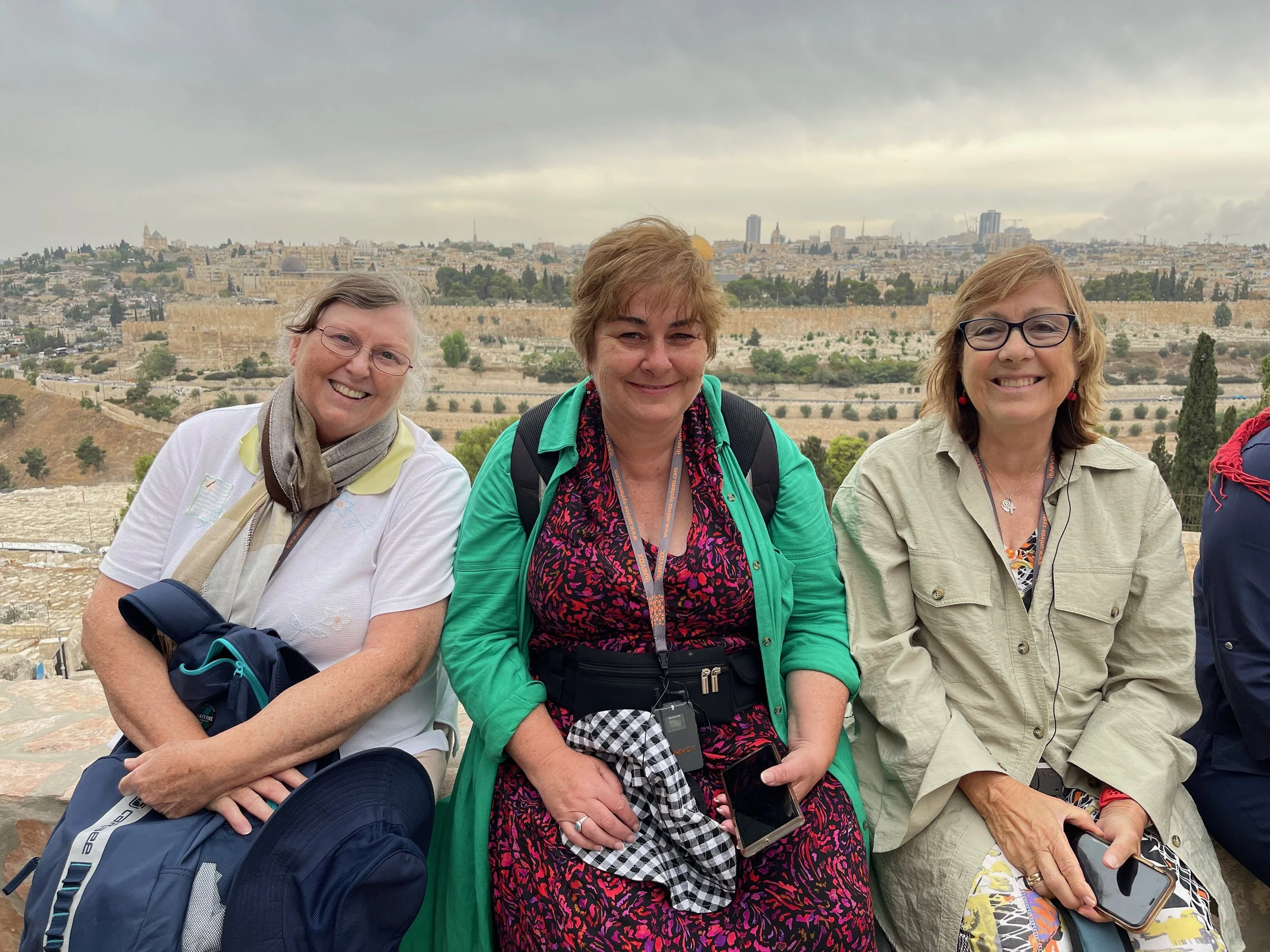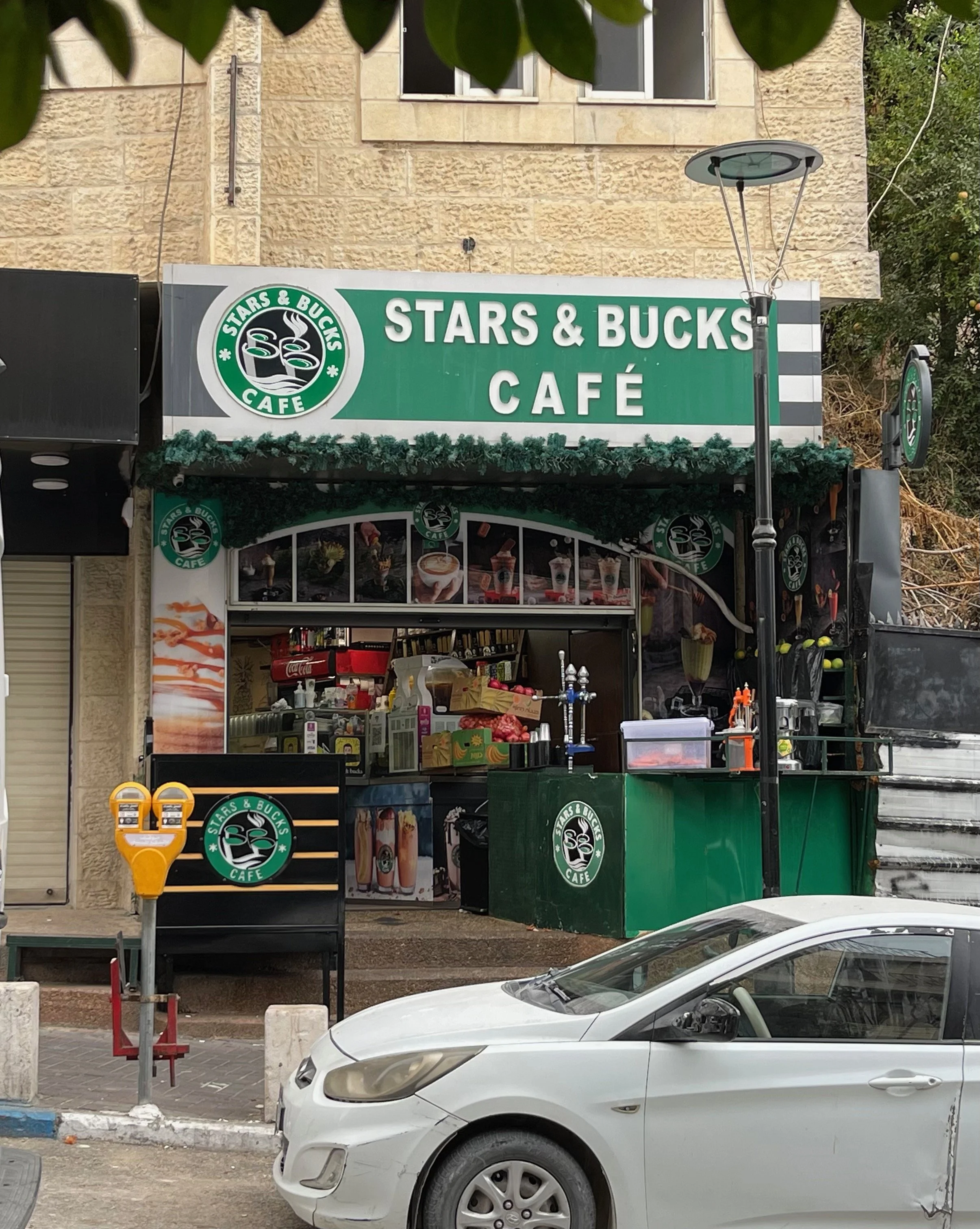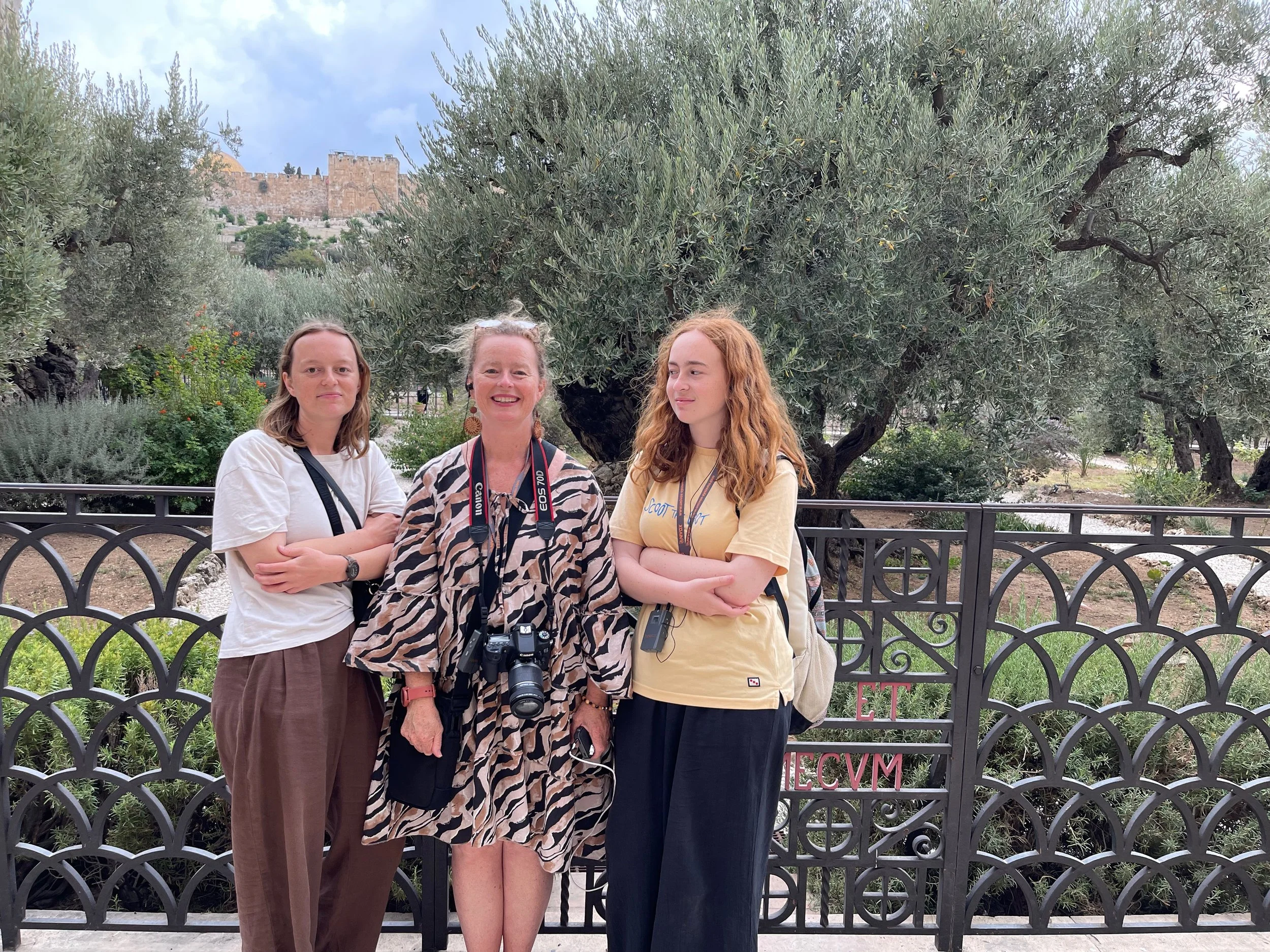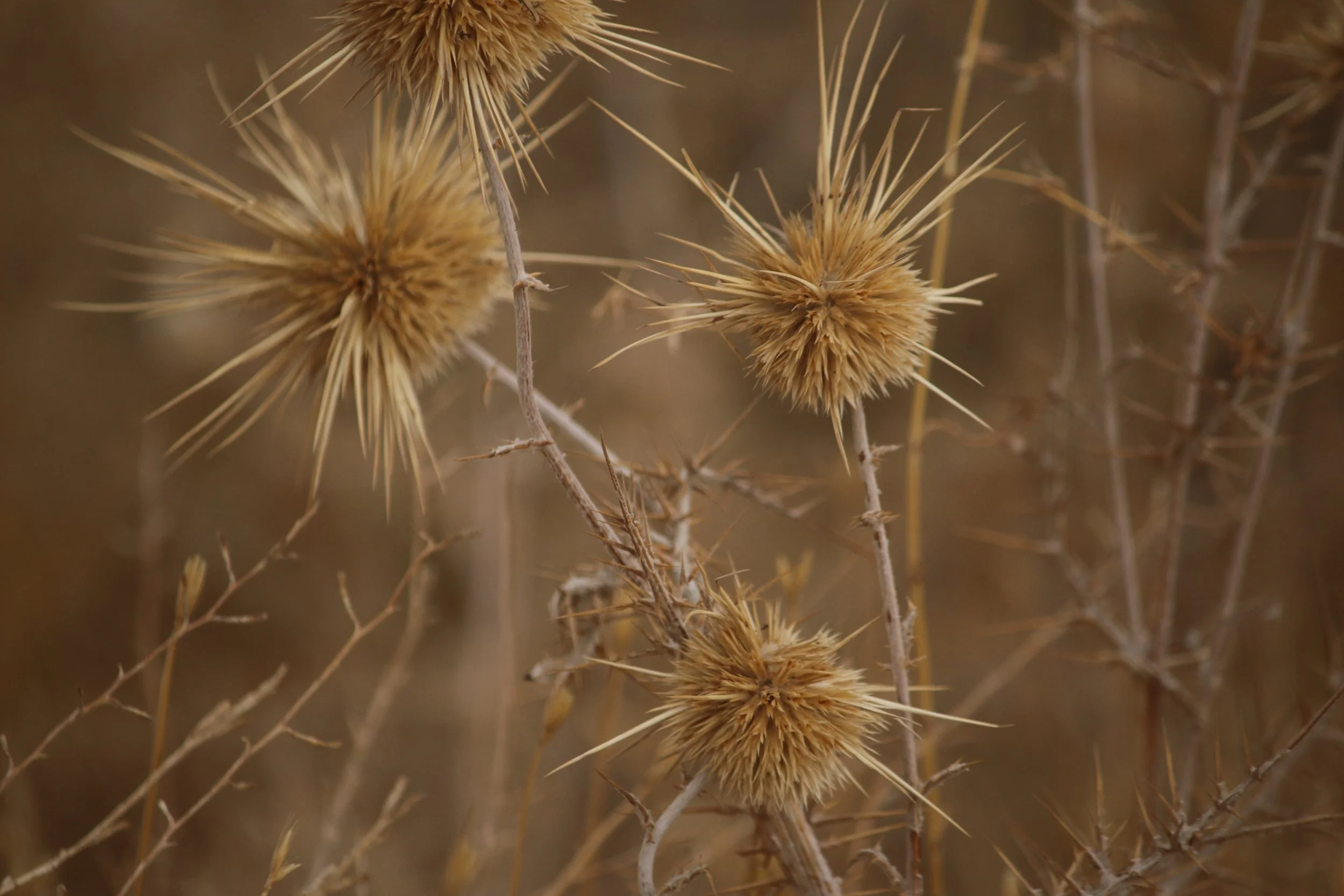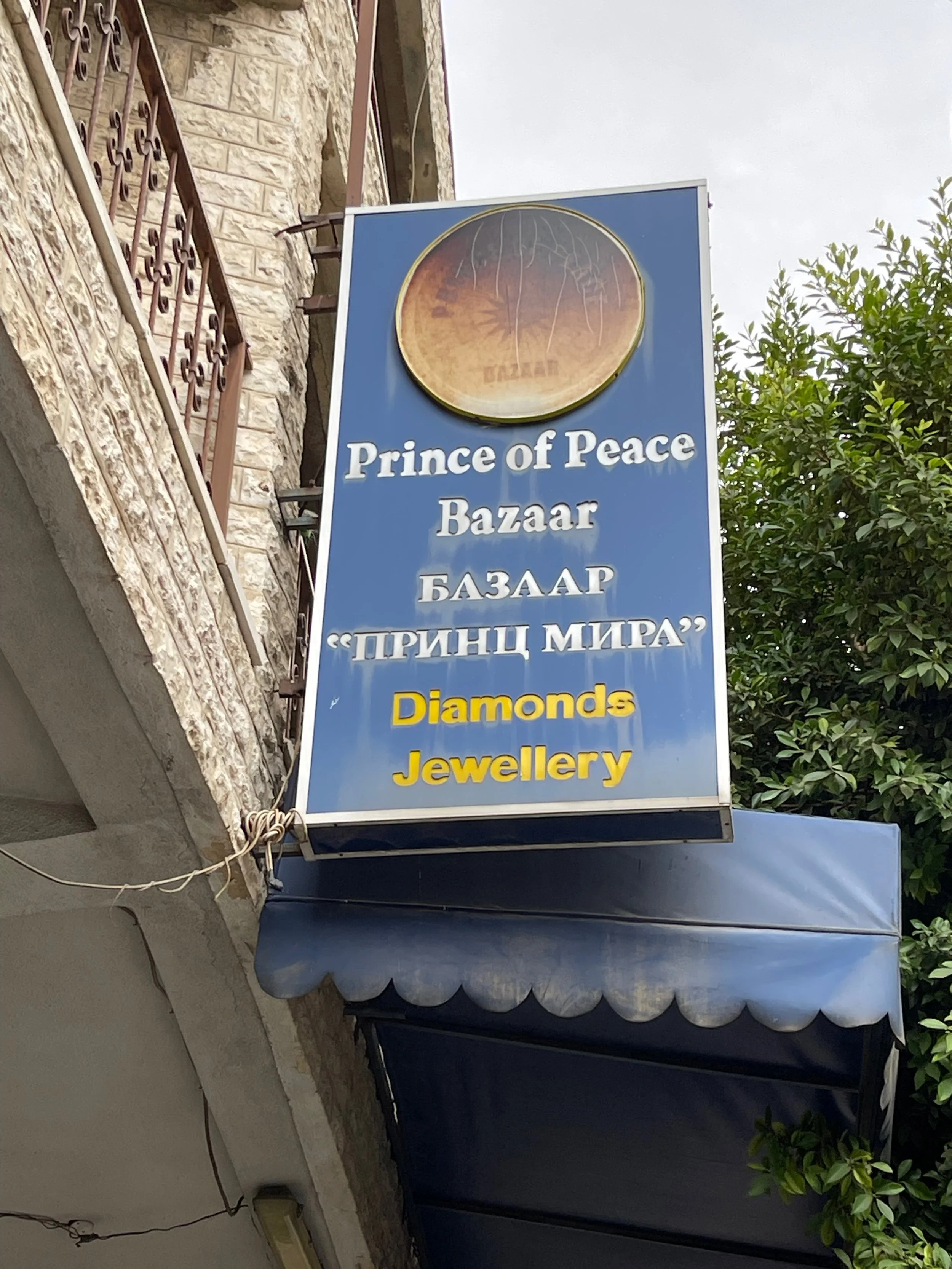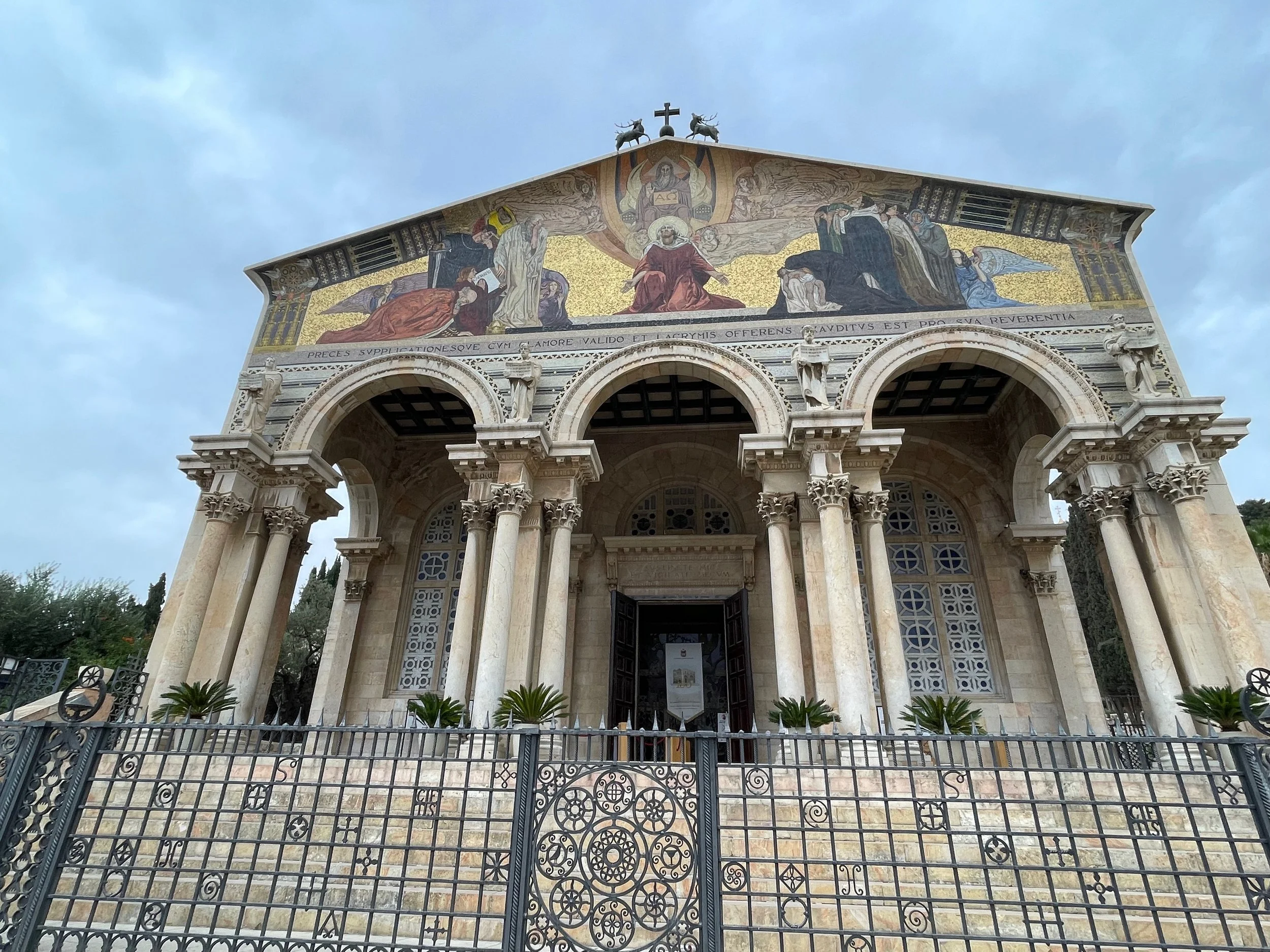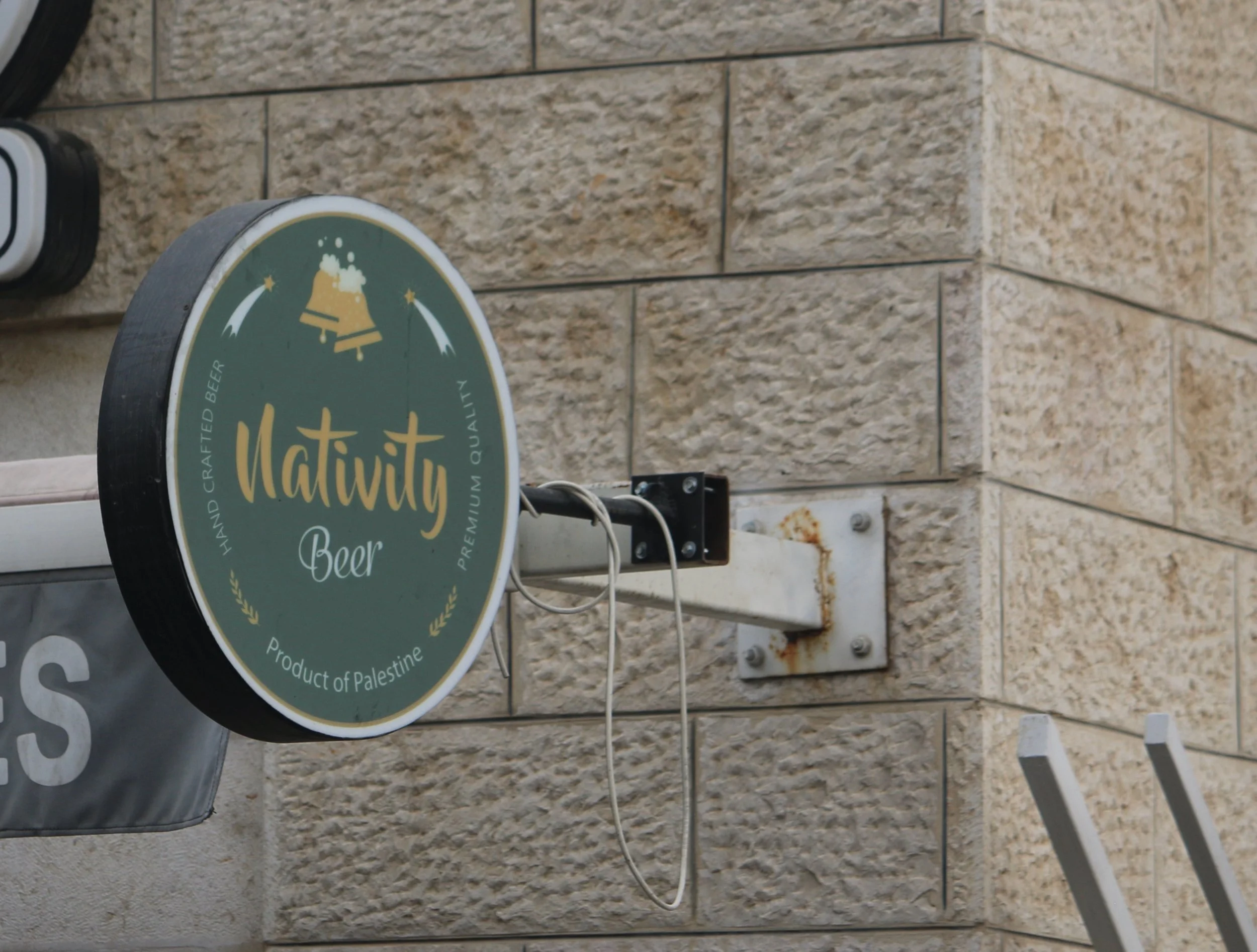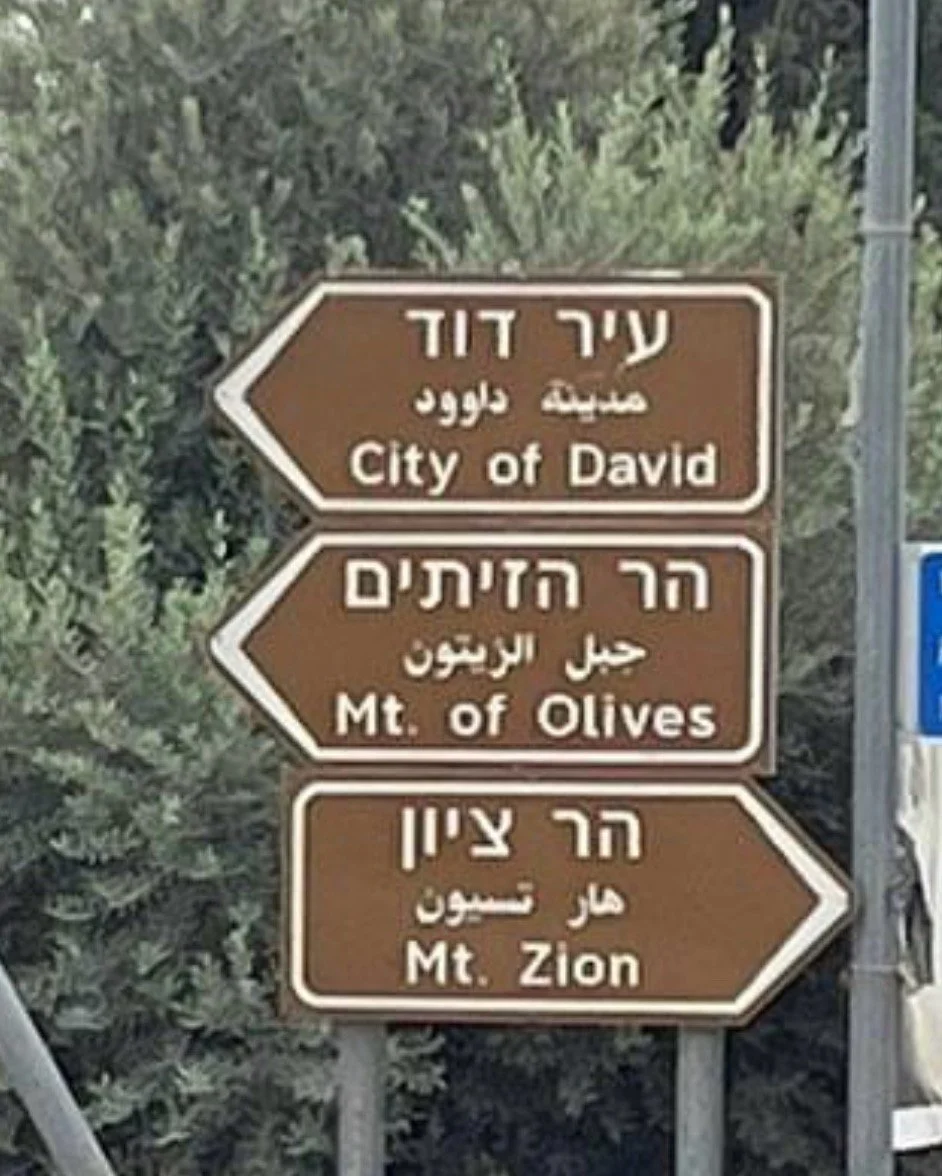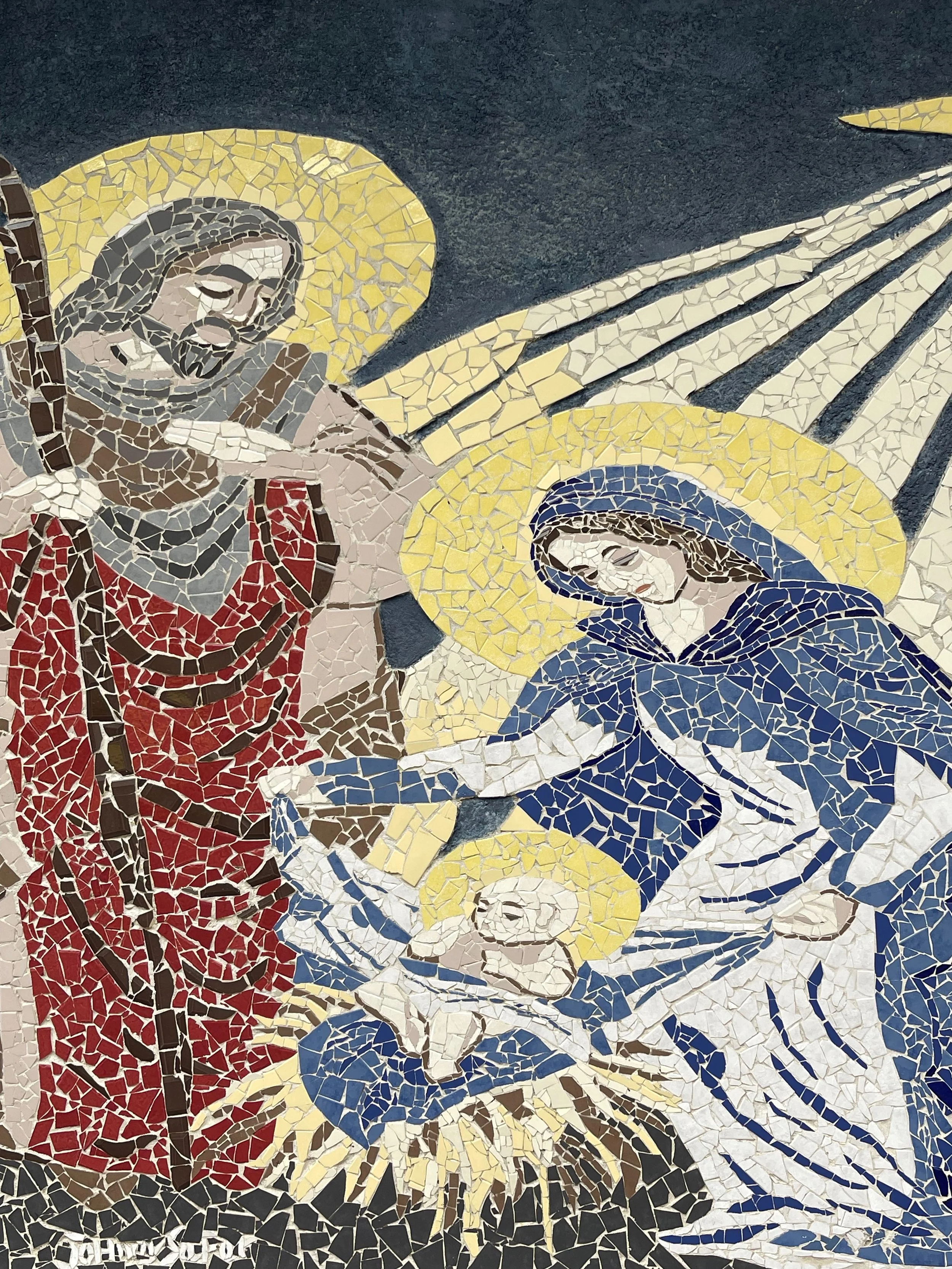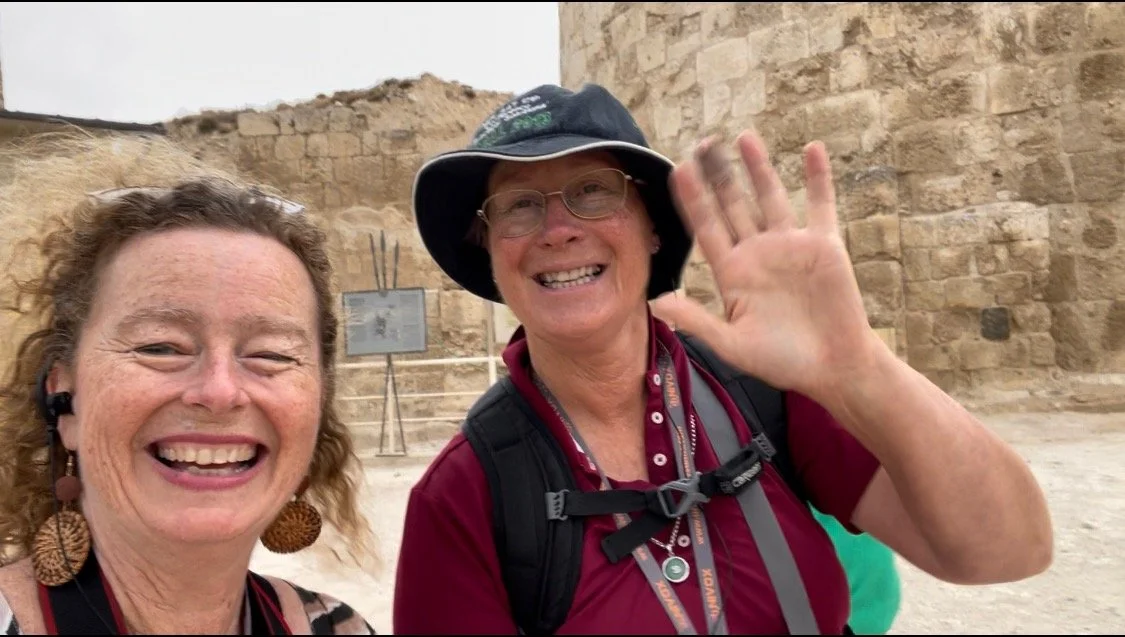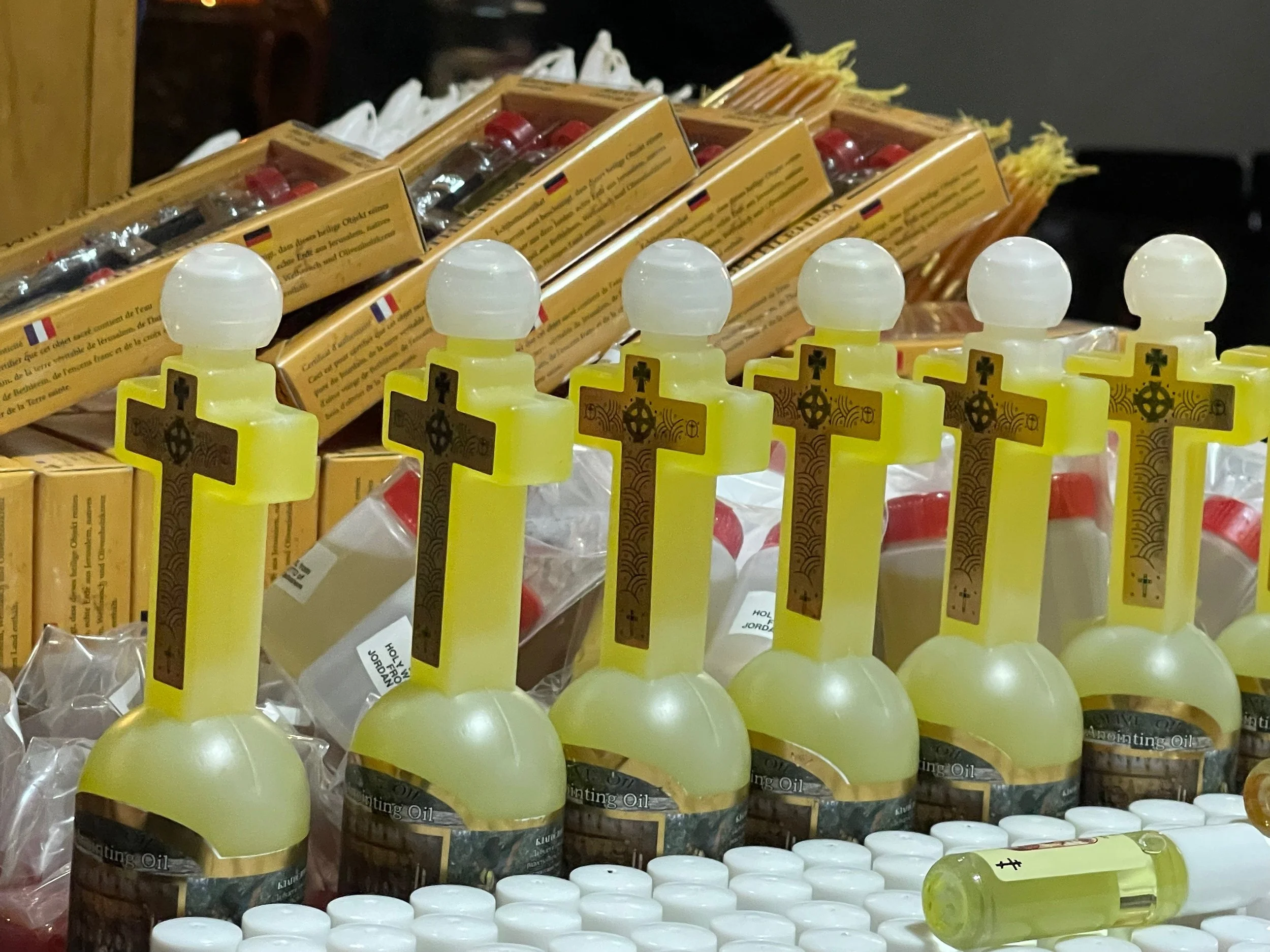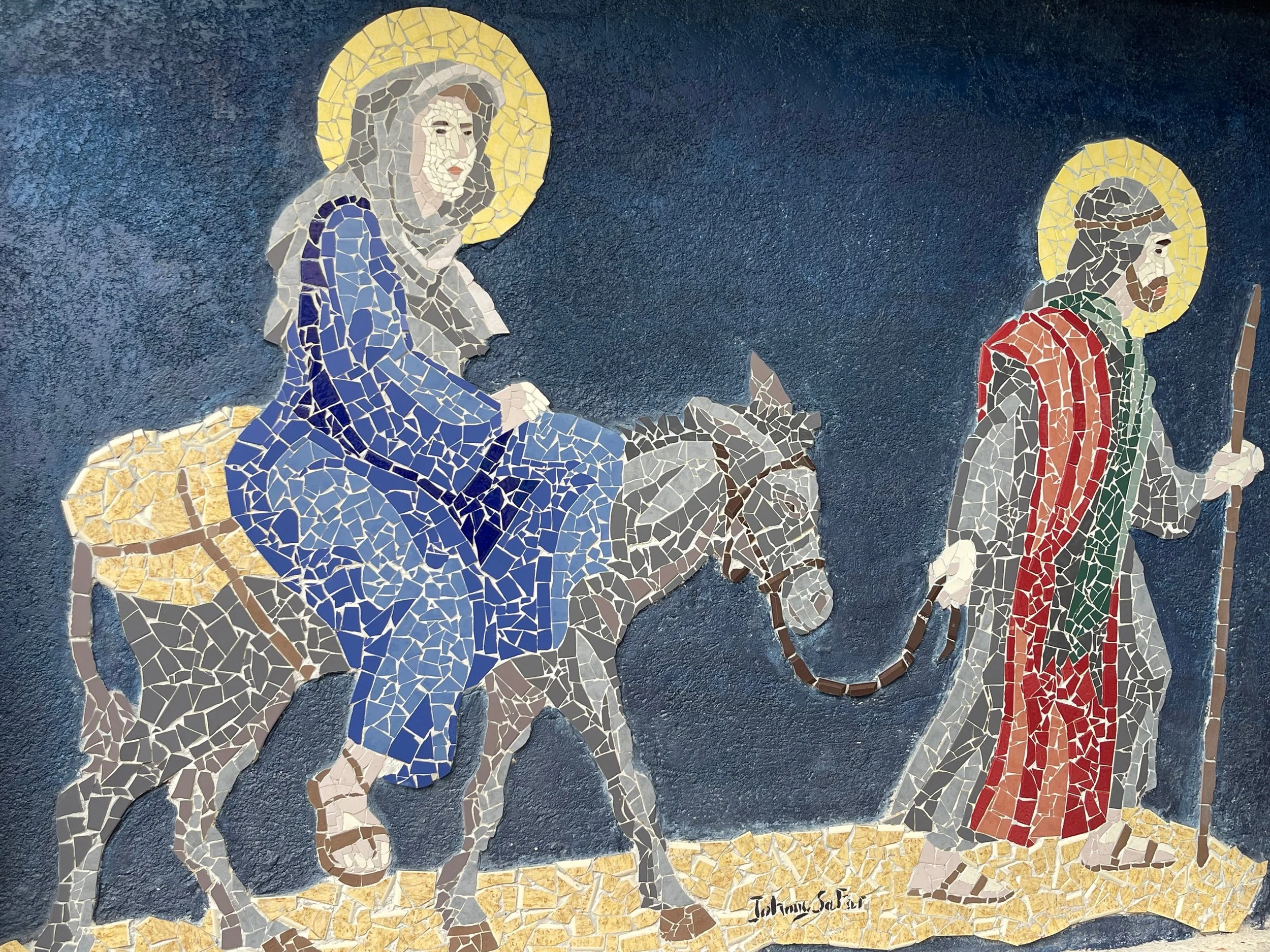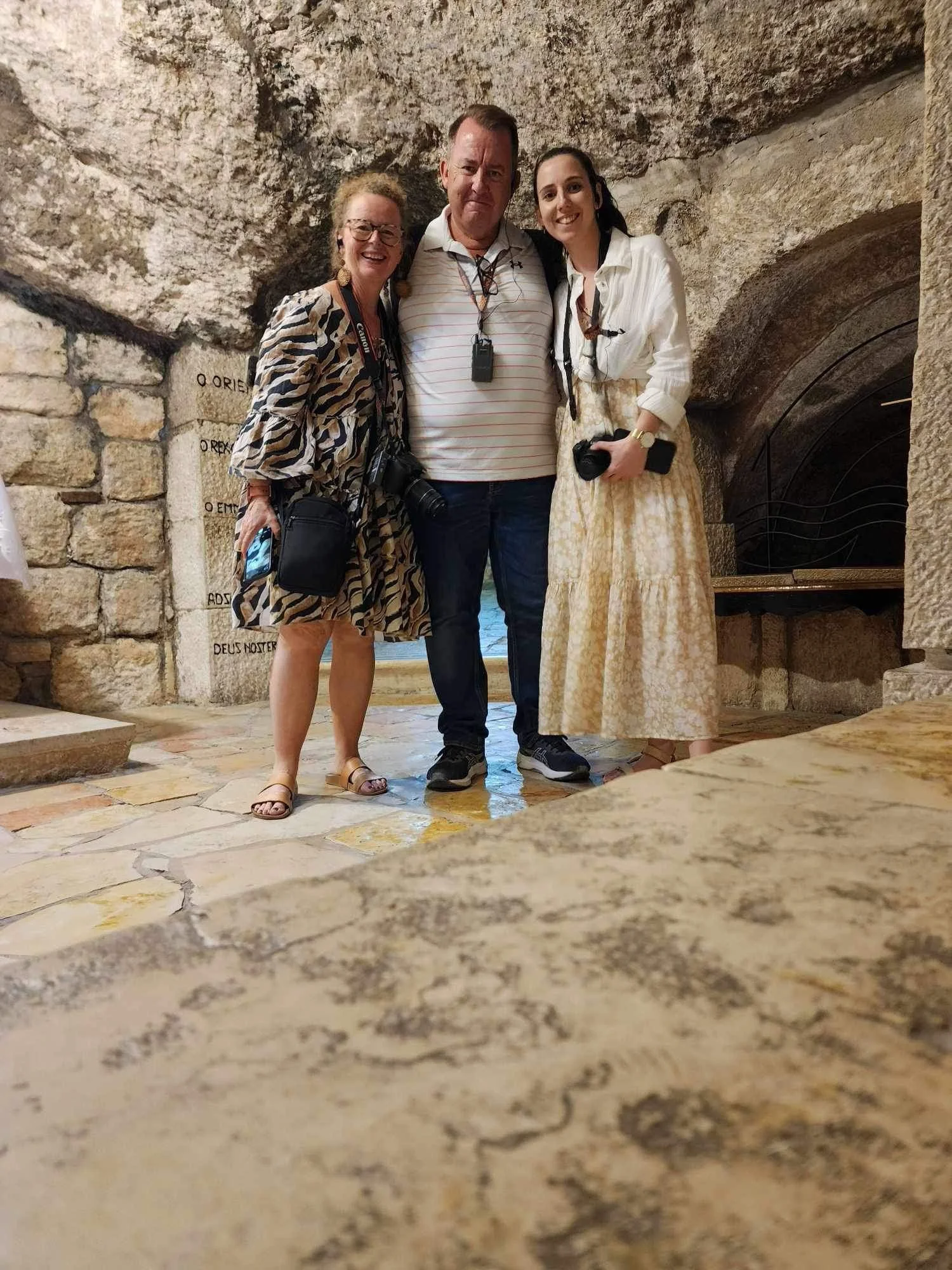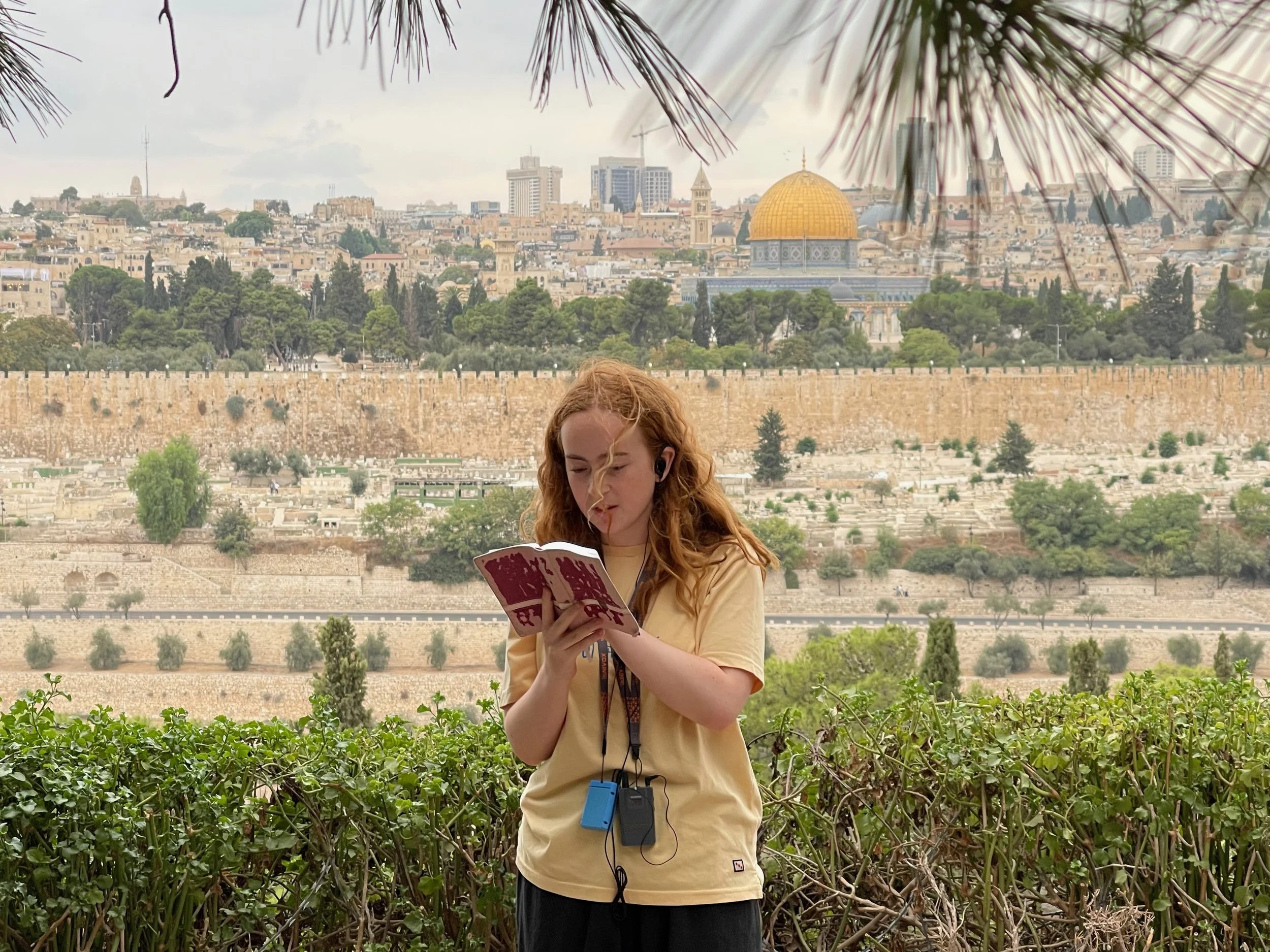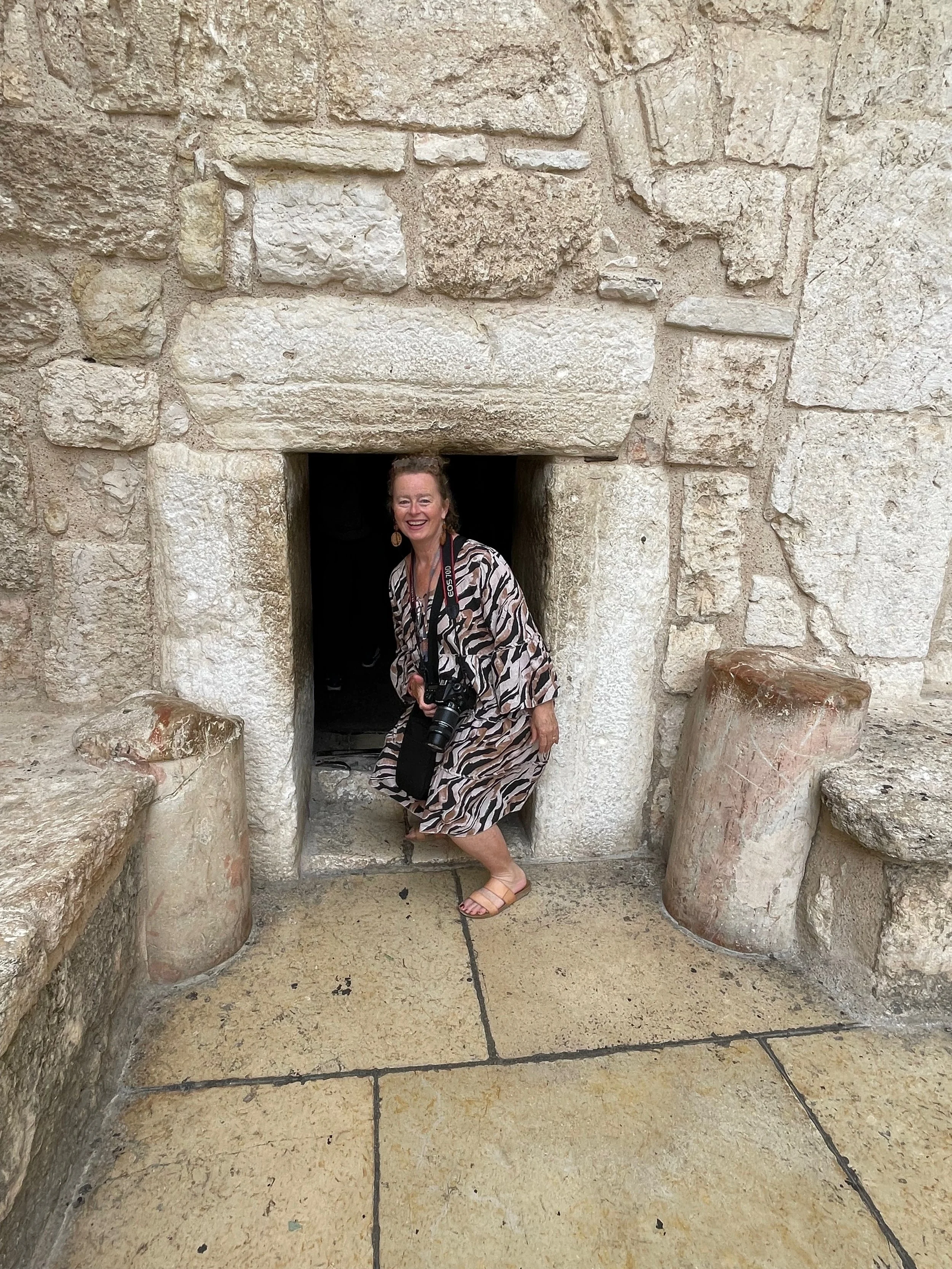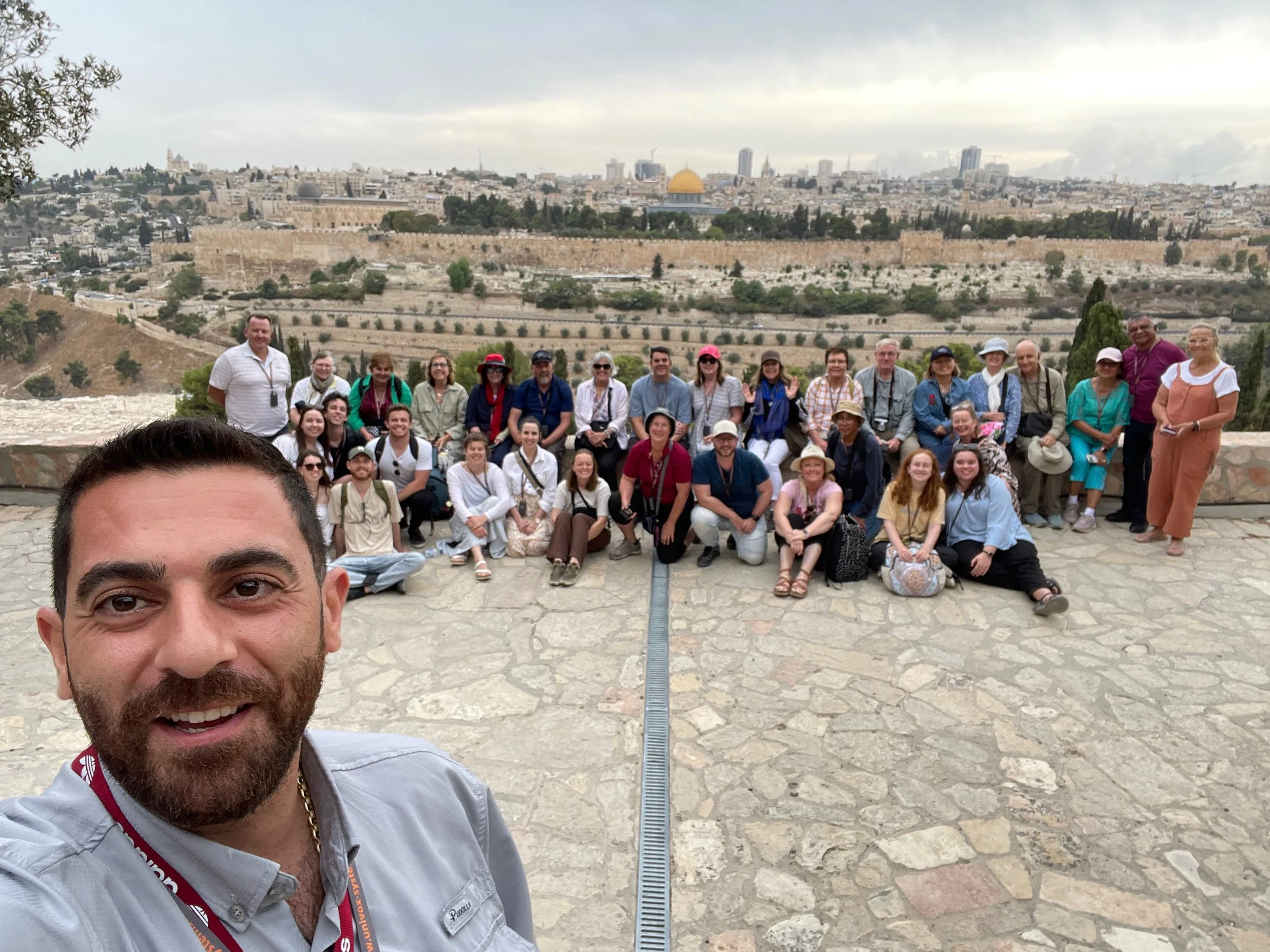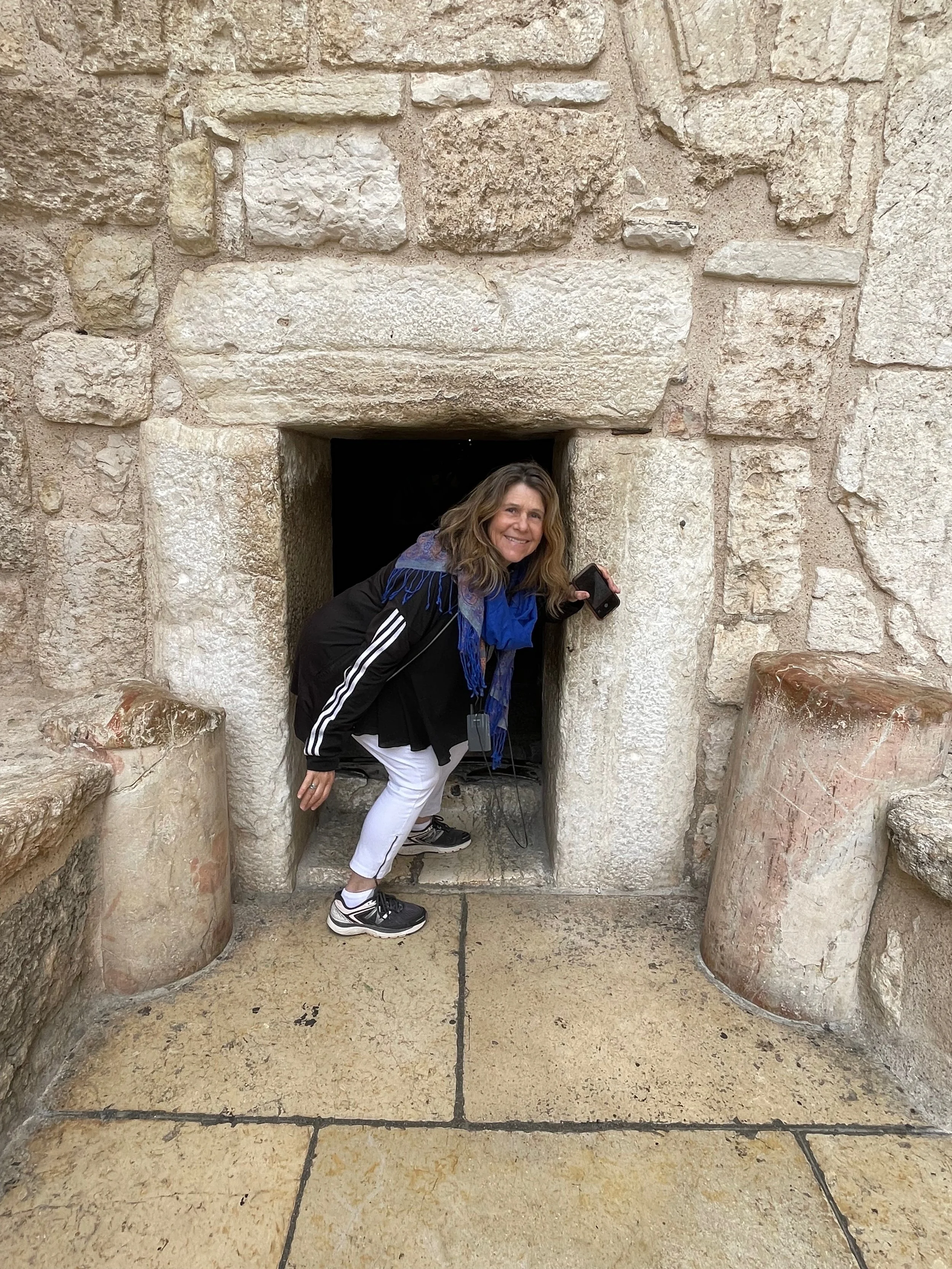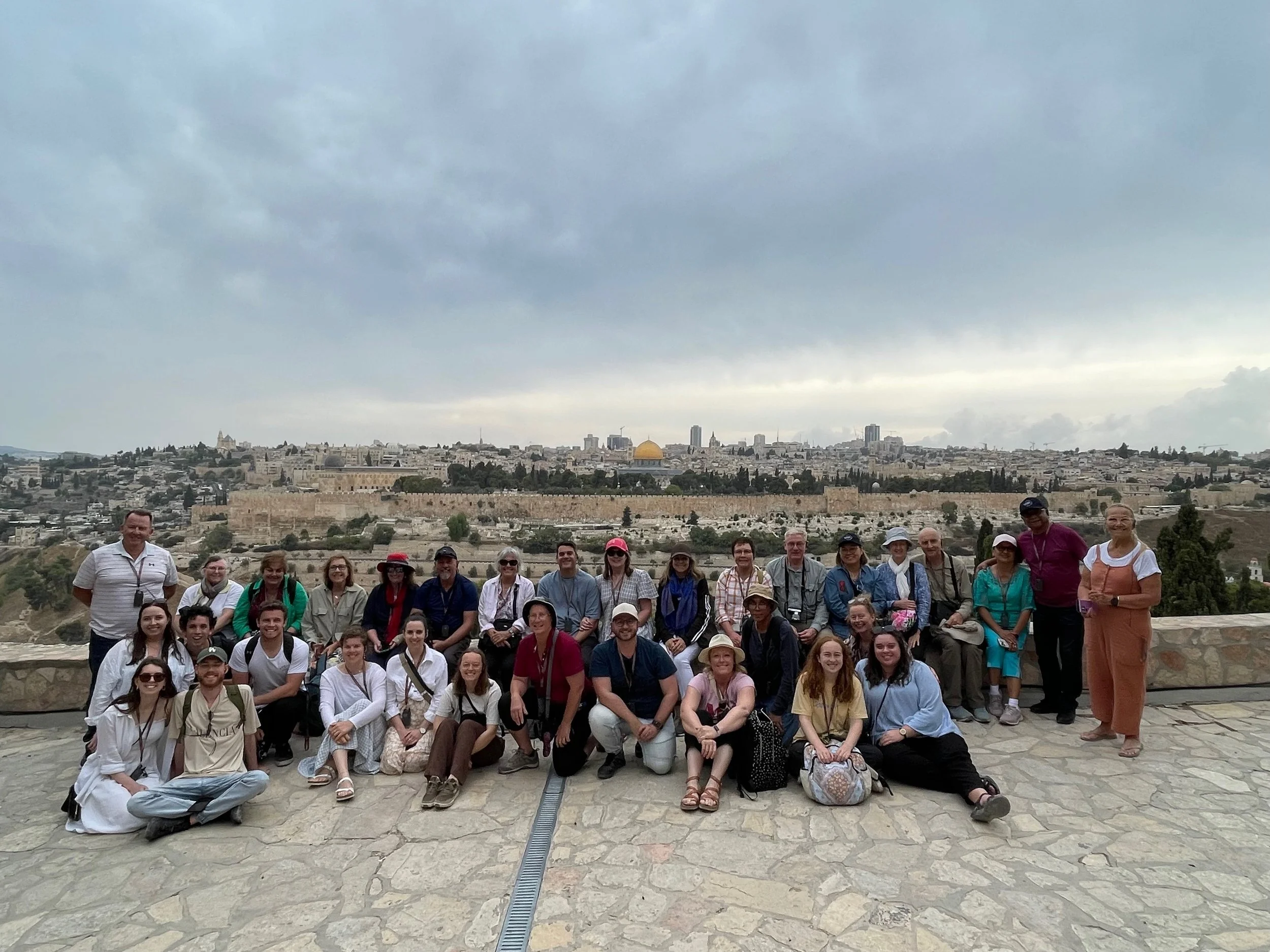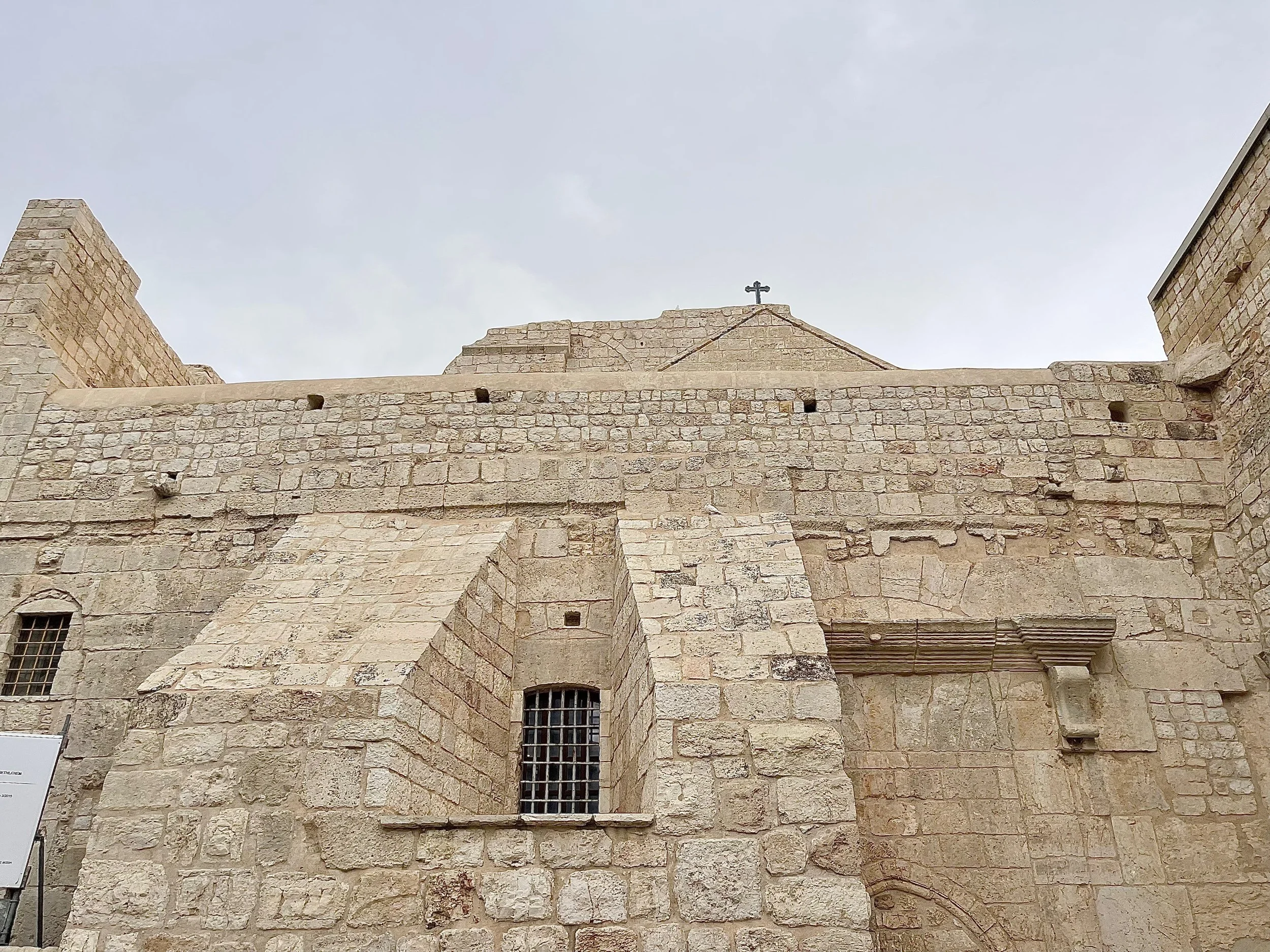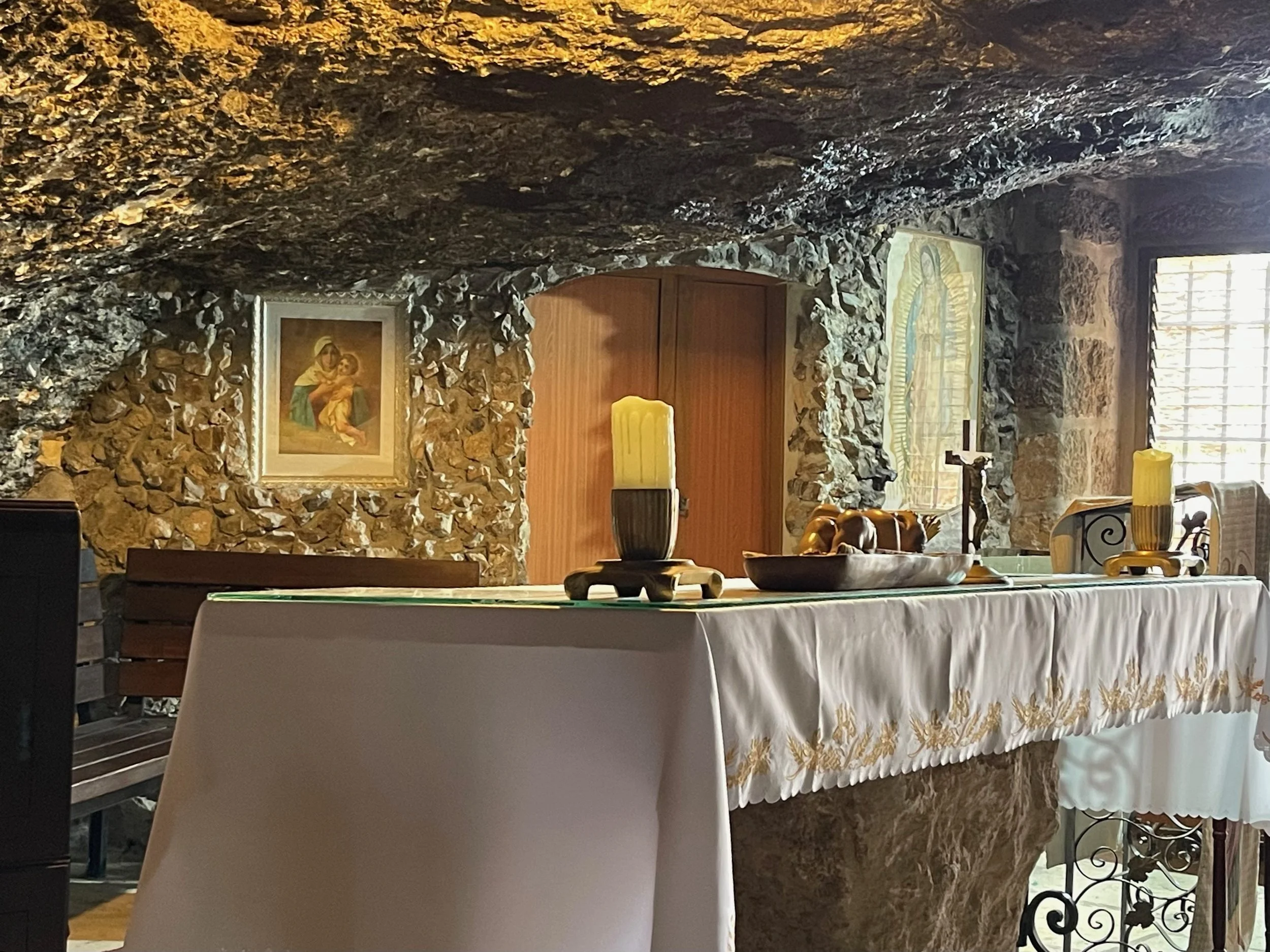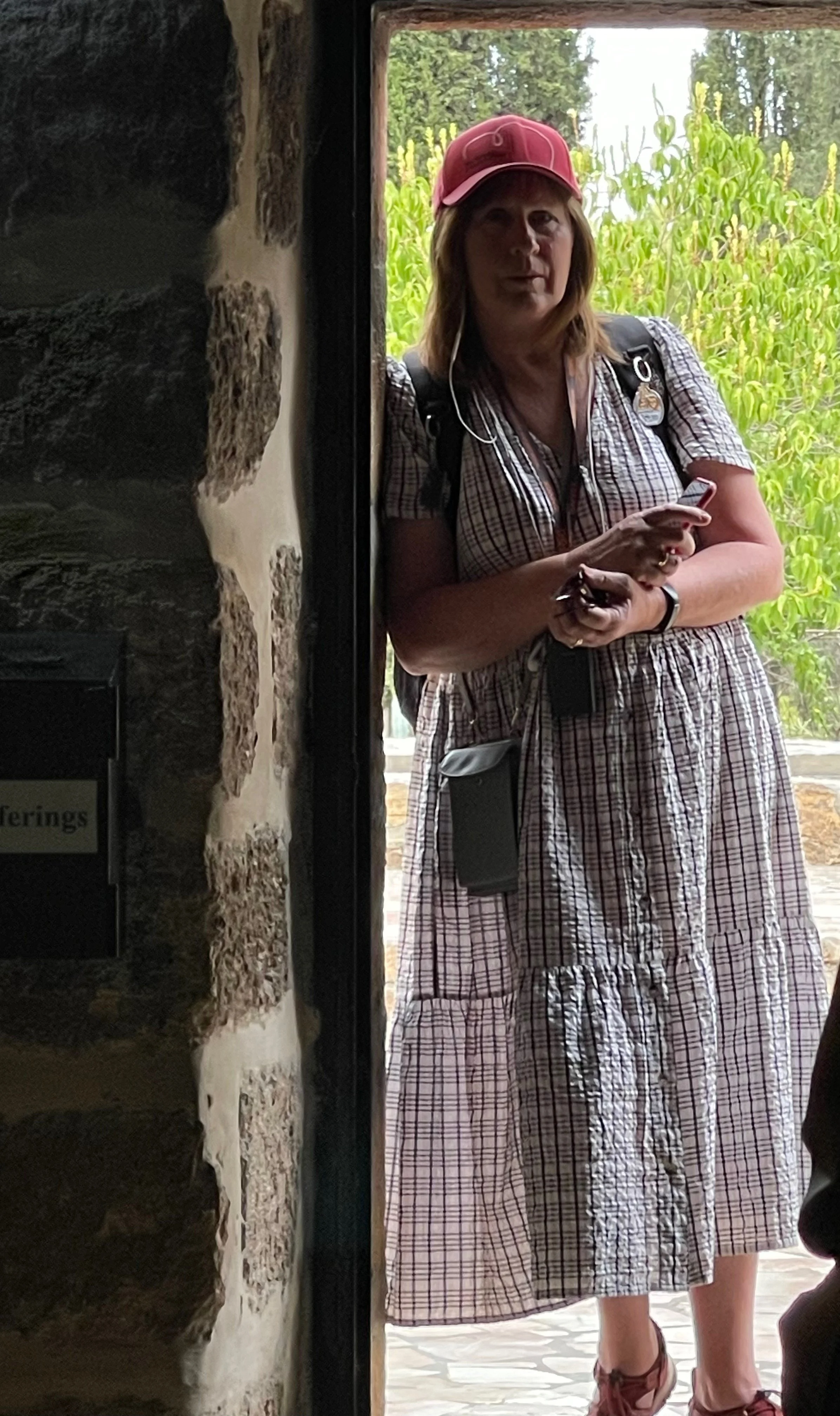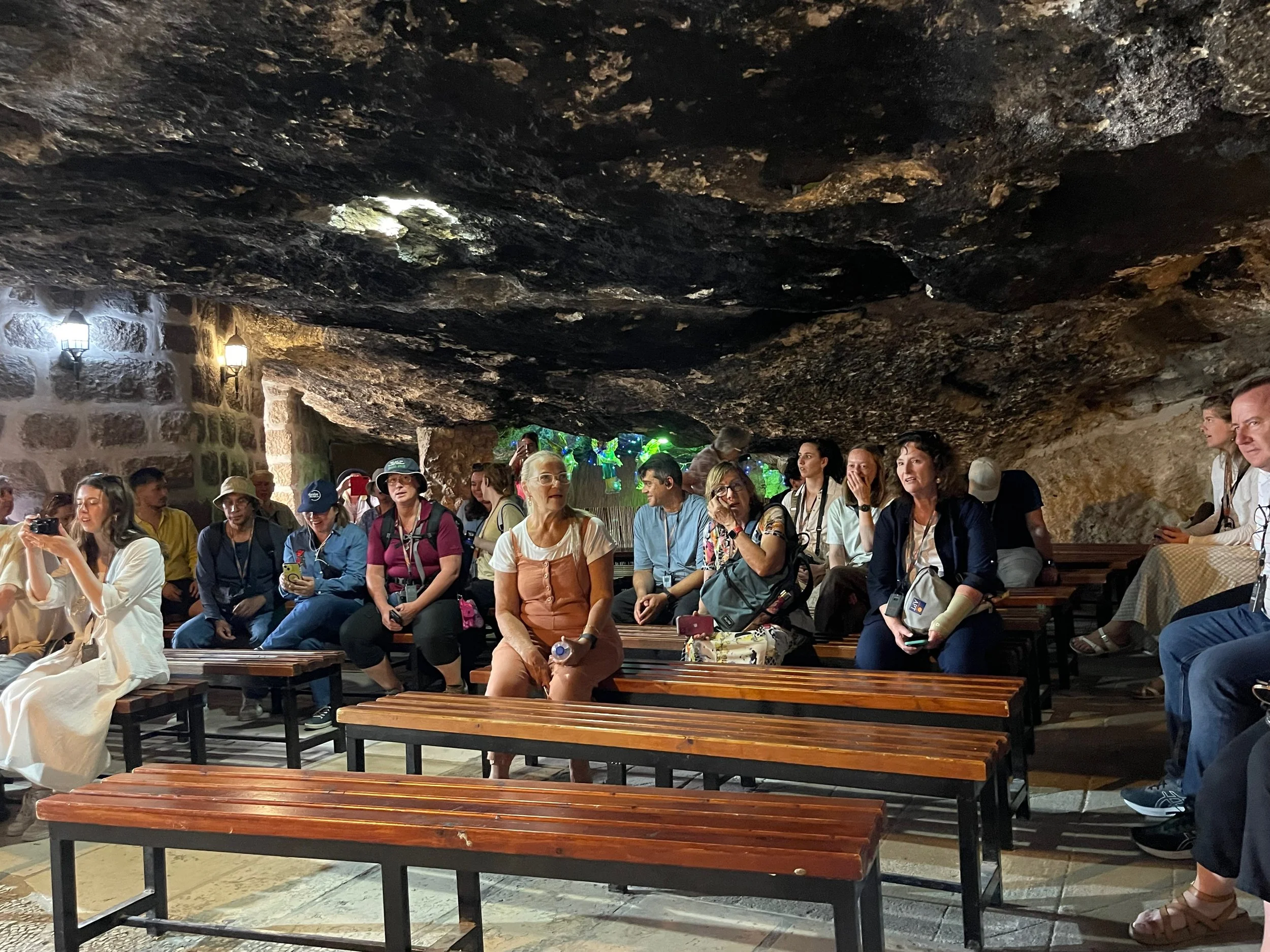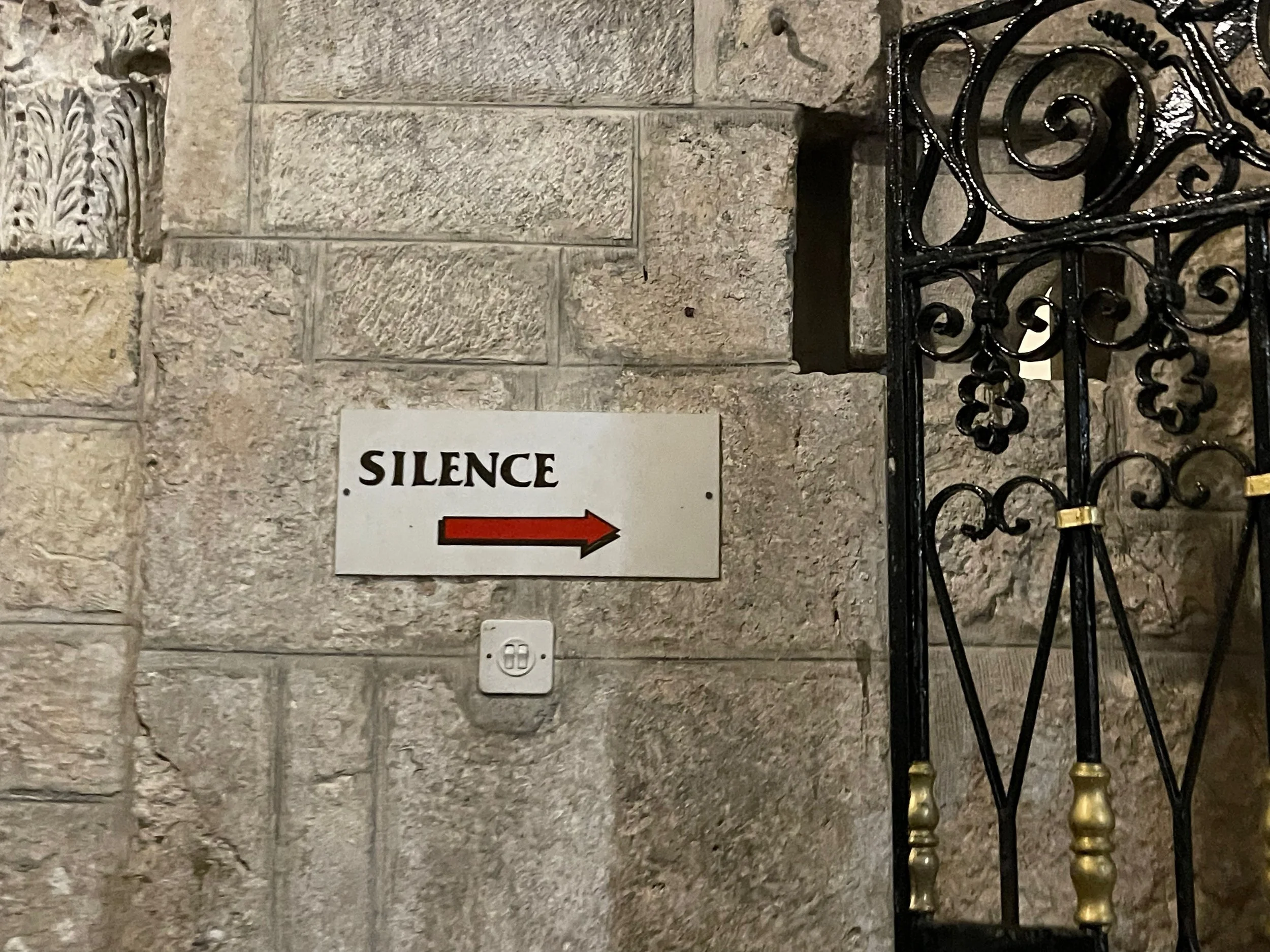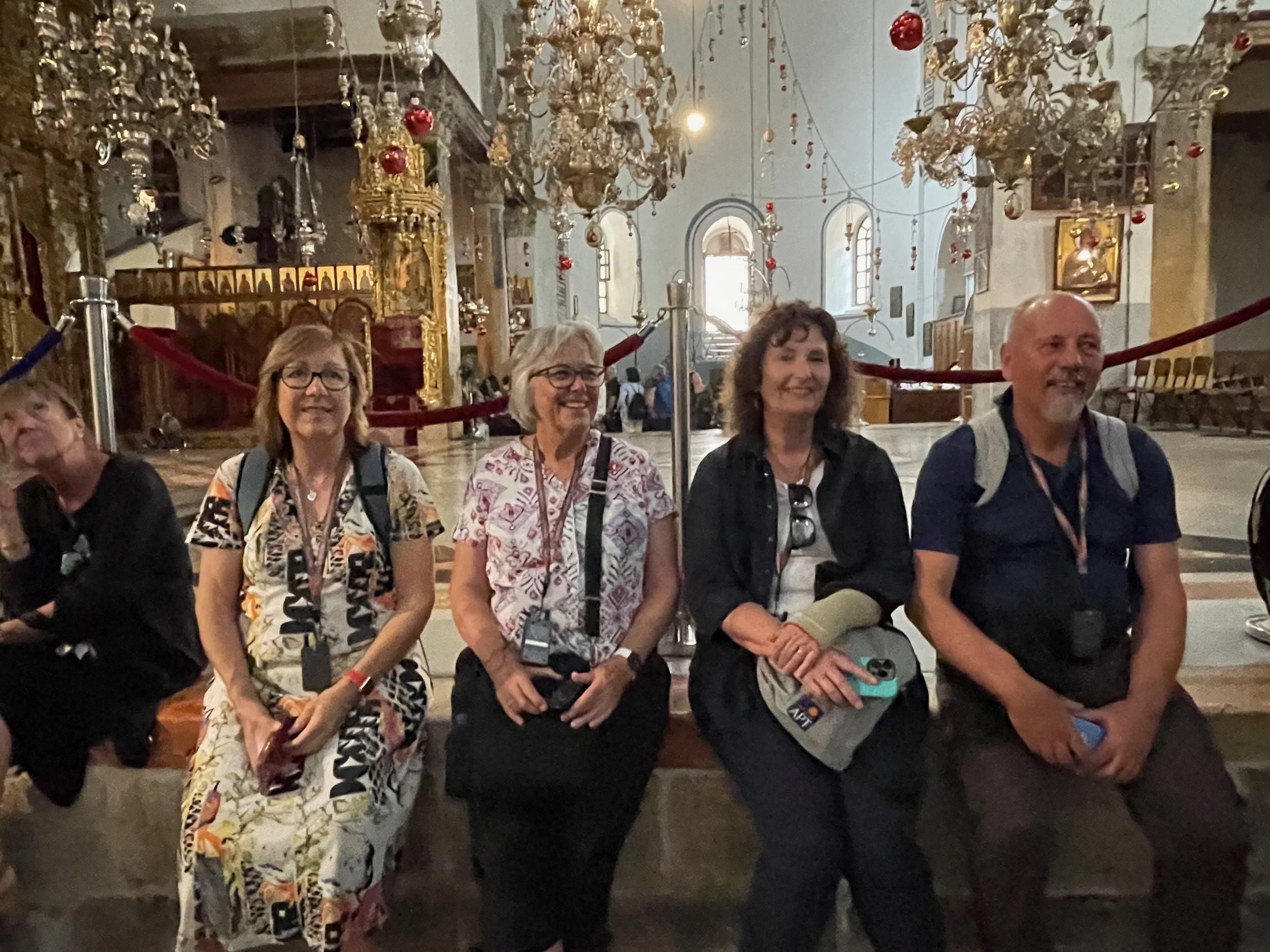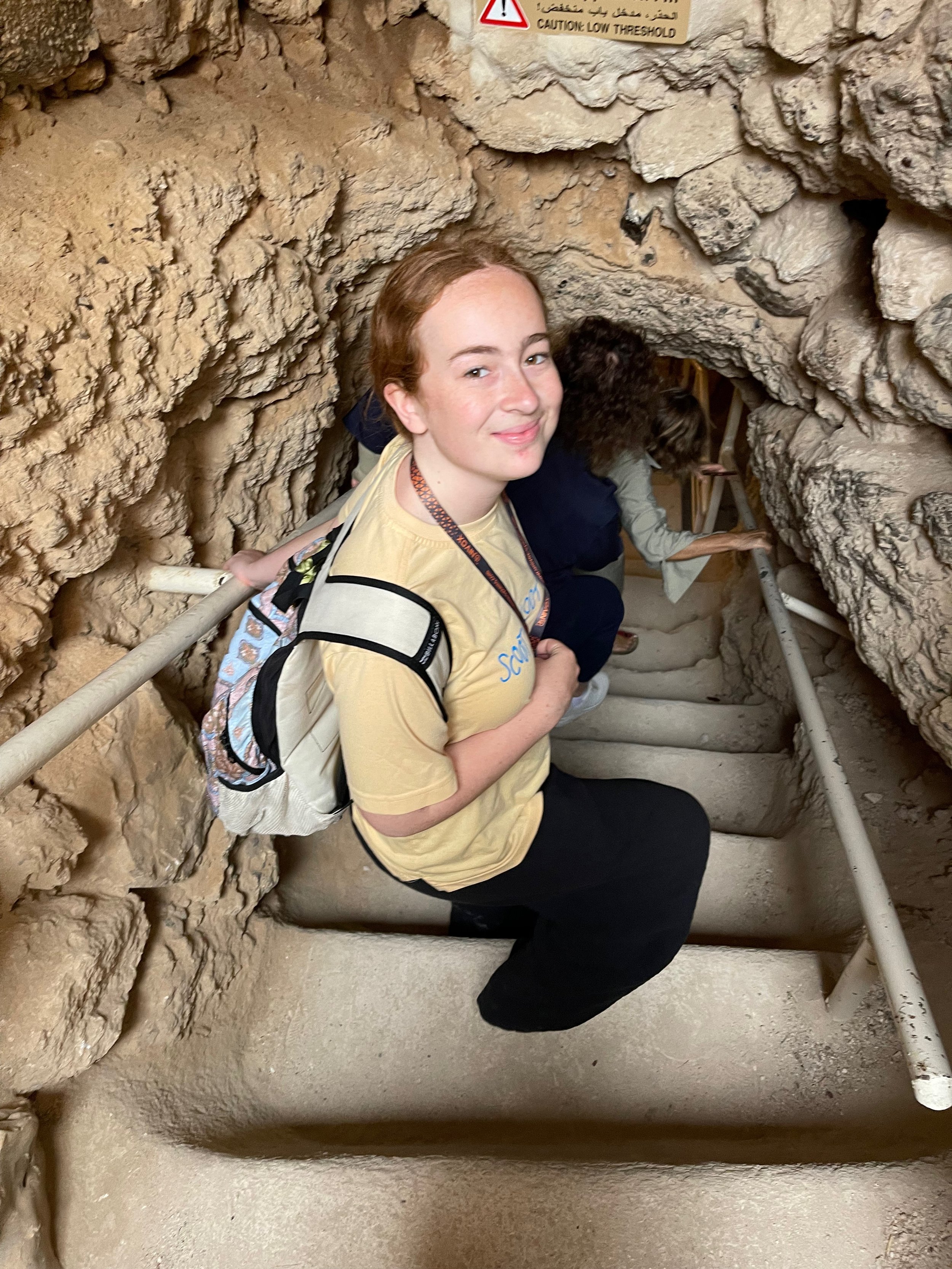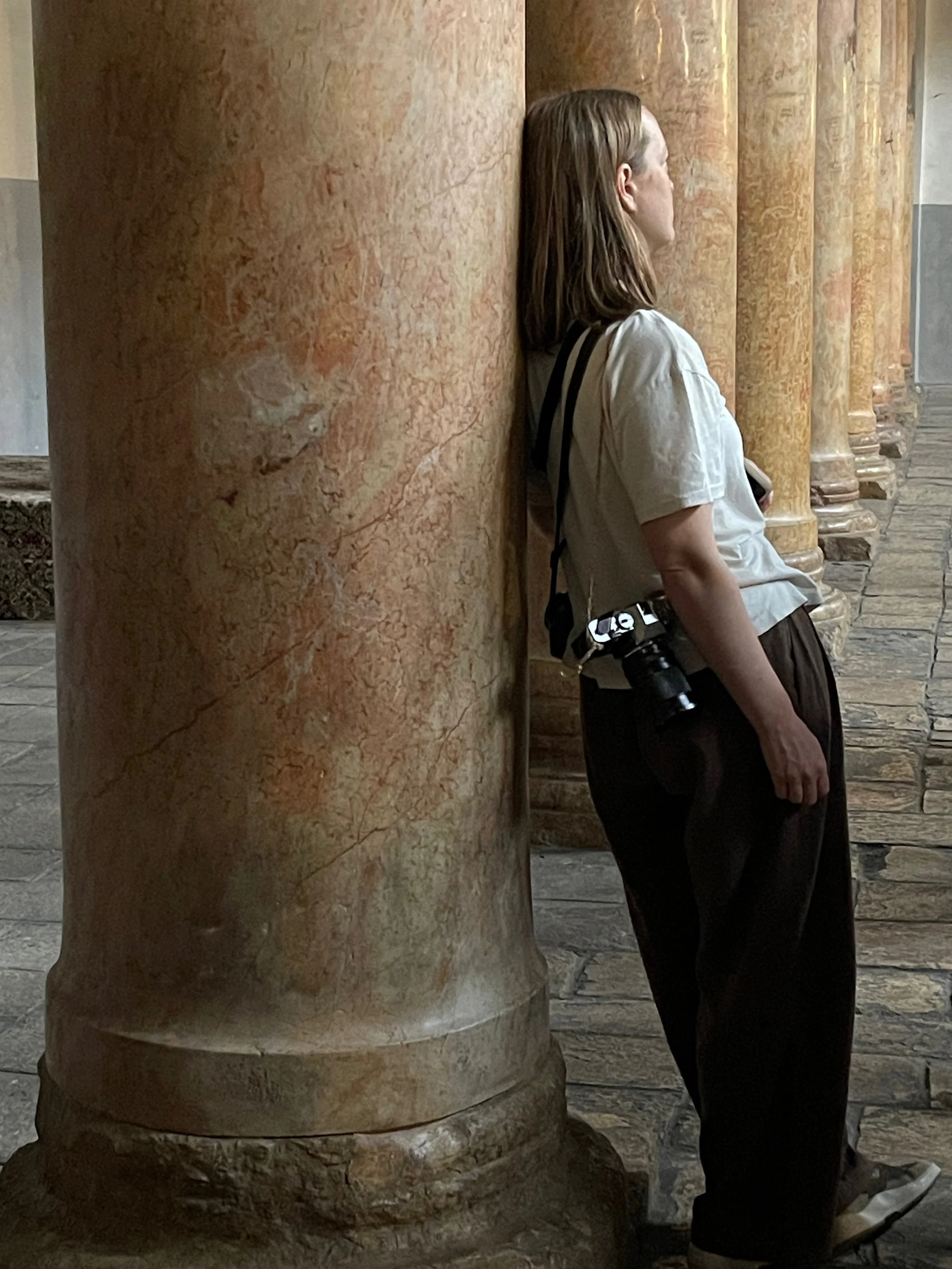O Little Town Of Bethlehem
As we hit the road today, Fadi commented that it “smells like a big day”. Maybe as a side hustle, he could market that as his signature scent? Big Day. It could sit on the shelf right beside Teen Spirit.
Our agenda this fine day was jam-packed with Jerusalem must-sees and time was of the essence. No time for dawdling, Fadi was on a mission to get us to all our designated spots, not losing anyone, before the day was done.
Denise reminded us all to pack our passports as, at some stage, we’d be crossing into the politically volatile West Bank. Travel from Israel to Palestinian territory is drama free - no checks necessary at all, but coming back from the West Bank into Israel can be a bit more tricky. We would probably have to show our passports and could be held up in the process. Oh well, we’d cross that bridge/checkpoint when we came to it.
As we motored along the road from Jerusalem, we came across a shepherd, keeping his little his flock in line. Shepherds and their sheep have been wandering these hills for centuries and it was such a novelty to see this young, energetic shepherd guide his wooly charges across the road in front our our bus. From a long way off, as we approached Herodium, we could spot the man-made mountain in the centre of of town. It really wasn’t hard to miss, towering above the boxy white houses below. Herod the Great named the town in his honour and didn’t have a humble bone in his body. He also lied about being great because in actual fact he was a tyrant. This King of Judea was cruel and heartless, reported to have been afflicted with such paranoia he executed his “favourite“ wife, to keep her from being unfaithful and then proceeded to keep her in a giant jar of honey for seven years after she died. What a guy.
Though not much in his personality made Herod “great”, the one thing he was pretty good at (Herod The Pretty Good) was building stuff, not that he was on the tools himself, mind you. With the help of his countless slaves, he constructed for himself a swanky palace and then hid it inside a “breast-shaped” mountain he had made himself. From the outside, you would never suspect there was a palatial residence stashed within. It just looked like an ordinary mountain.
We’ve discovered Israel has a LOT of hills and consequently a LOT of stairs. (Stairmaster salesmen would go broke here). Herod’s Palace was a long way up. About halfway up the steep mountainside staircase, we were led to a platform that looked out towards Bethlehem and beyond. The landscape was dotted with olive groves in neat rows; their soft green standing out amongst the pale hues of the Lego-like Jerusalem stone houses, set on sandy soil. Patches of dry, brown grass with scattered white rocks made up the rest of the arid surrounds.
Our group was ushered into the remains of a room in the palace, where we were treated with a brilliant animation, projected onto the walls and reconstructing the elaborate frescoes, paintings and pillars of the original room - filling in the missing pieces. It was so cleverly done. An ancient history lesson with a difference!
We ascended even more steep stairs to view the vast array of ruins on show up the mountain. Different rooms still existed, including the bathroom, and the panoramic views across to Bethlehem and back to Jerusalem, were absolutely sensational. Nothing like constructing your own mountain. Position, position, position. The palace was as deep as it was high and we also descended the stone steps through some tunnels that opened out to a roomy basement with so much space.
Since the day we were first acquainted with our faithful guide, Fadi, he has been talking up the shopping in Bethlehem. Whenever we would stop in a shopping district, he’d say something like: “well, you can buy it here if you want, but I’m telling you, when we get to Bethlehem, the shopping will be great.” Lots of us were holding out, not buying anything until we reached this shopping Mecca - the little town of Bethlehem.
We pulled up outside the much-awaited destination and piled inside to find some bargains (and possibly some of Fadi’s long-lost cousins) and were guided to a corner where the proprietor gave our gathered crowd a demonstration of his special necklace, “only available in the Holy Land”. This very unique necklace can transform from the Jerusalem Cross and, when you open it “this is significant…it turns into the wall of Jerusalem. It’s like the magic you know”. He then went on to assure us: “It very easy to return it back to be nice necklace to wear every time and every where”. Hard to resist.
Apart from a small “nice necklace” jewellery section, most of the shop was dedicated to wood, with just about any item you could dream of, available as a hand-carved wooden trinket. Animals, birds, people, bowls, spoons, lamps, statues…you name it, they had it. There were also giant-sized nativity scenes - fit for a hotel lobby - that might be a challenge to fit into the 30kg limit for the suitcase on the way home. We all felt such loyalty to Fadi, we felt obliged to make a purchase. I bought a little wooden donkey and a Christmas decoration though I had been hoping for a ‘My wife when to Bethlehem and all I got was this lousy shirt’ tee for Ross. If I’d looked a bit harder, they probably have had it in wood.
We have been in the habit of grabbing a few extra snacks and an apple or two from the extensive breakfast buffet, to have for lunch. Our bus had dropped us in downtown Bethlehem for lunch but we couldn’t find anywhere to sit down and munch the sandwiches we’d brought along with us. Though there was a big park in town, the strict sign out front prohibited picnics (along with guns, smoking and cleavage) so we had to look elsewhere. The girls fancied a fresh pomegranate juice and the kind Pomegranate Juicer was happy for us to bring our home made lunch inside as long as we all paid for drinks. He was so accommodating, allowing us to push a couple of tables together and even bringing us some gigantic Jerusalem dates to try, on the house. He had a huge selection of chocolate bars and chips and also a random collection of leather wheely bags for sale.
What followed was essentially a church crawl, where we visited numerous places of worship, each with its own decor, set of paintings, mosaics, statues and unique façade. The first one, inside the no-cleavage-allowed-park, had beautiful murals of the nativity story and fantastic acoustics. We spontaneously belted out a couple of Christmas carols that sounded amazing (if we do say so ourselves).
It seems Bethlehem is really making the most of their fame as the Saviour of the World’s birth place. We saw the Nativity Bells Hotel, The Prince of Peace Bazaar, multiple street stalls selling crowns of thorns and other Jesus related merch and I believe the Bethlehem Inn, where you can now get an upgrade from the stable, has Nativity Beer on tap.
The most famous of the churches in Bethlehem is the Church of the Nativity, said to be built on the very site of Jesus’ birth and the oldest site continuously used as a place of worship in Christianity. The doorway is tiny, forcing you to bow down as an act of reverence to God as you enter. We were immediately struck by the sheer volume of stuff in there. It’s so busy! Every inch of the interior of the church is covered in intricate carvings, haloed icons, sparkly mosaics, dangling lanterns, ornate ceilings, baubles and bells. There were huge chandeliers that Liberace would’ve loved and an 800 year-old 24 carat gold mosaic. No expense had been spared to deck out this gilded religious wonderland. The church was bustling with tourists and there was some pushing and shoving as everyone scrambled to step-down into the grotto, a cave-like basement where it is believed Mary huffed and puffed to deliver our Lord. It was quite an experience and a far cry from the quiet little town of Bethlehem portrayed on our Christmas cards.
Thankfully we were able to drive back across the border into Israel from the Palestinian West Bank without a hitch and without even having to show our passports. Only our driver Moses, who is actually a local in Bethlehem, had to cough up his documents. What a relief.
Another church to tick off our list today was the Church of the Pater Noster, where the Lord’s Prayer is displayed on the walls, hand-painted on tiles in over 100 languages. It was really beautiful and it was amazing to see the diversity of all the different handwriting and cultures represented. In the Mount of Olives area, we made our way towards the Mount where Jesus is said to have wept before his crucifixion and then ascended after his resurrection. The views over to Jerusalem were magnificent and we wandered an ancient Jewish cemetery that covers the hillside and can be seen plainly from the other side. Plots of land are not cheap, costing between $US25,000 and $US150,000. The gravesites looked on the small side, especially given the asking price, but apparently the Jewish bury their dead wrapped in burial cloths rather than in coffins, taking up less real estate than usual. The bodies of many famous rabiis reside here so it’s a popular choice for the rich. You know what they say about the cemetery…everyone is dying to get in.
Maisy read the Bible passages set on the Mount of Olives while we were there, which was very cool, and Dean gave us a great little talk.
Our last stop, and a poignant one, was a visit to the Garden of Gethsemane. Fenced from the crowd the centre of the famous garden was full of gnarly old olive trees - some of which are over 800 years old. The amazing thing about the olive tree is that it can’t easily be killed and even after it has been cut down, shoots can spring forth and birth a whole other tree. The Gethsemane olive tree roots have been DNA tested by botanical experts, who found them to be a close DNA match to the trees that were in the garden when Jesus was alive. The roots of these trees are estimated to be a staggering 2400 years old. Wow.
